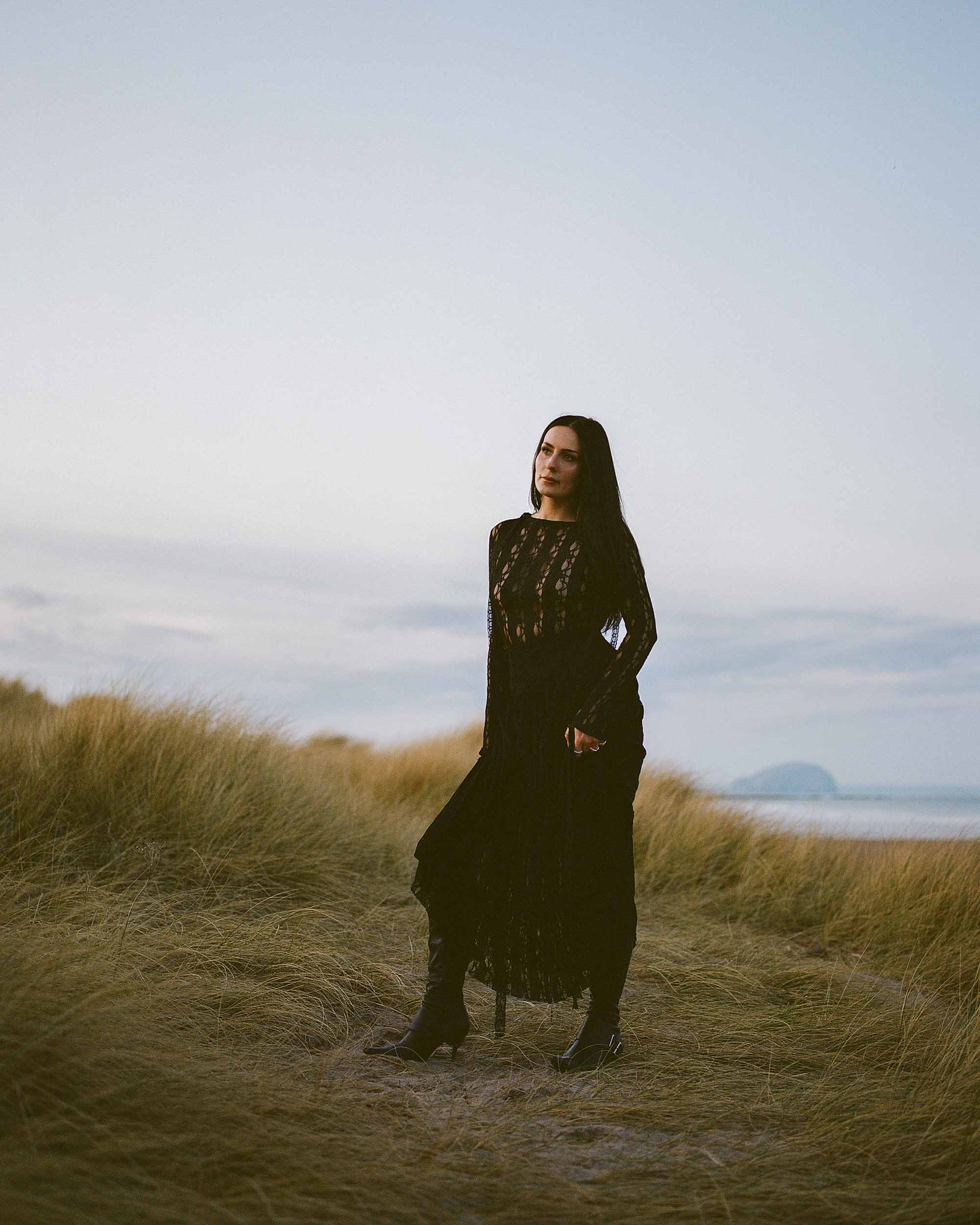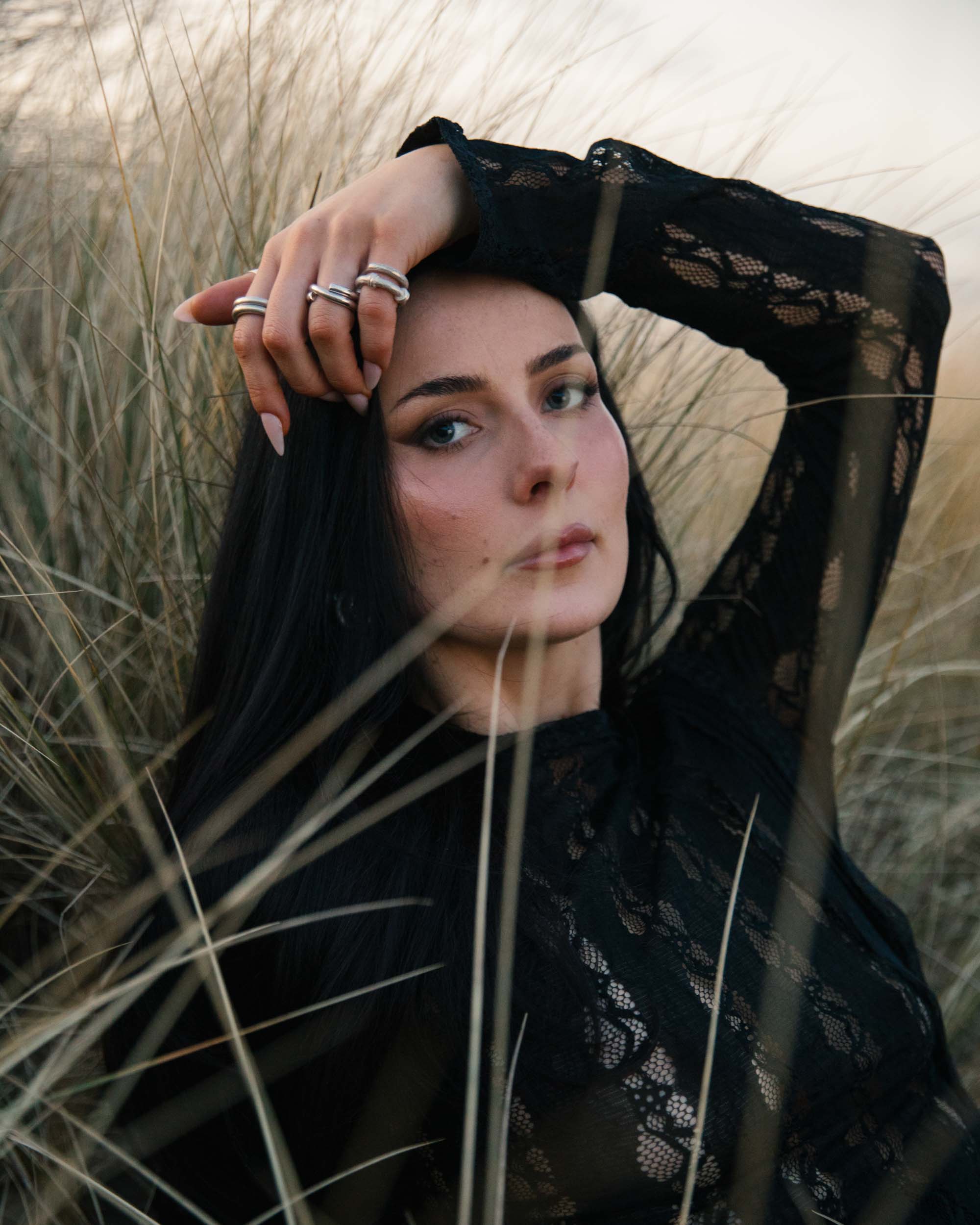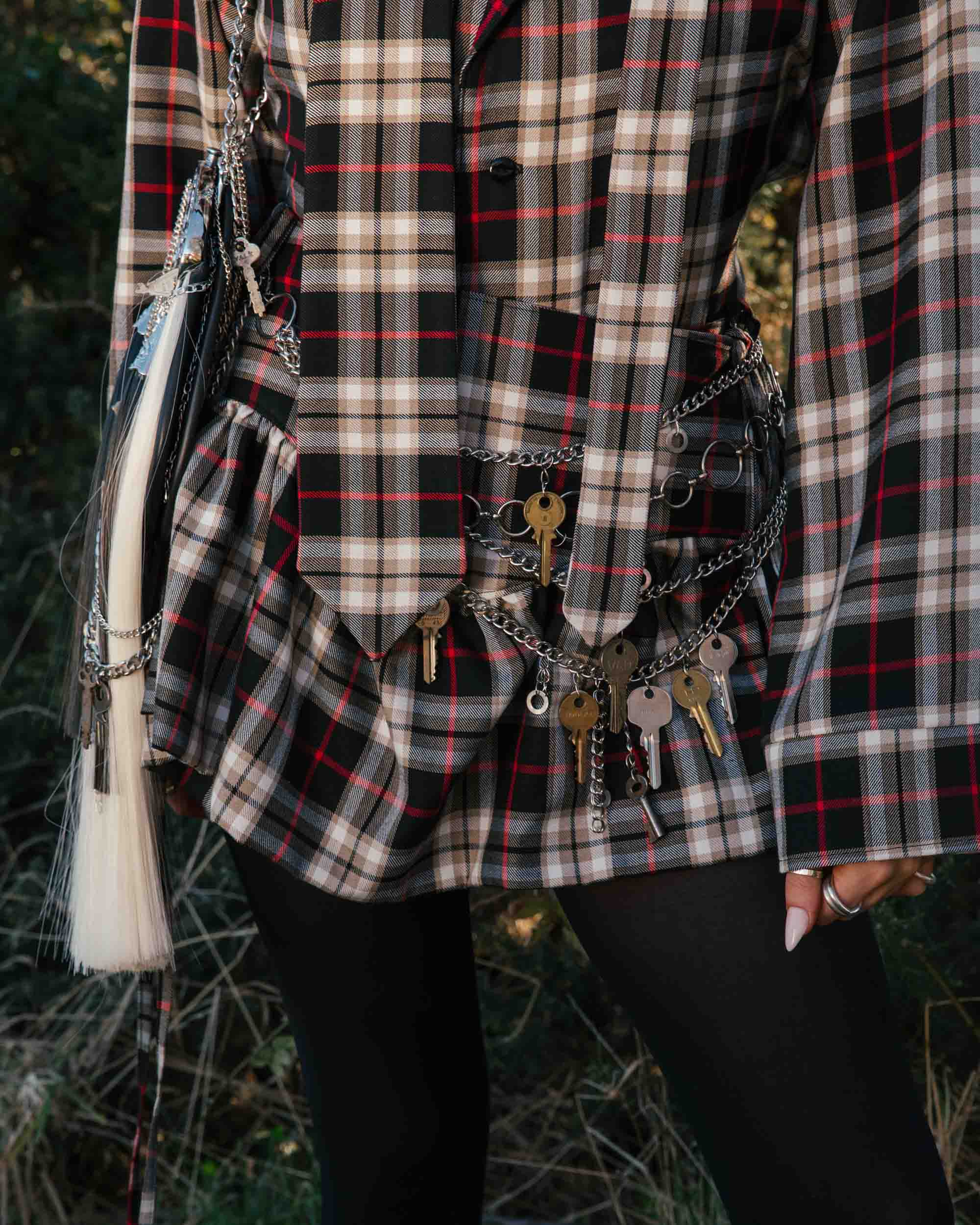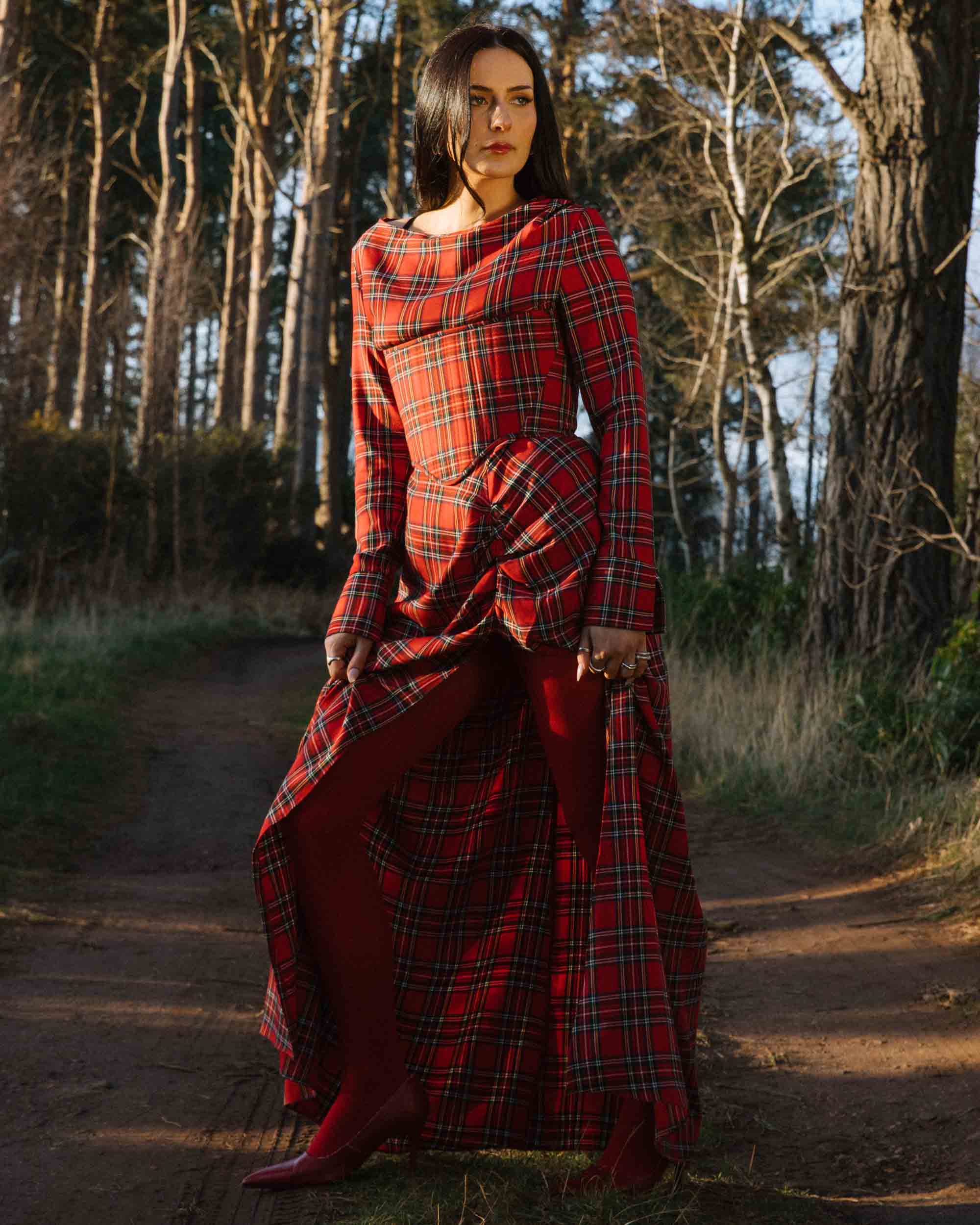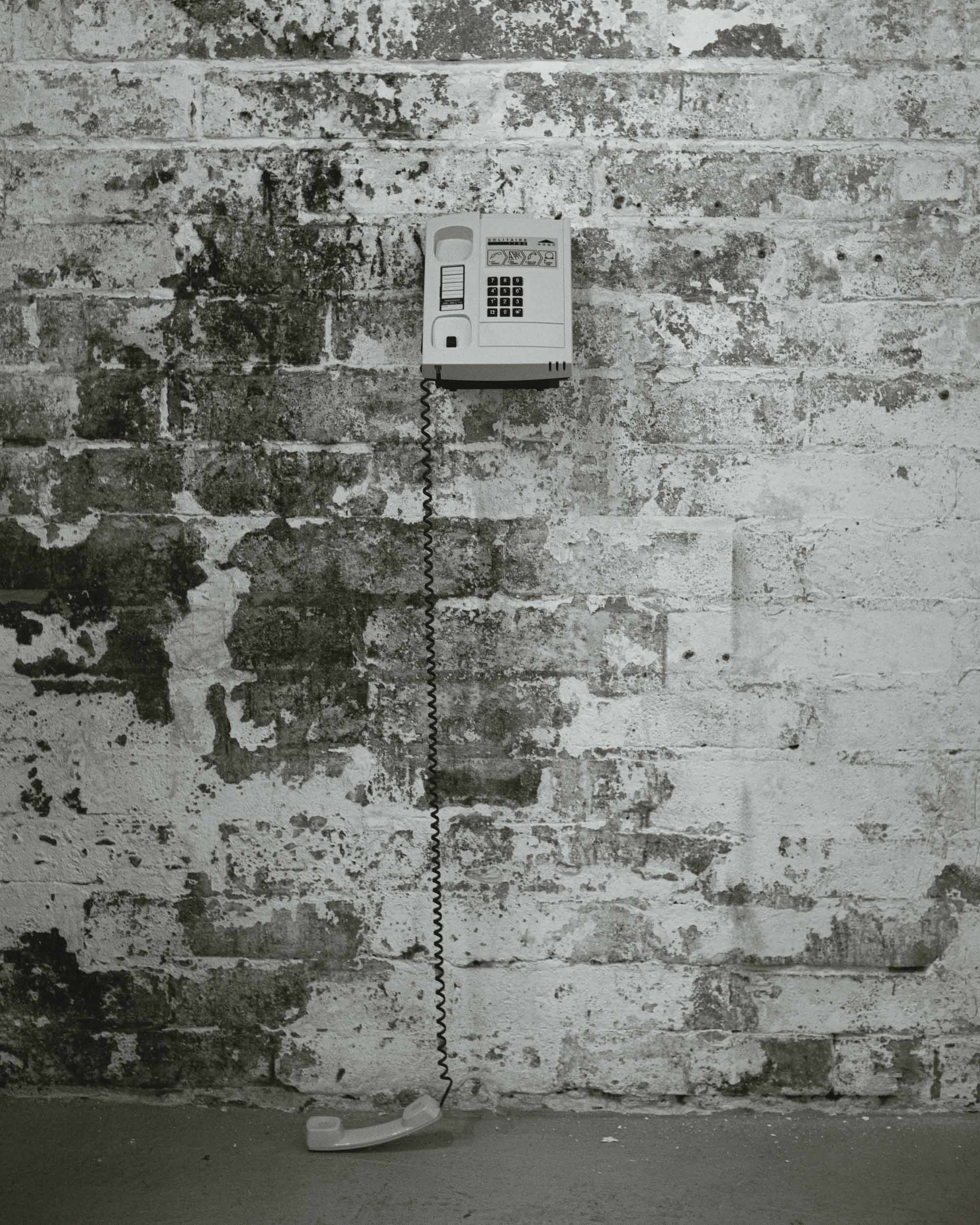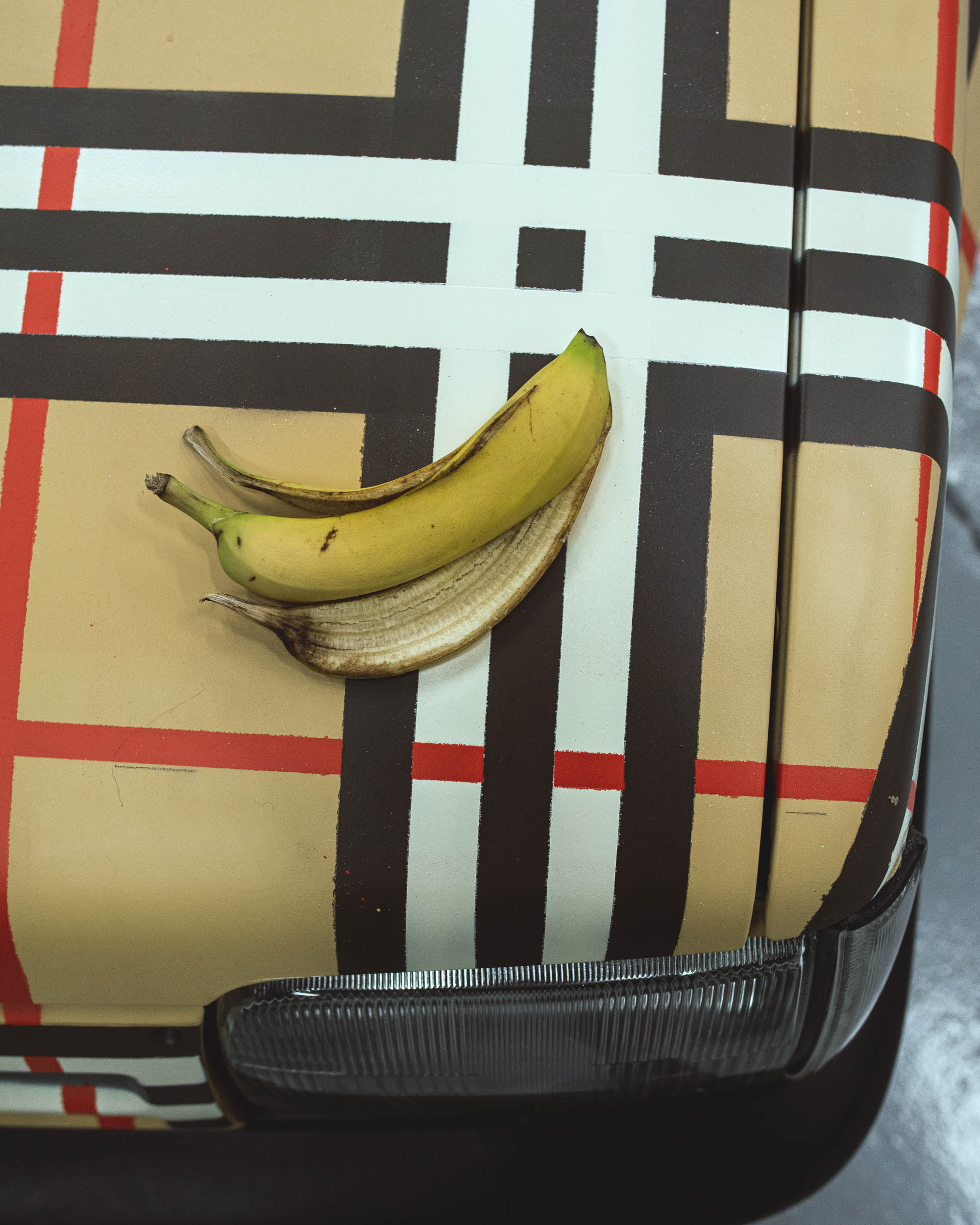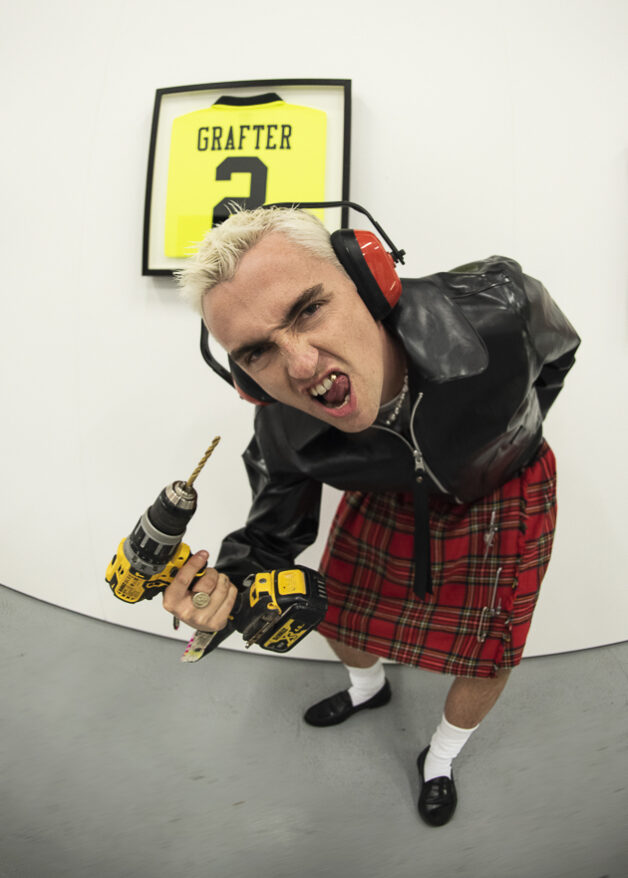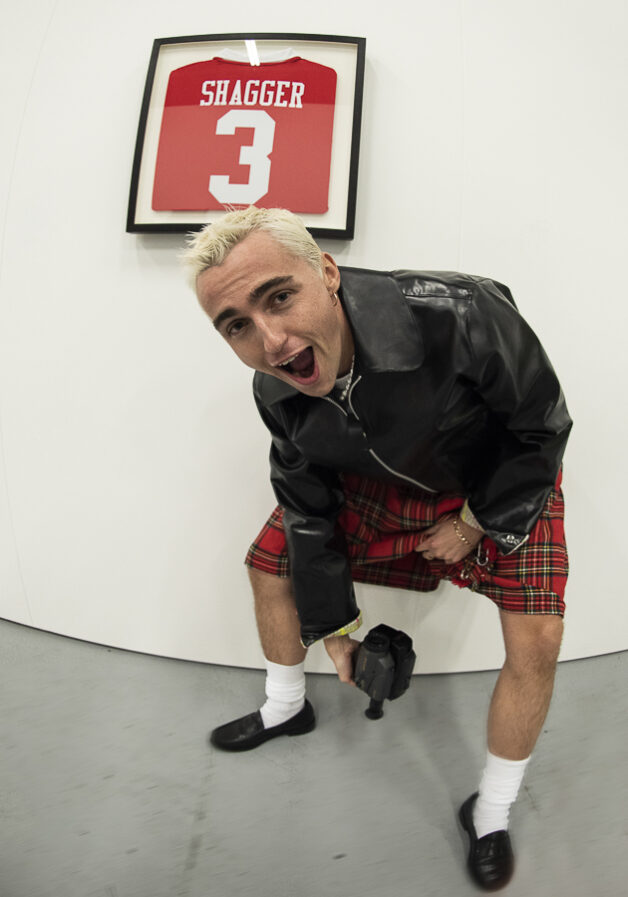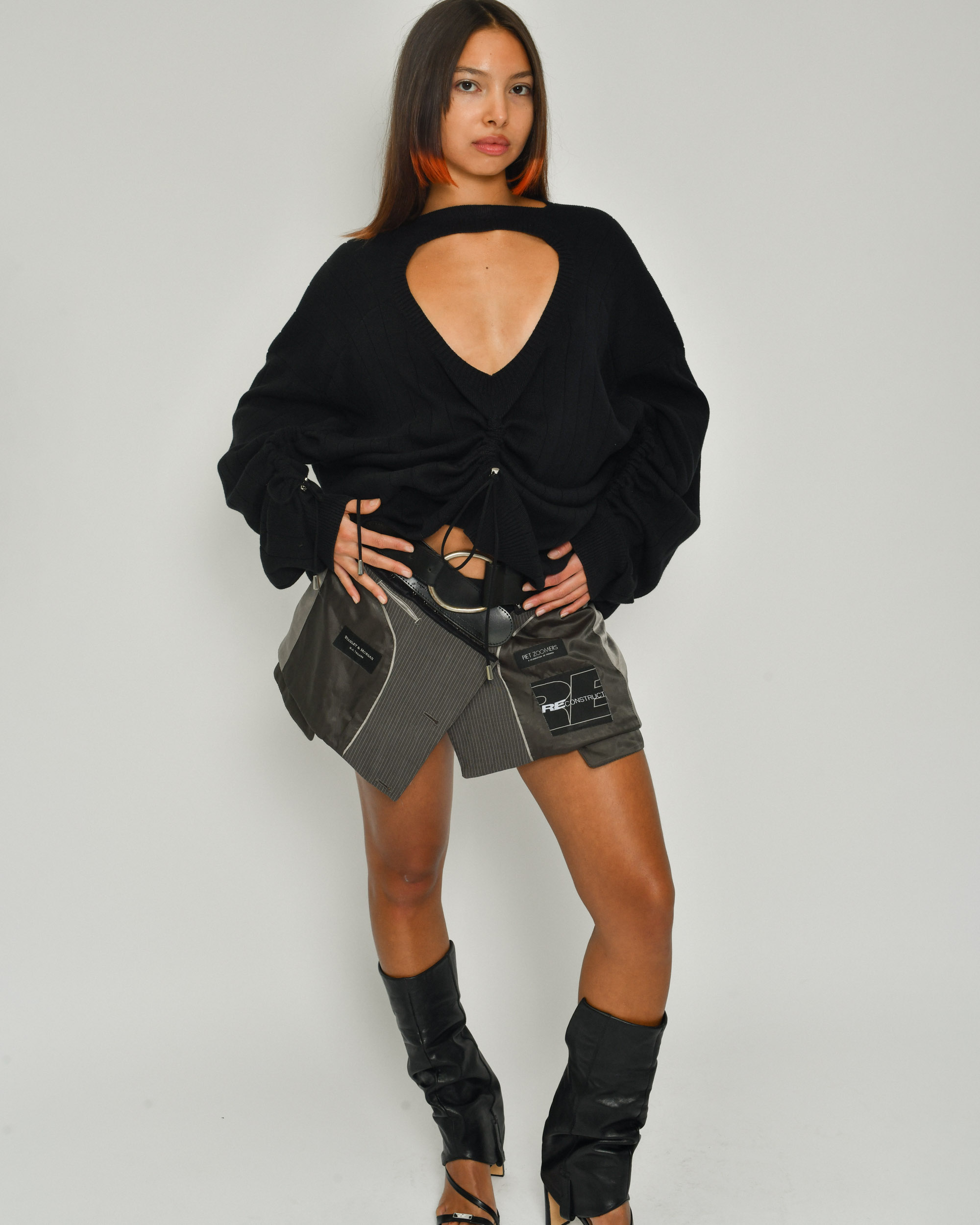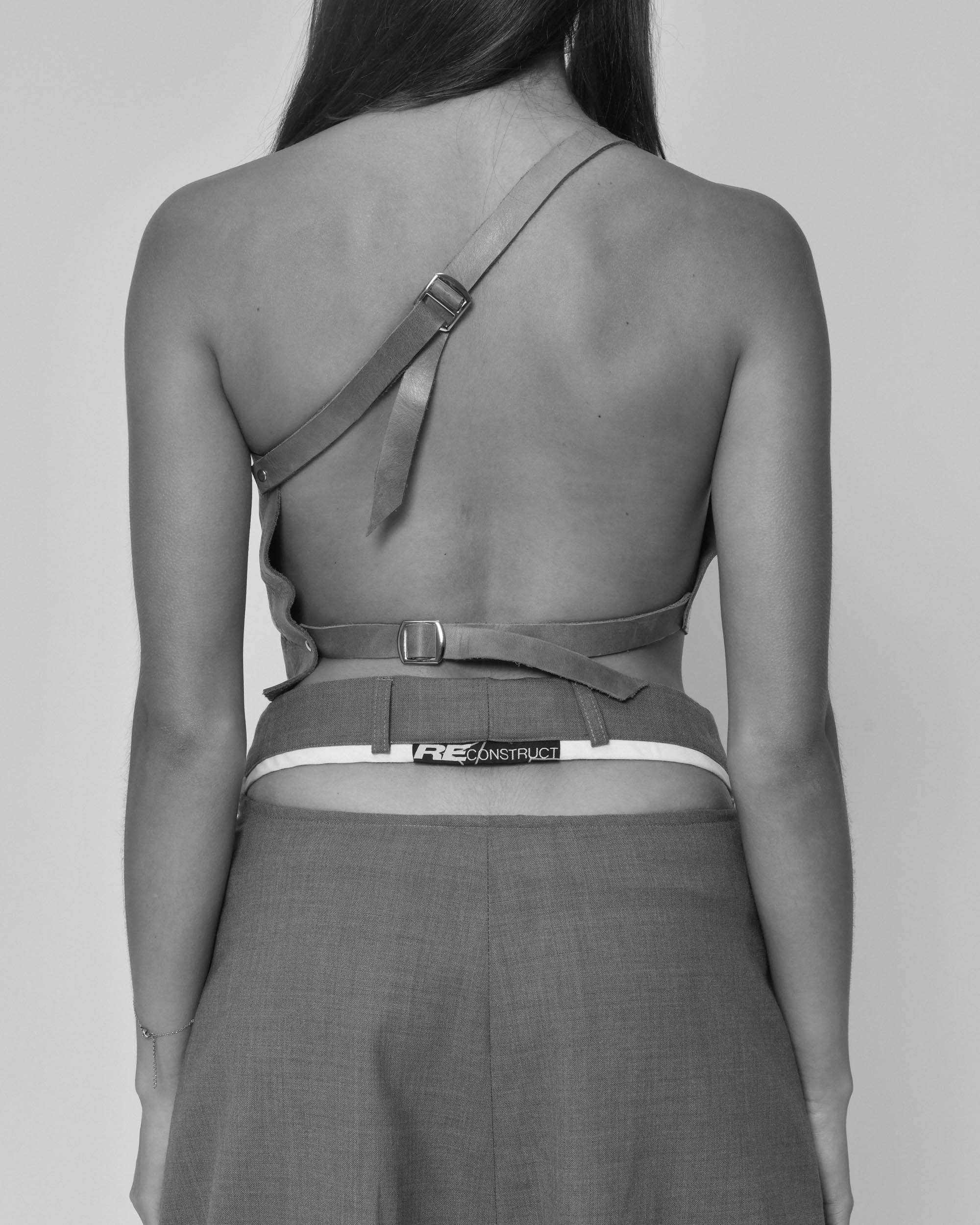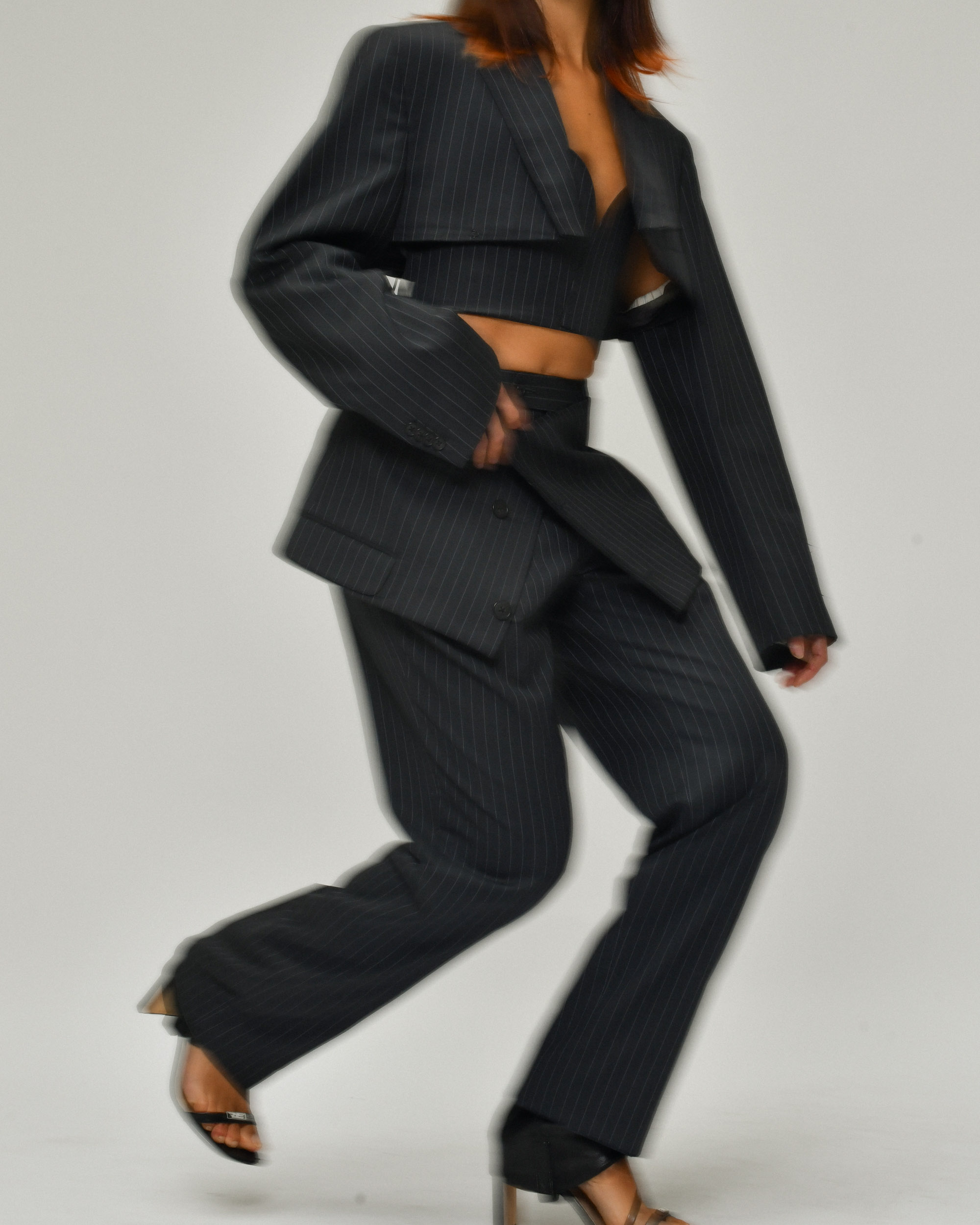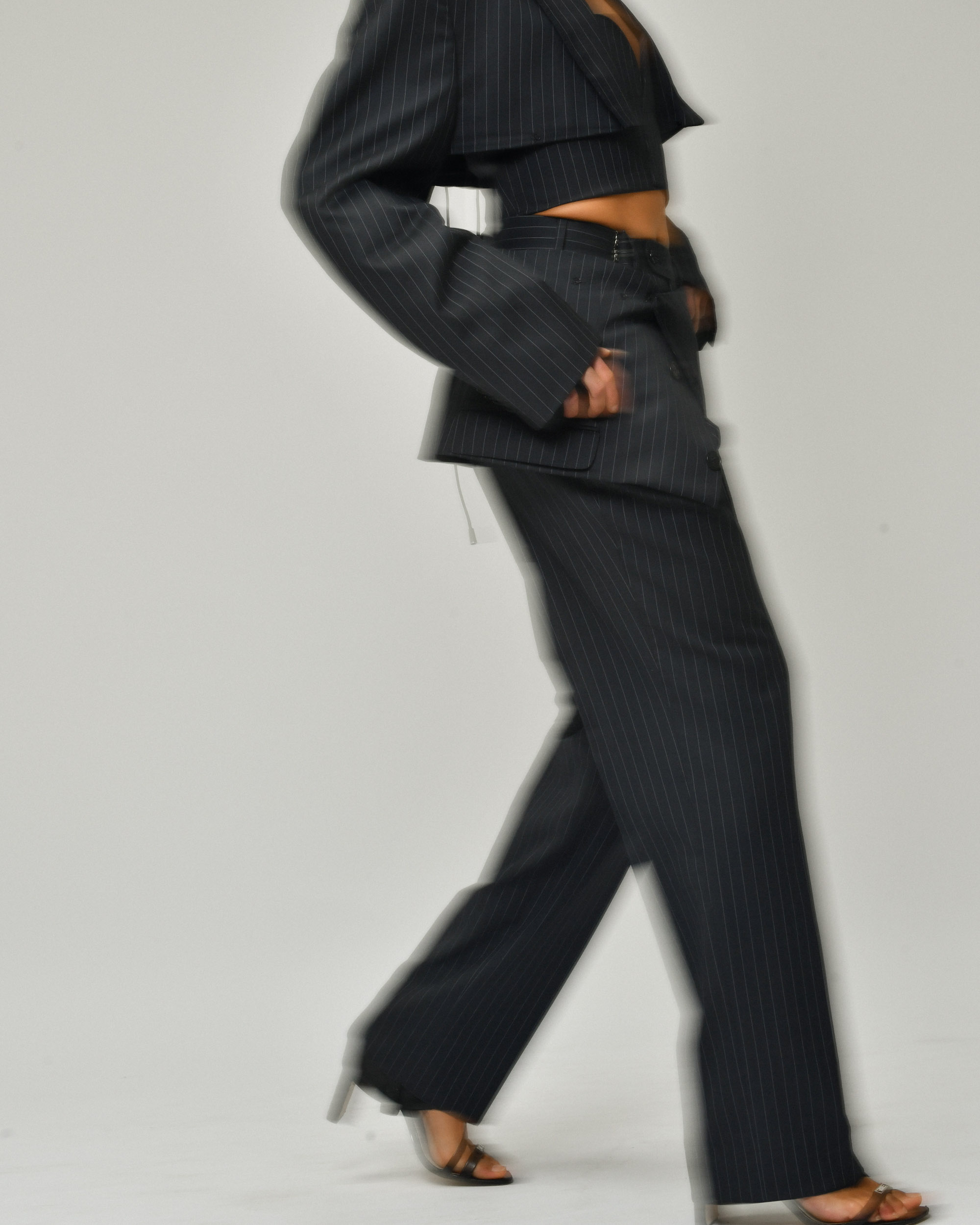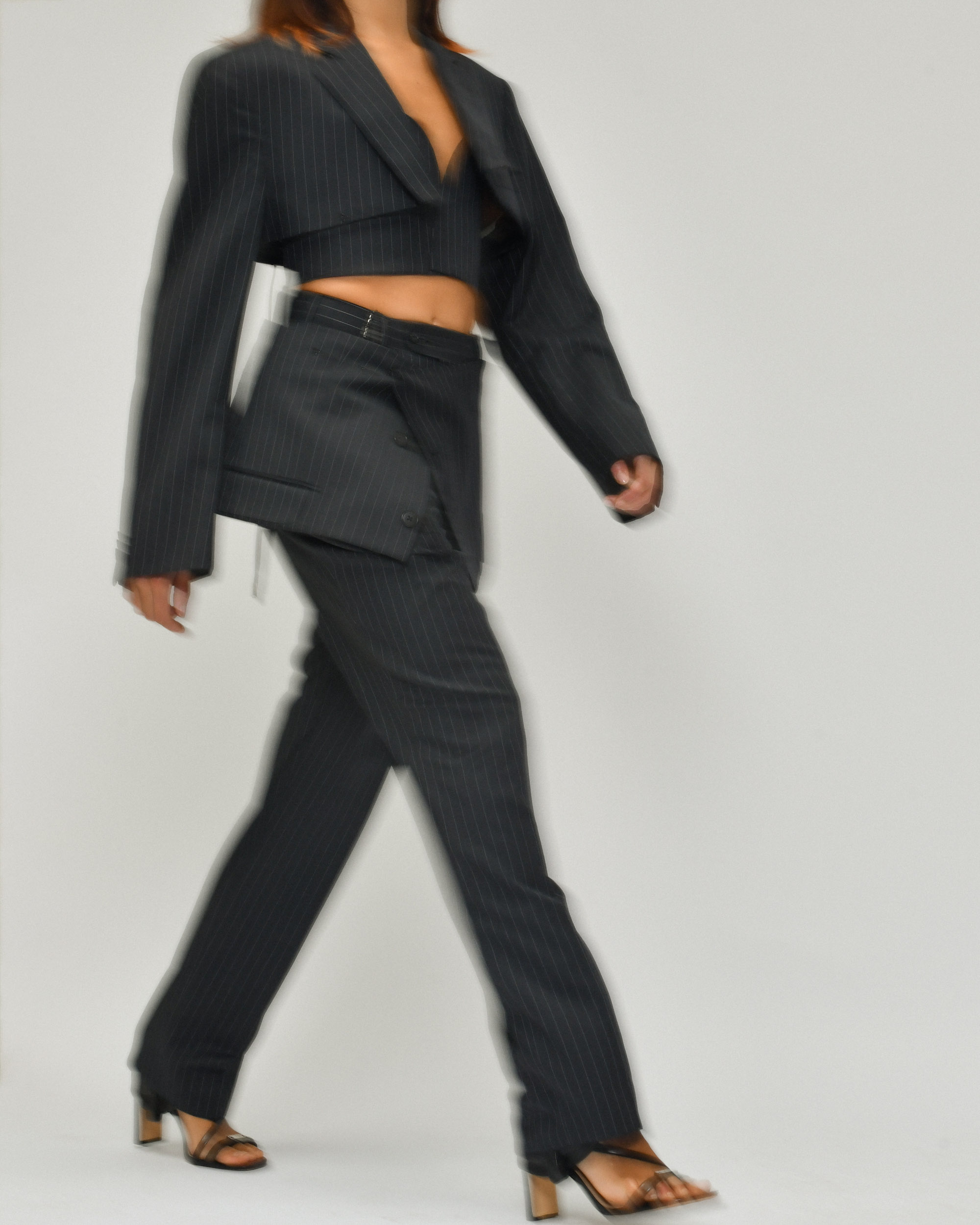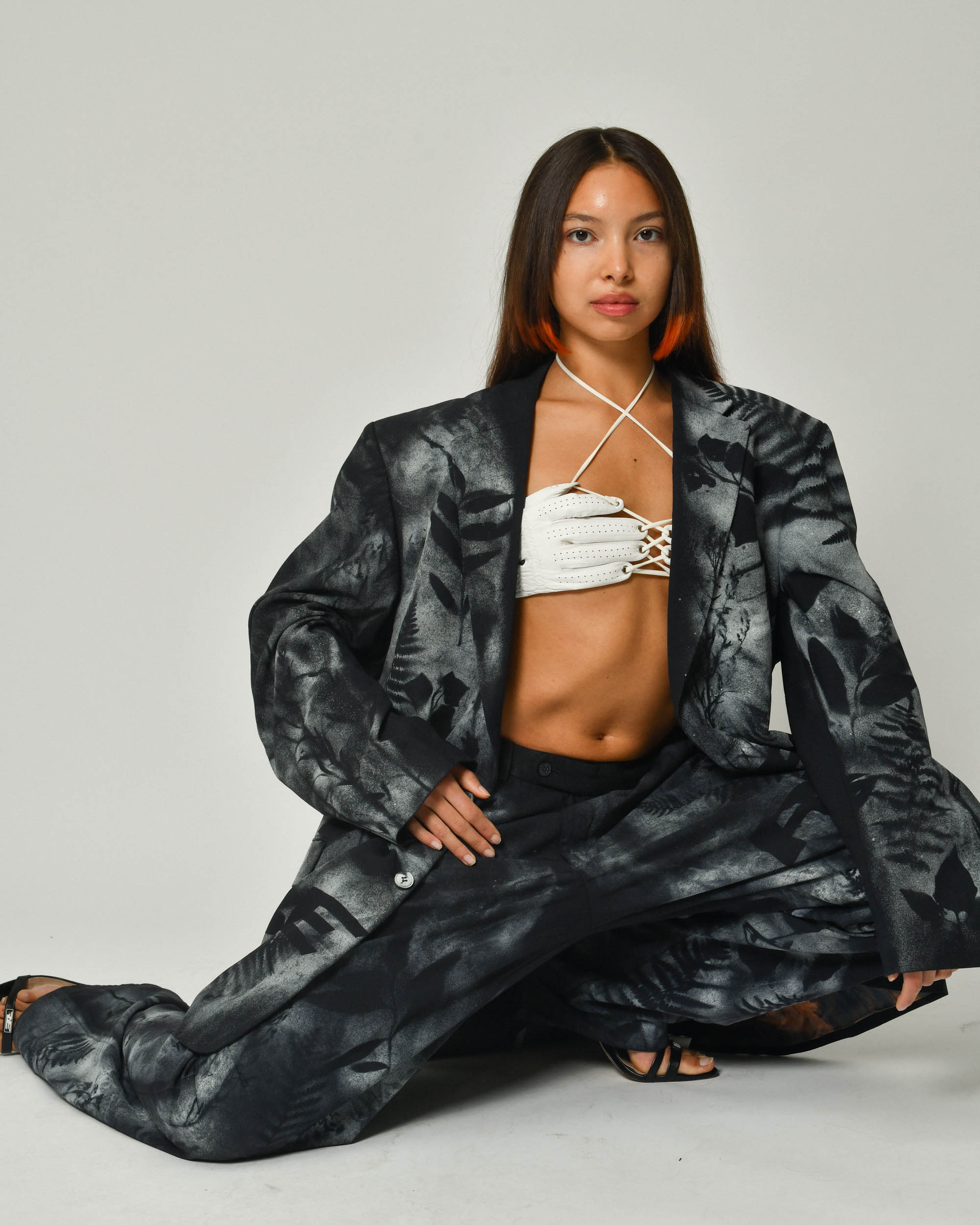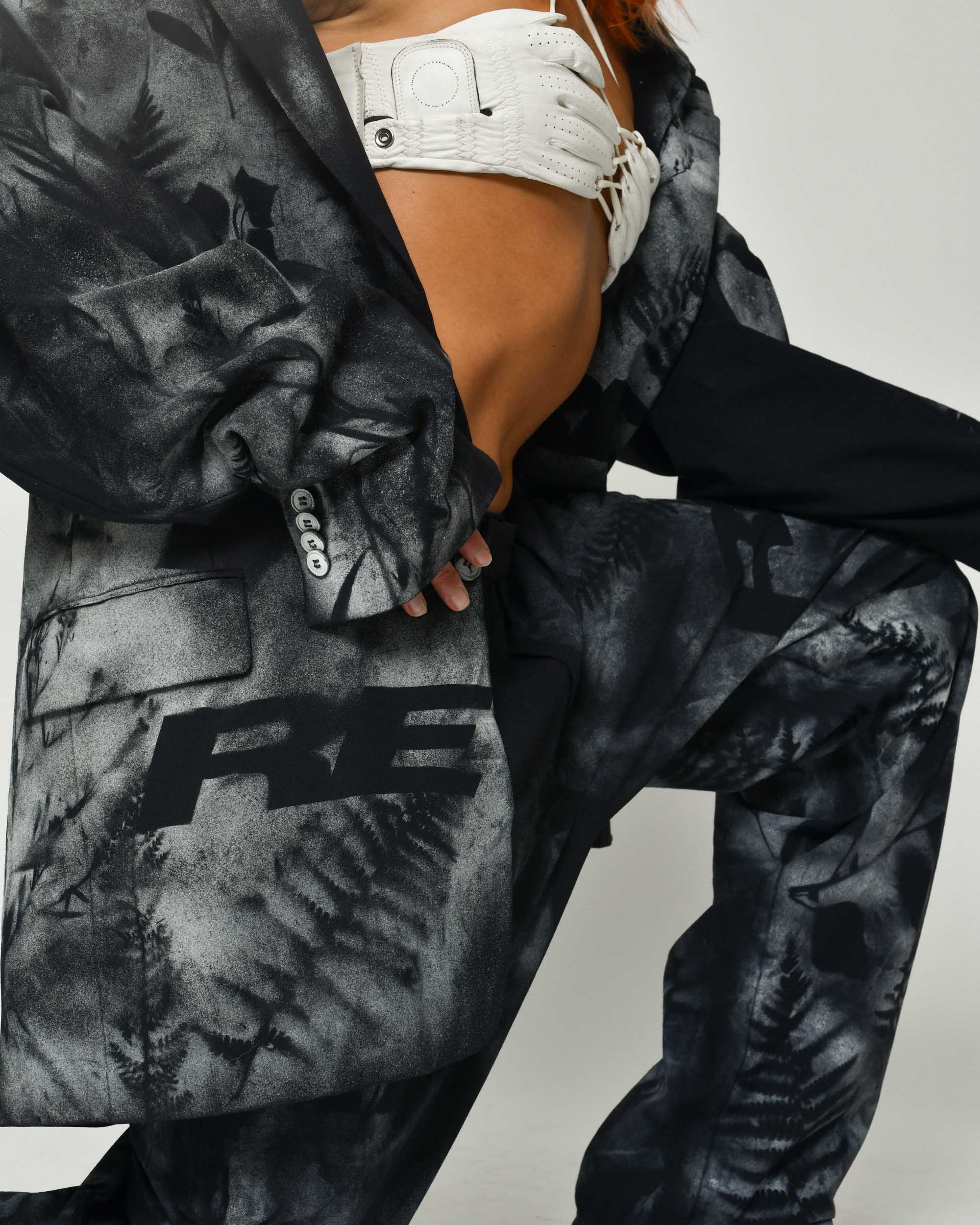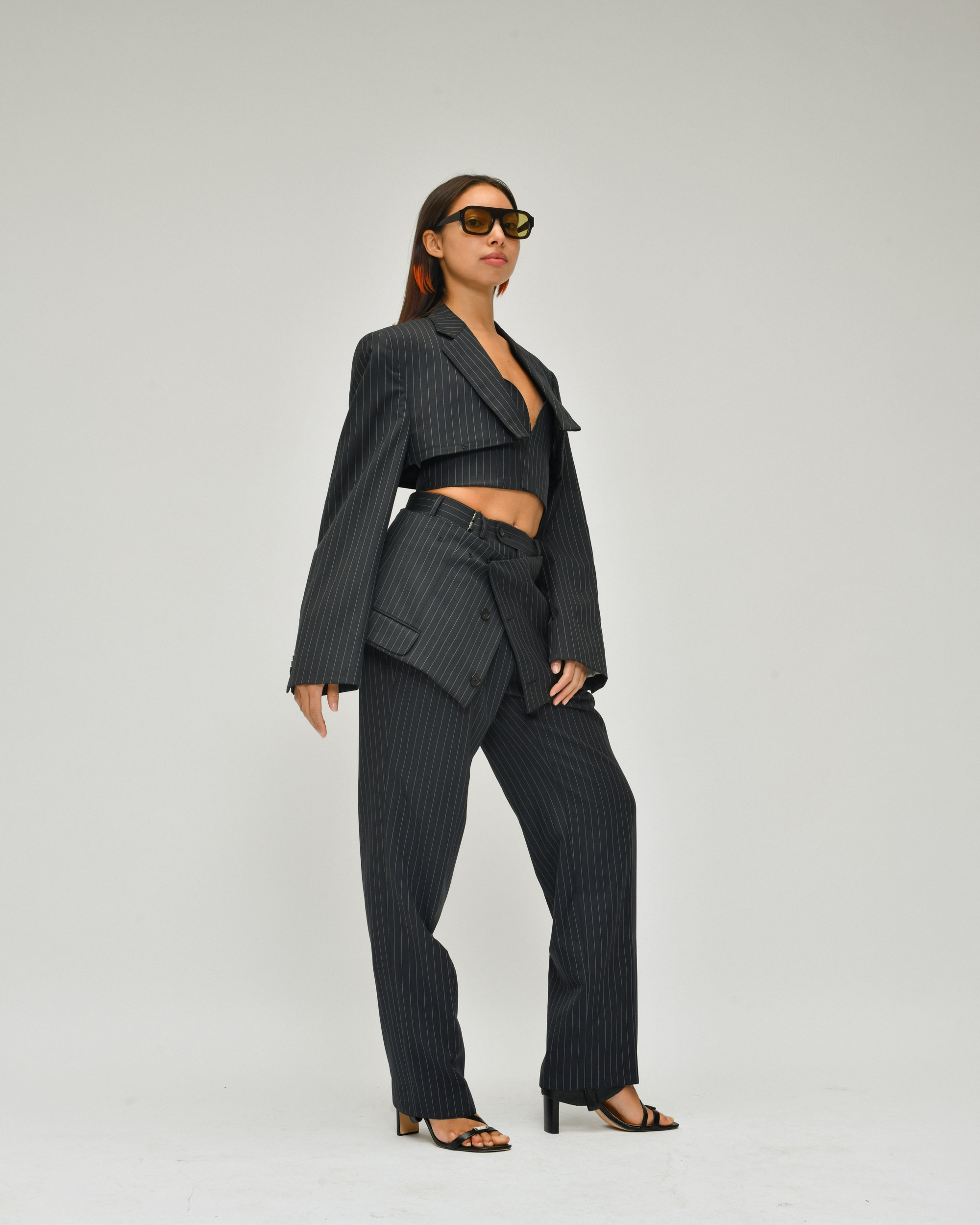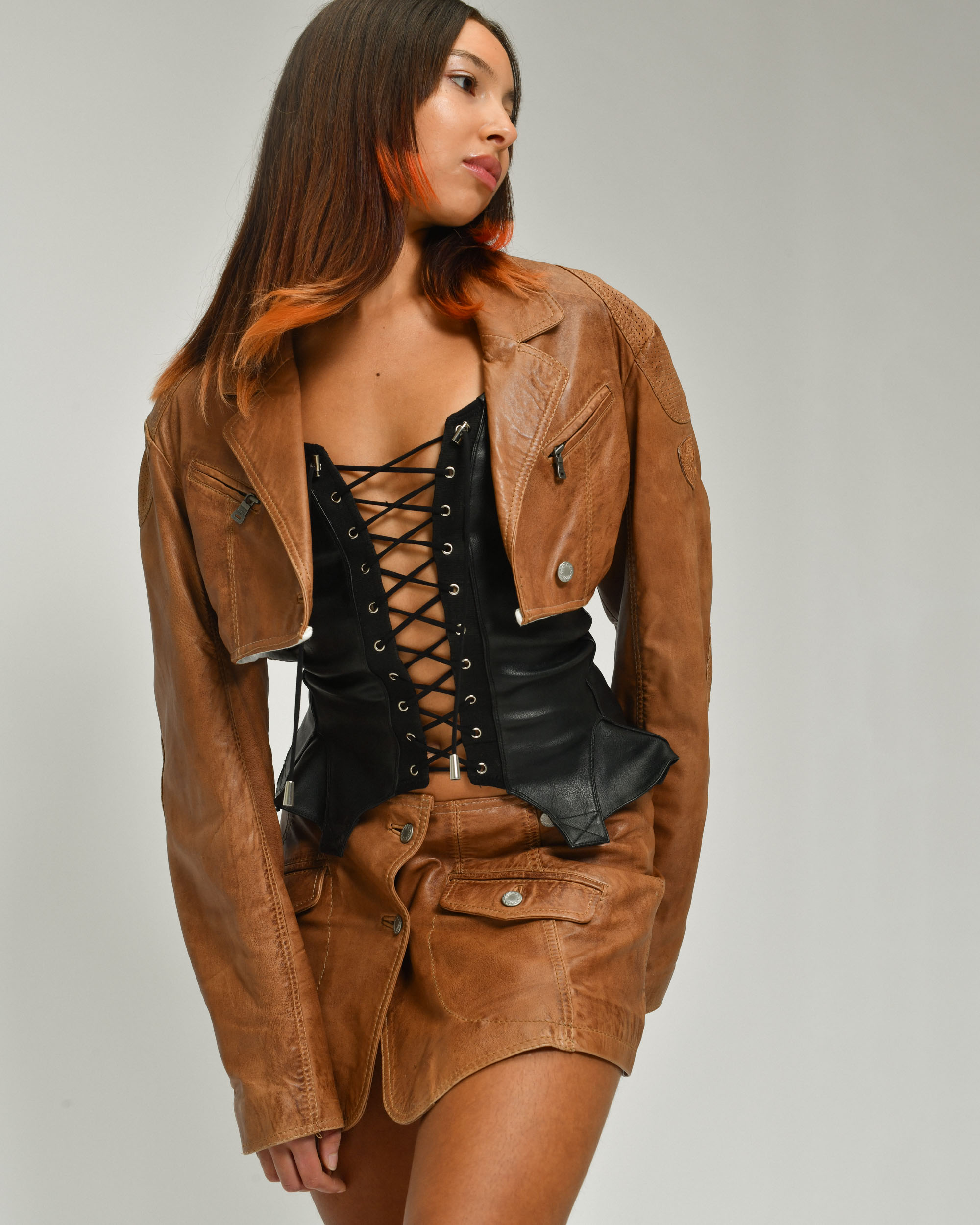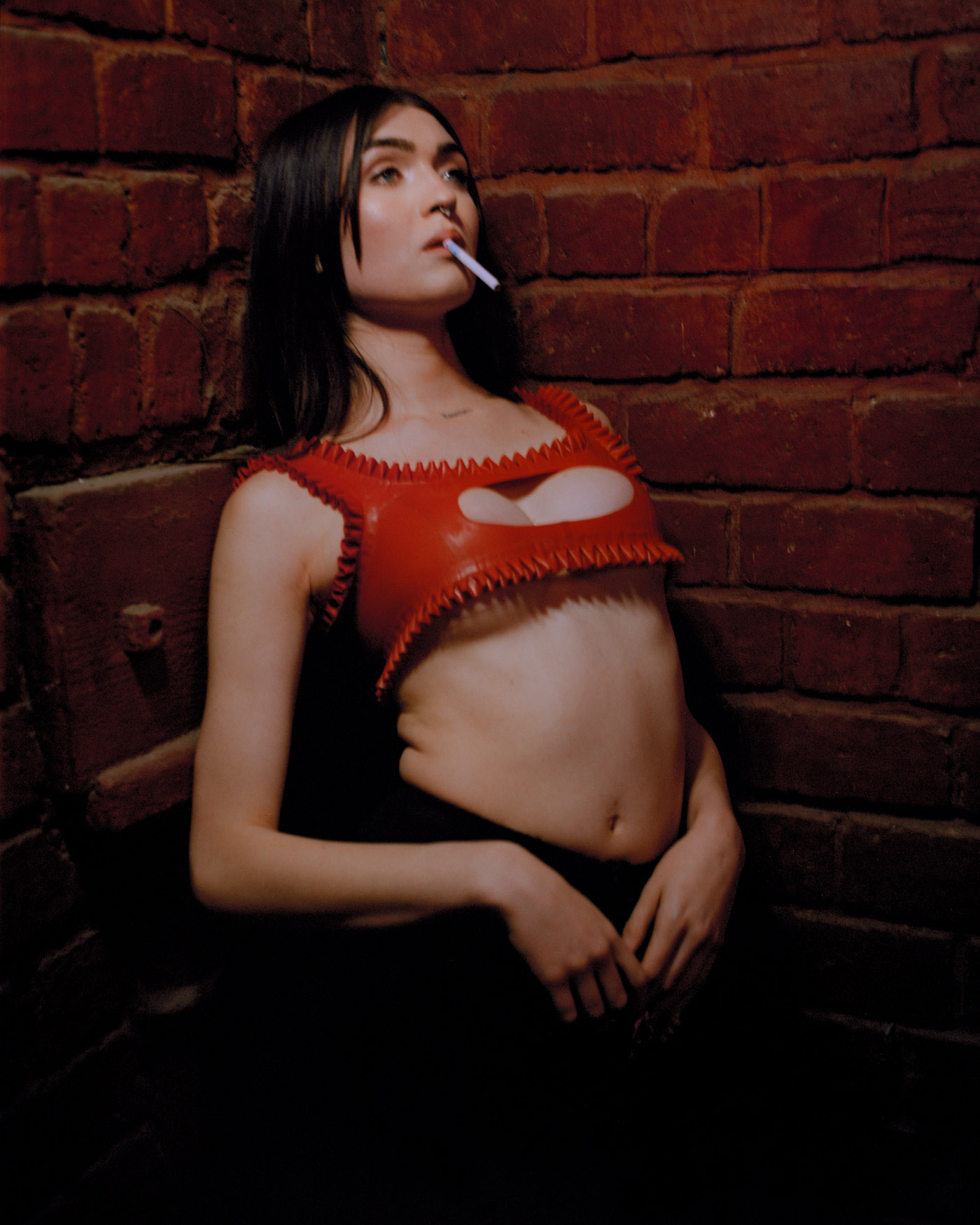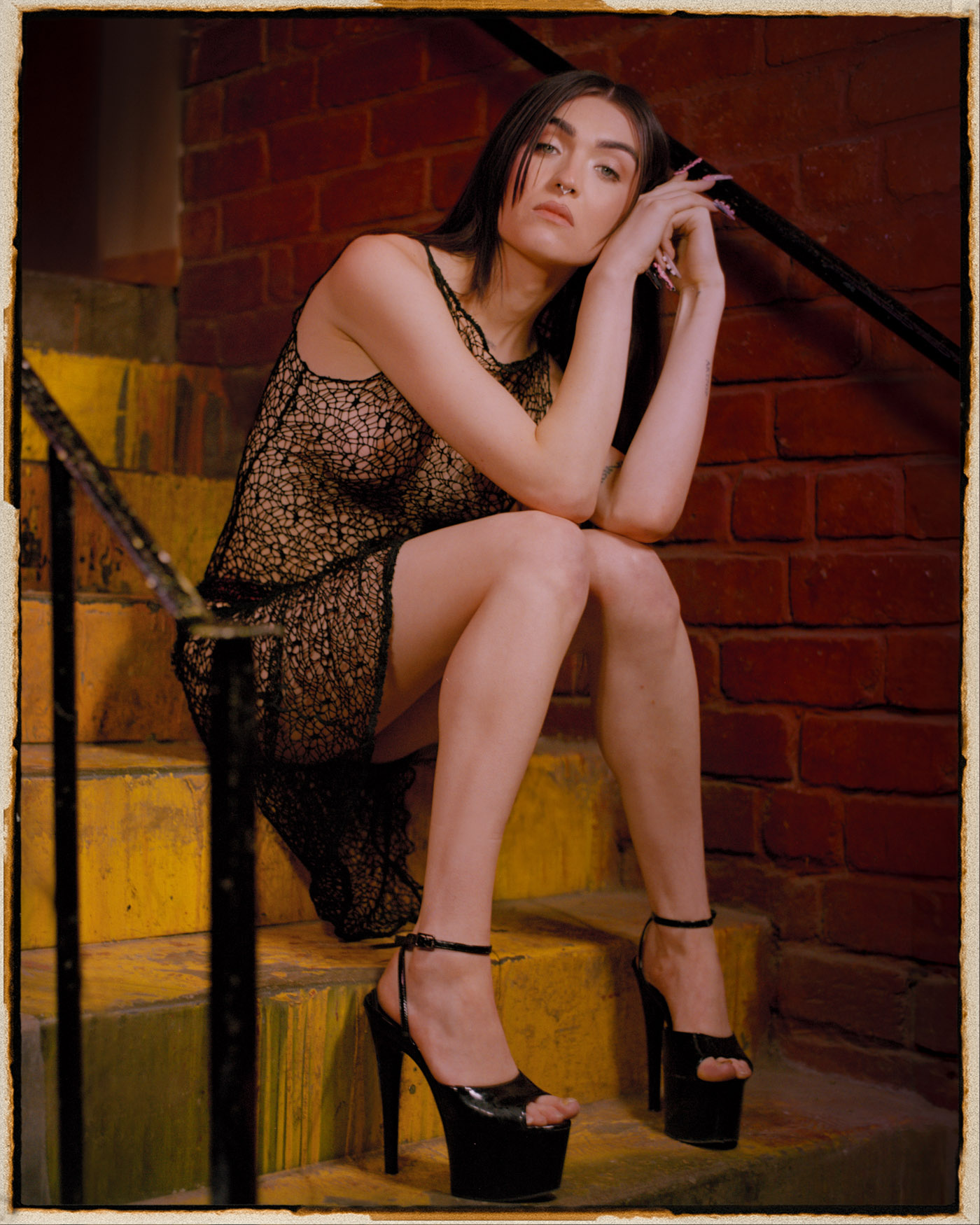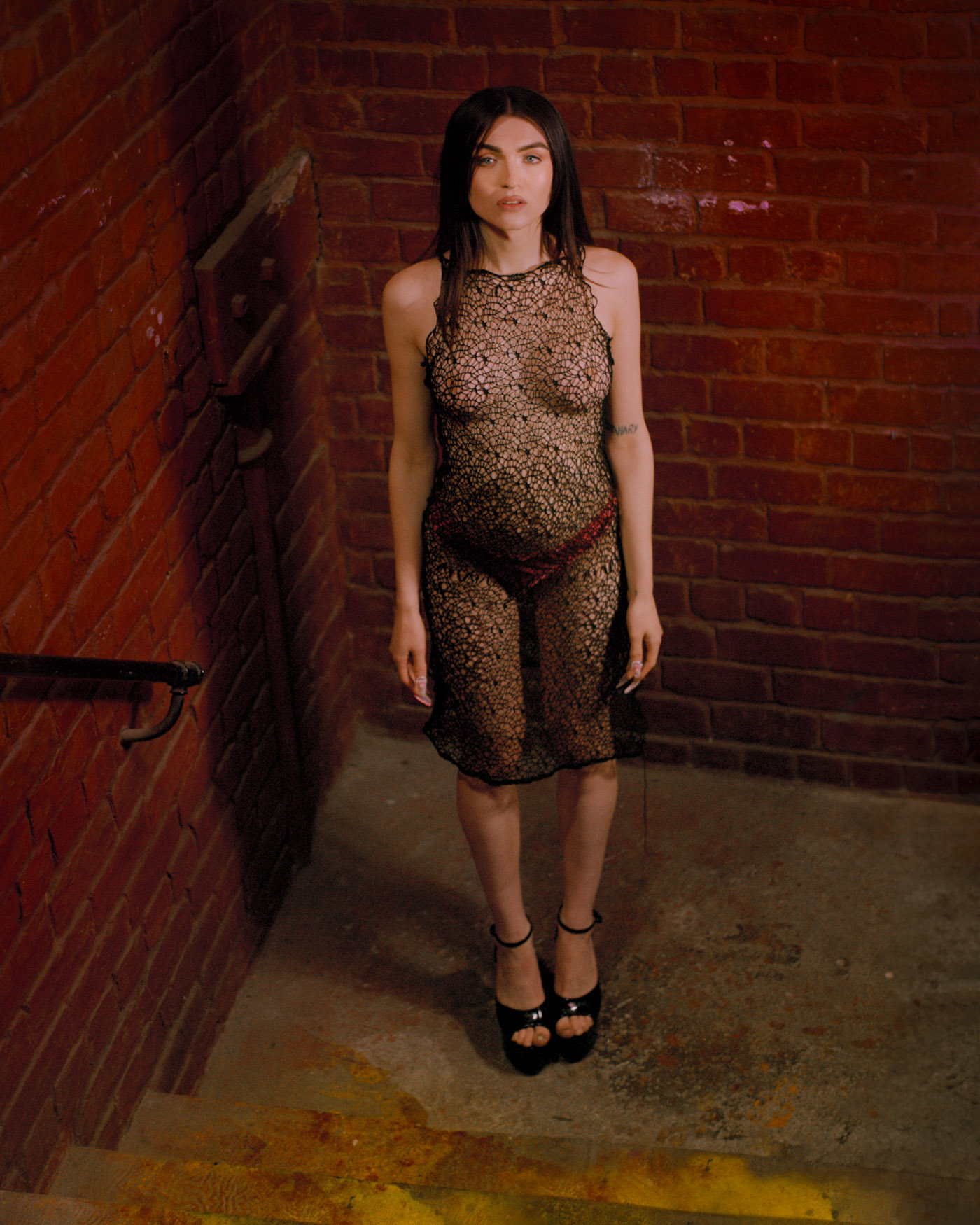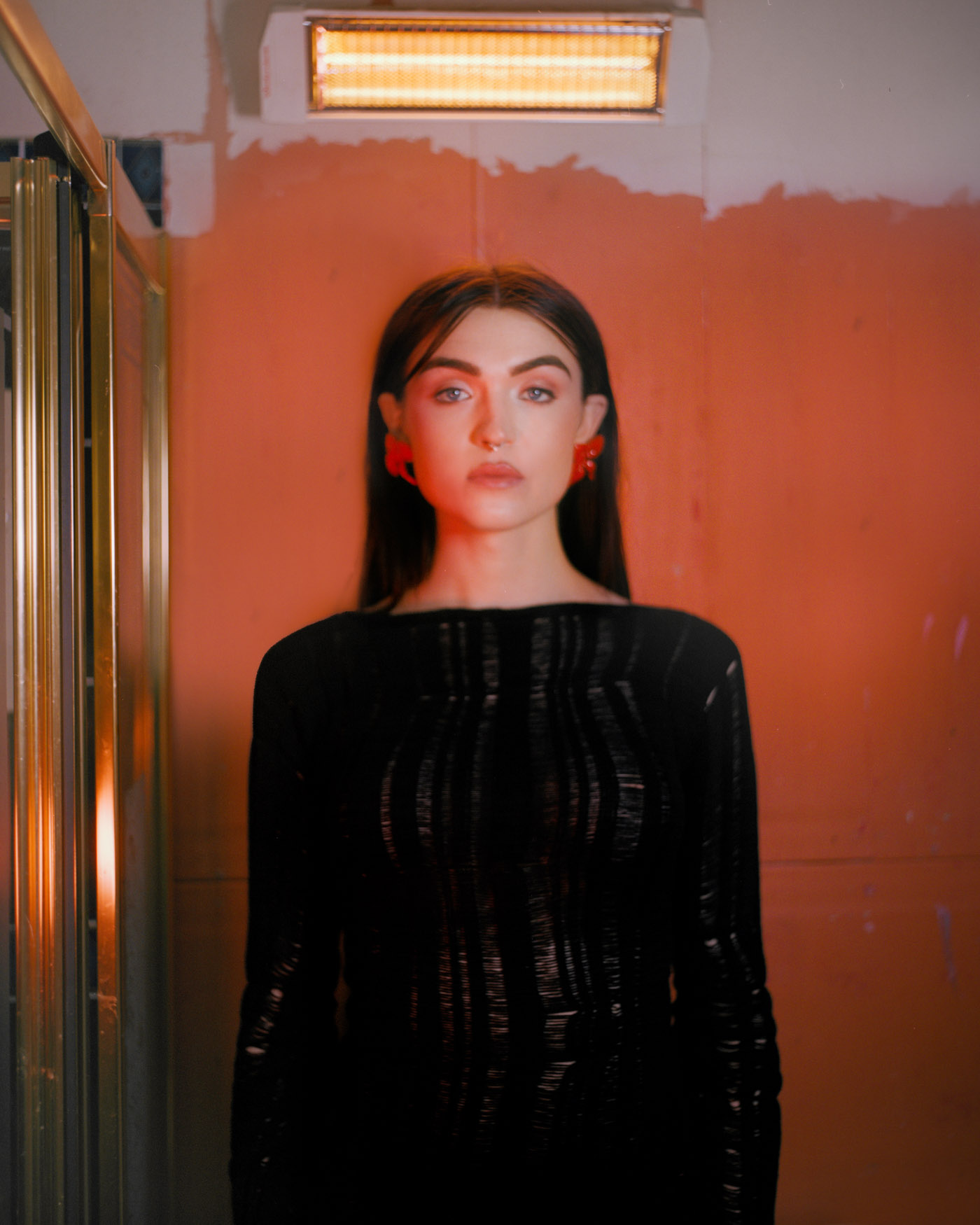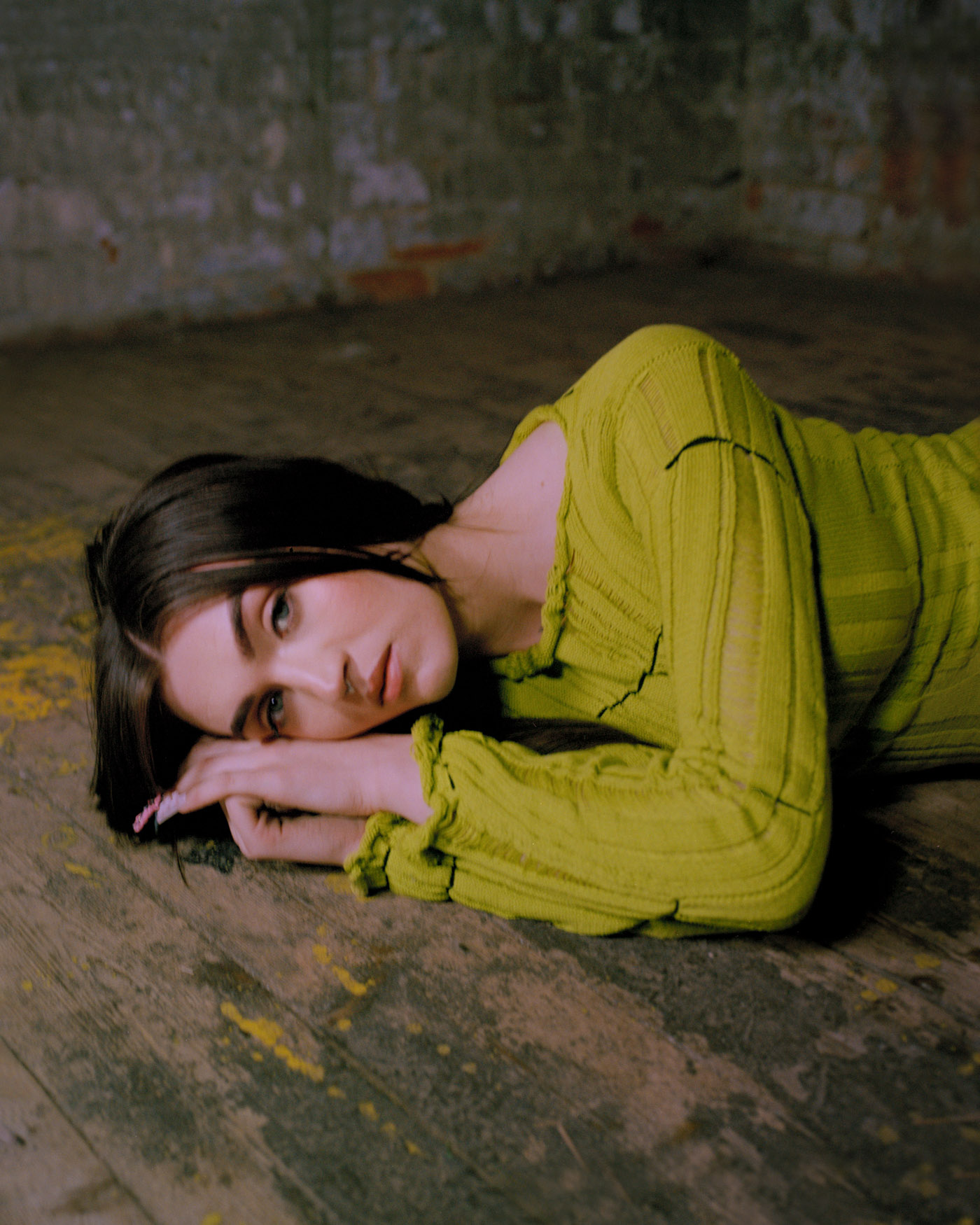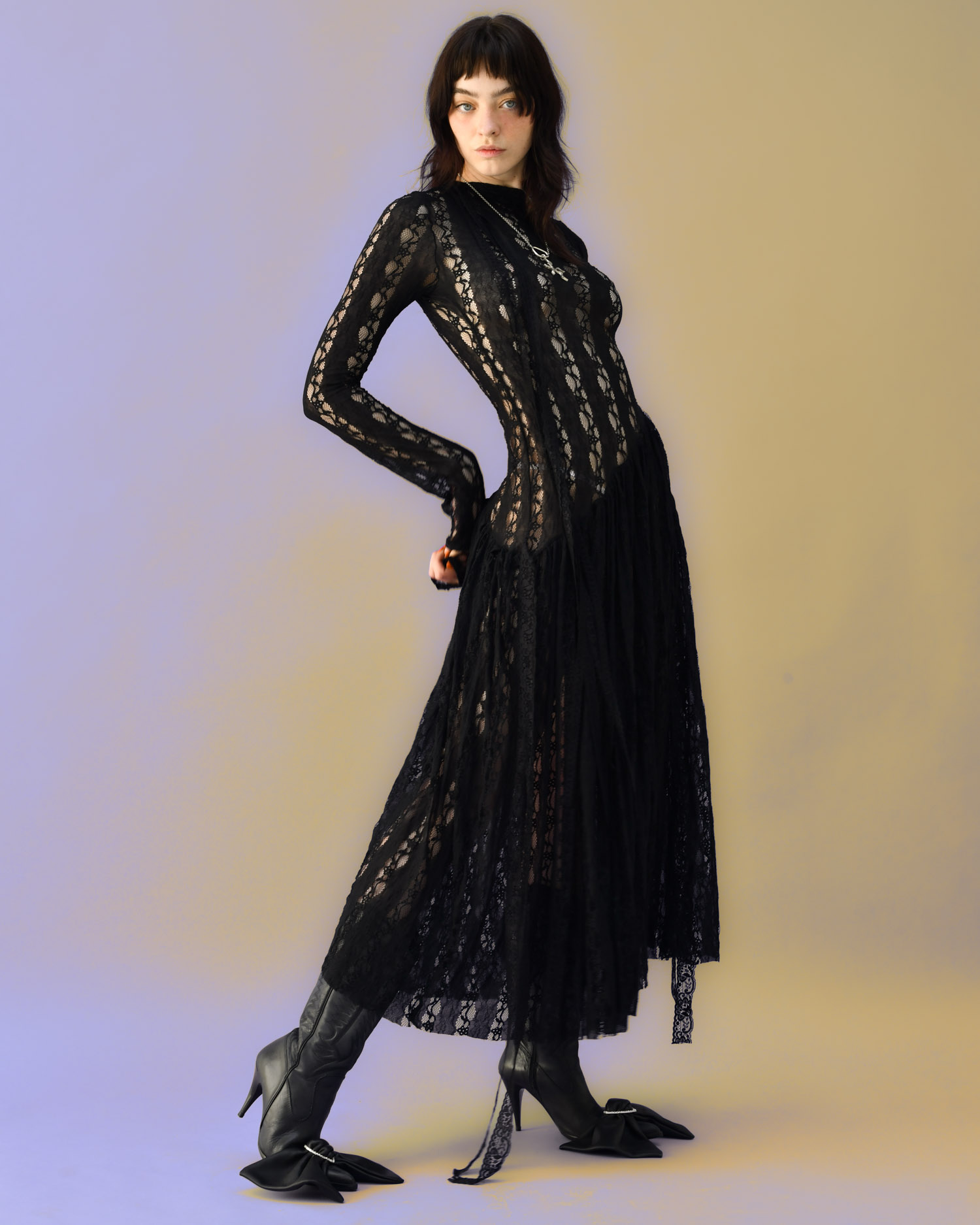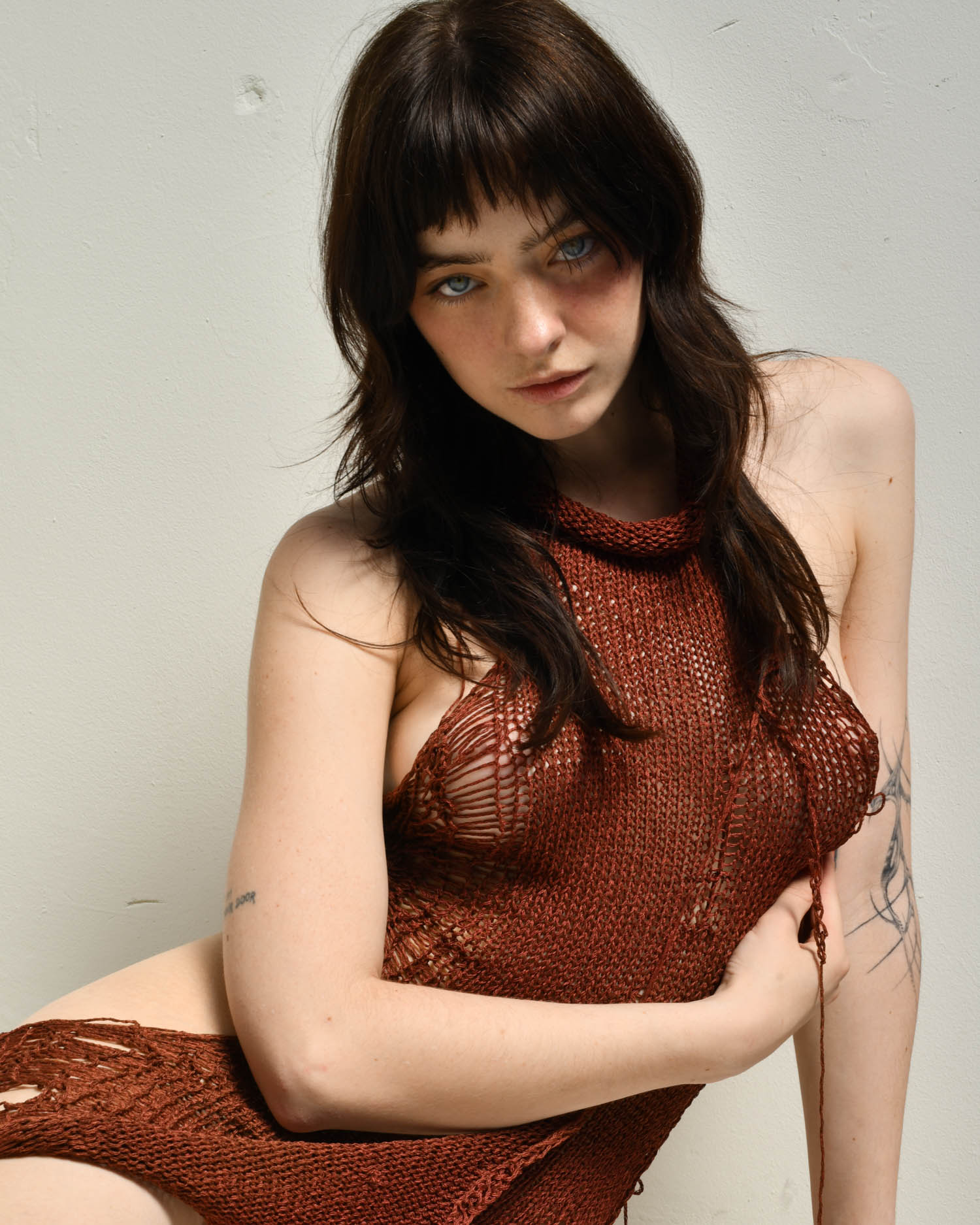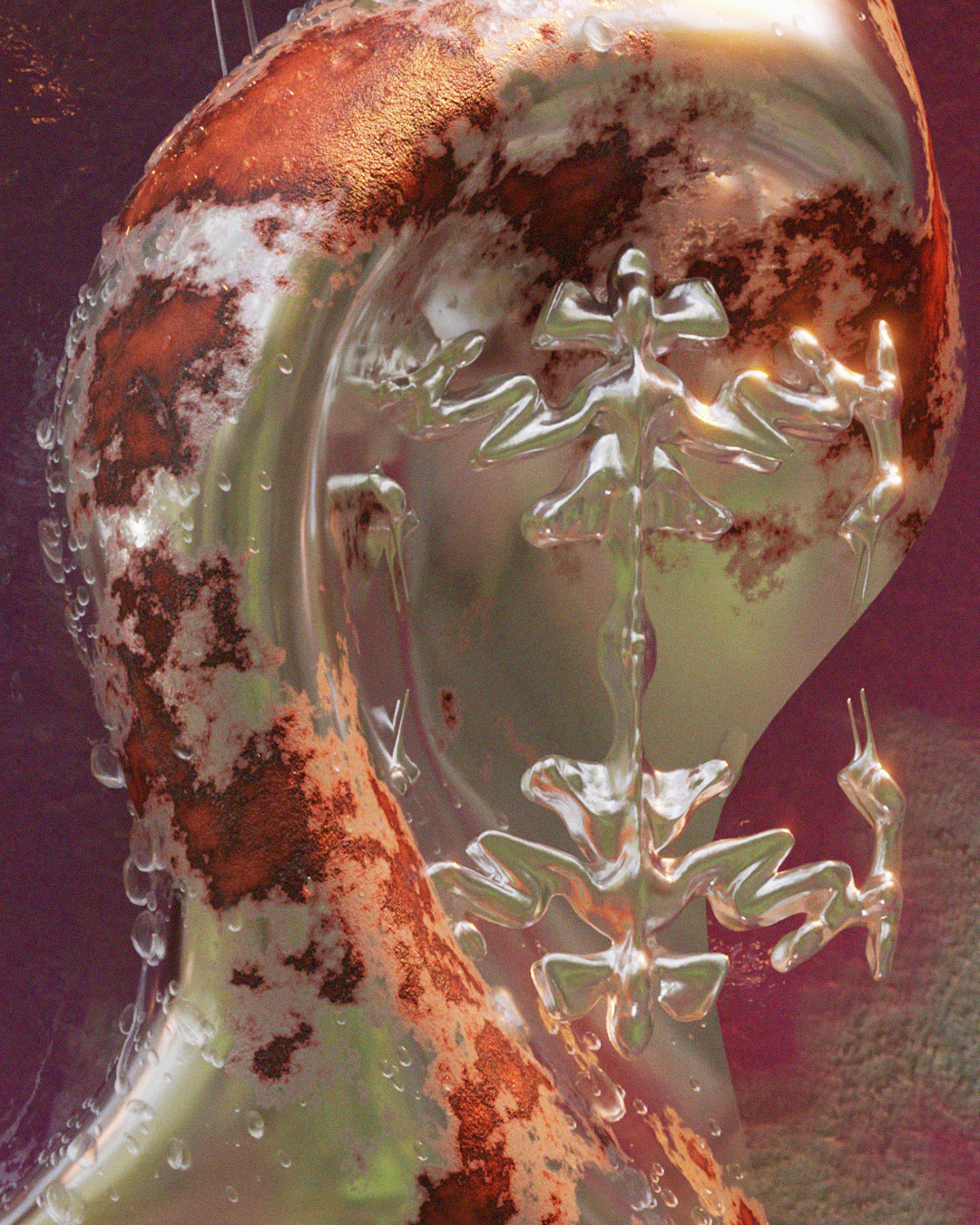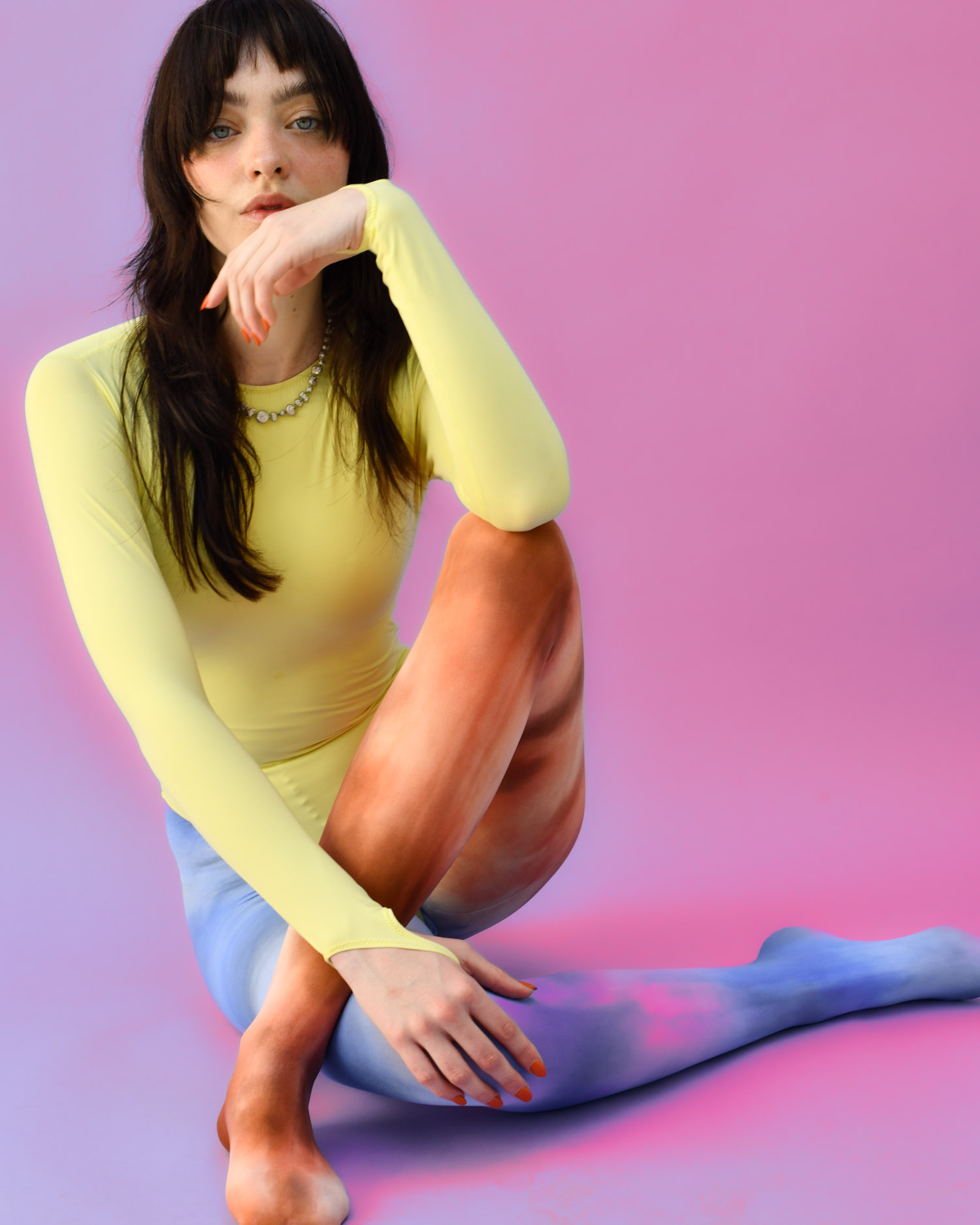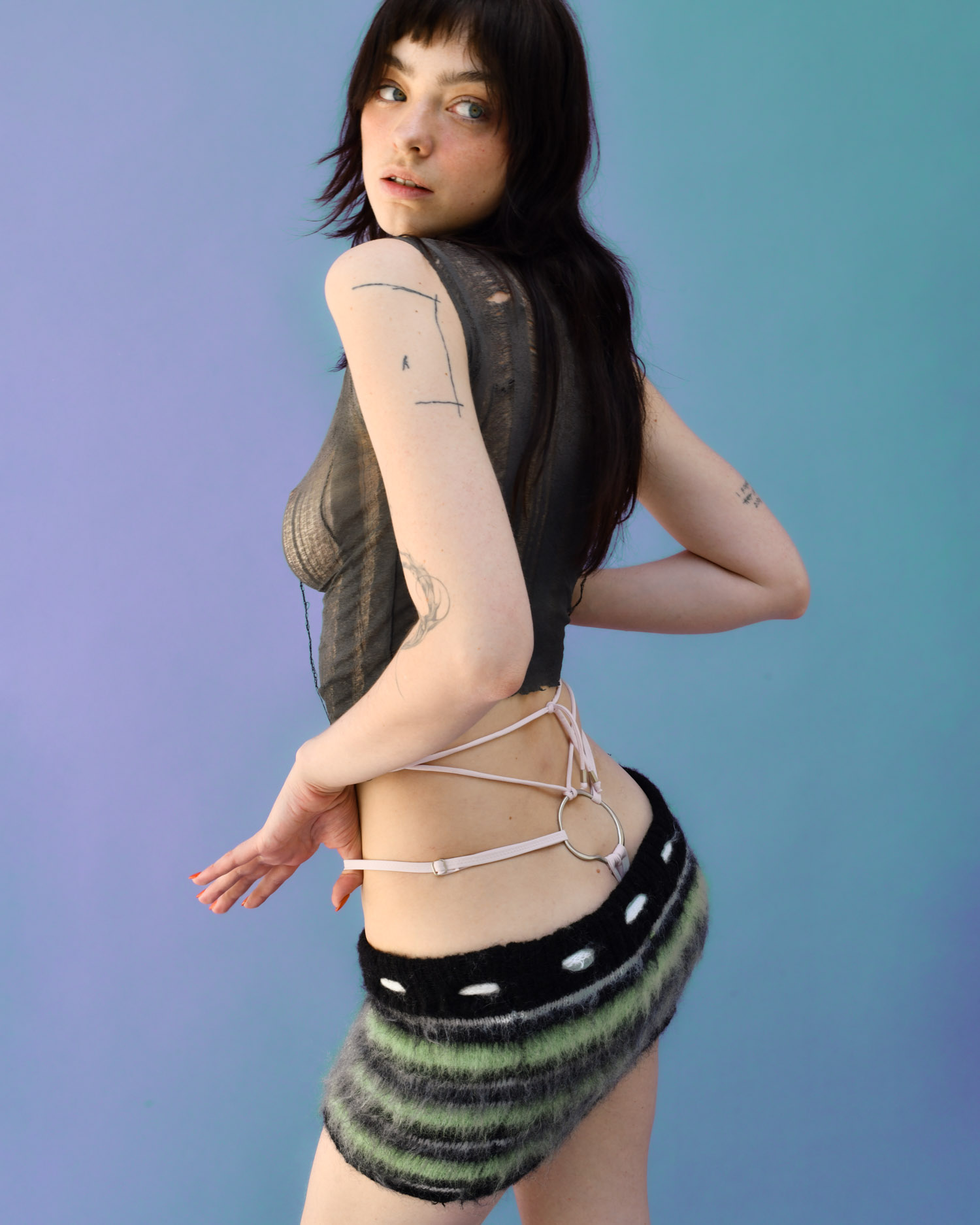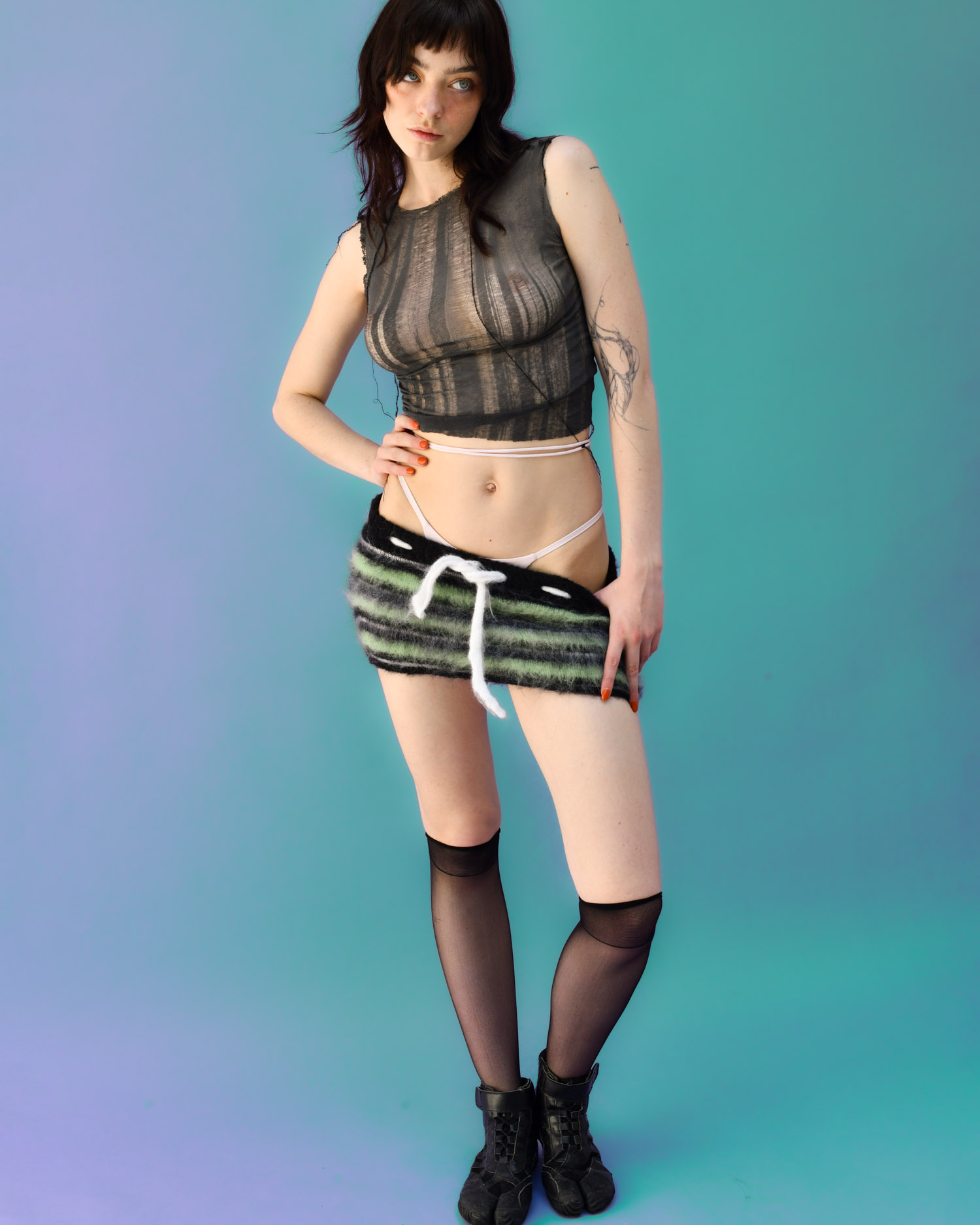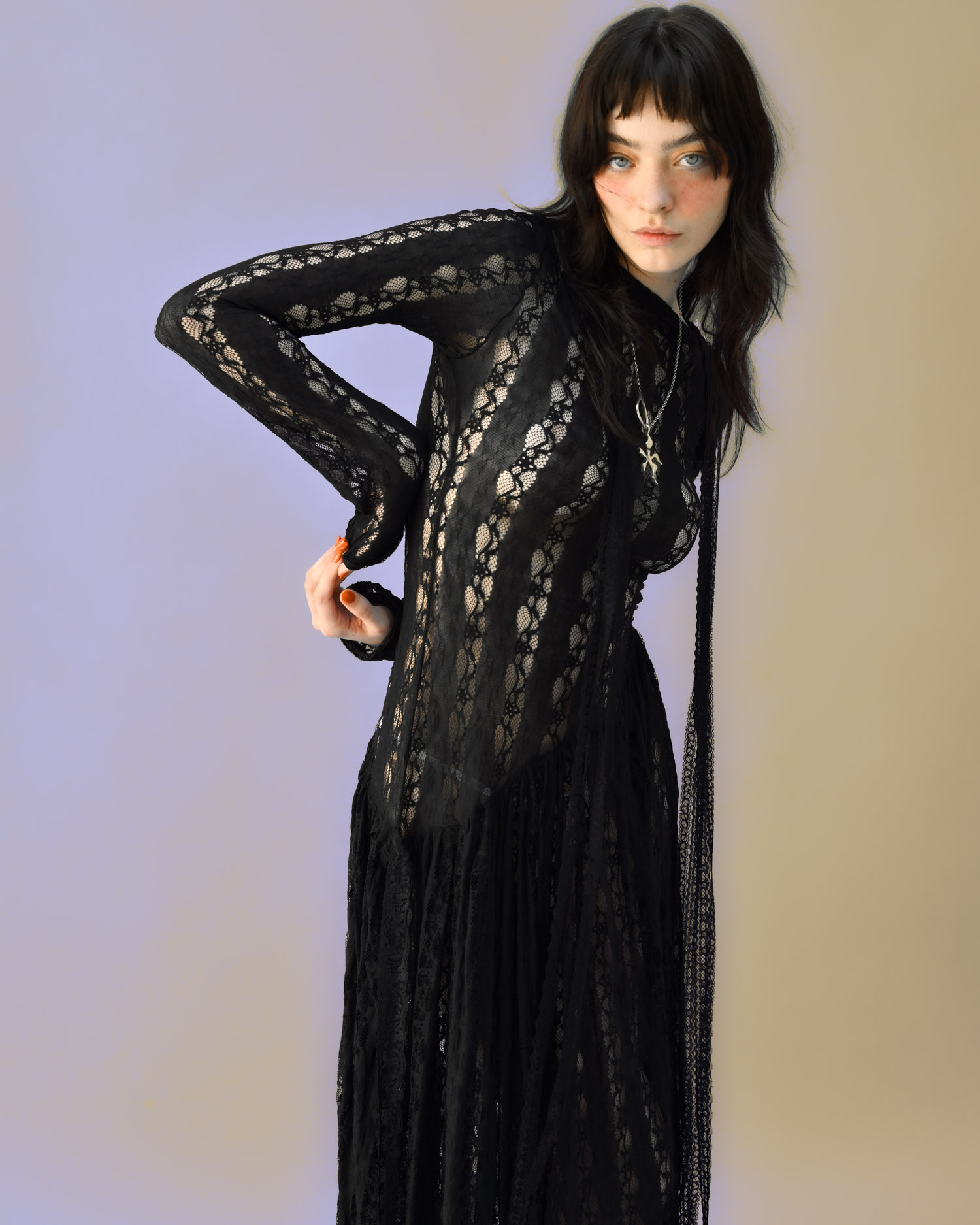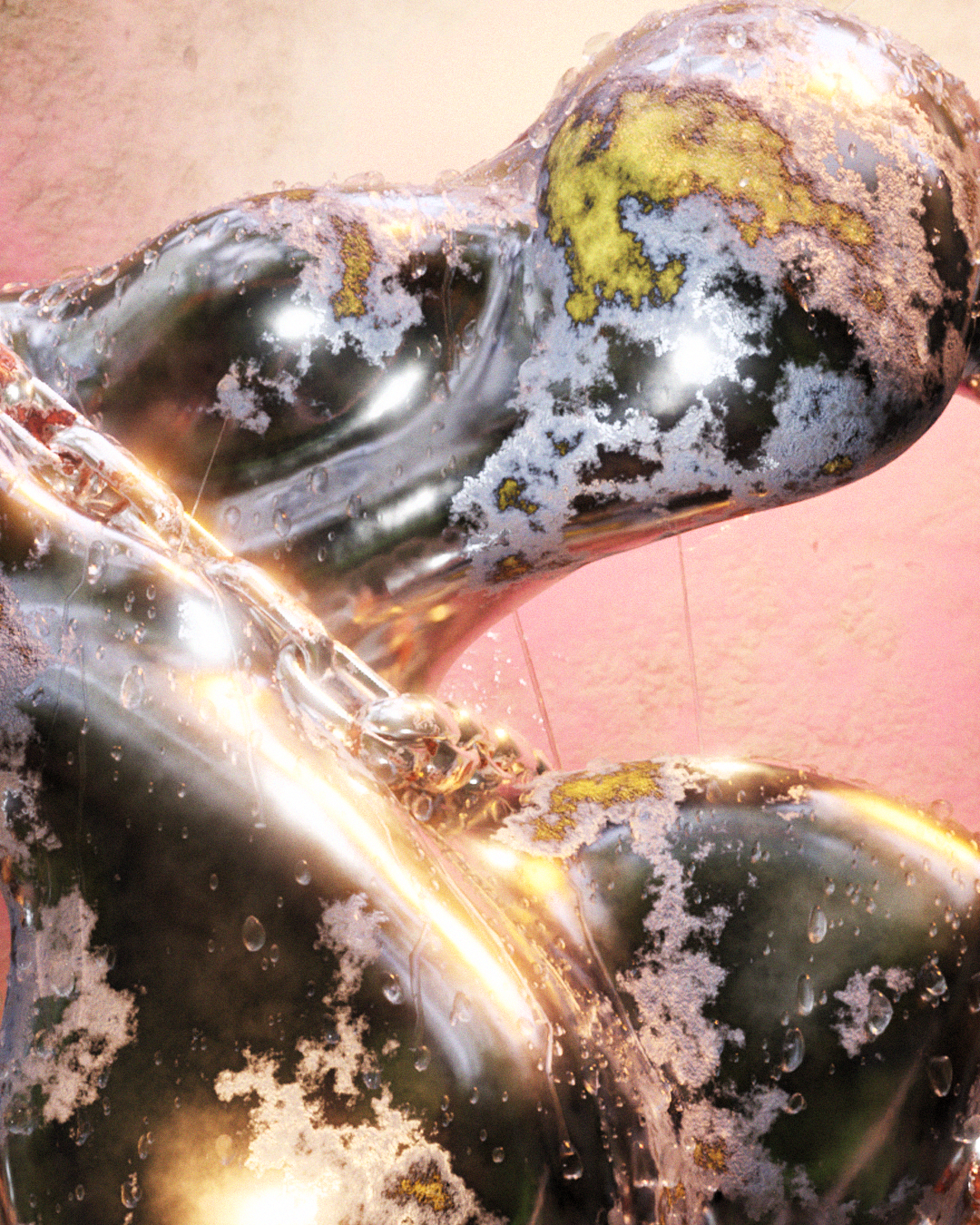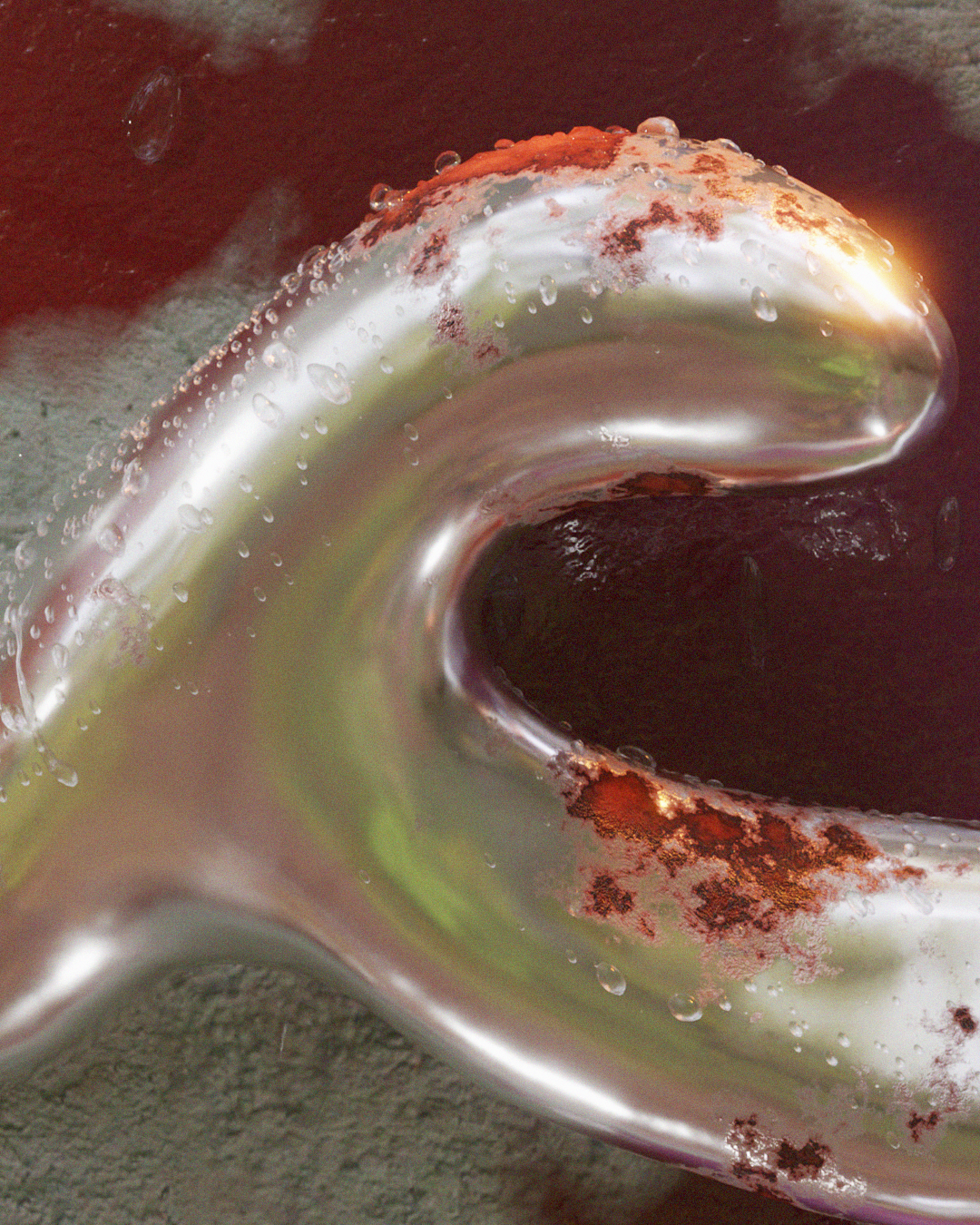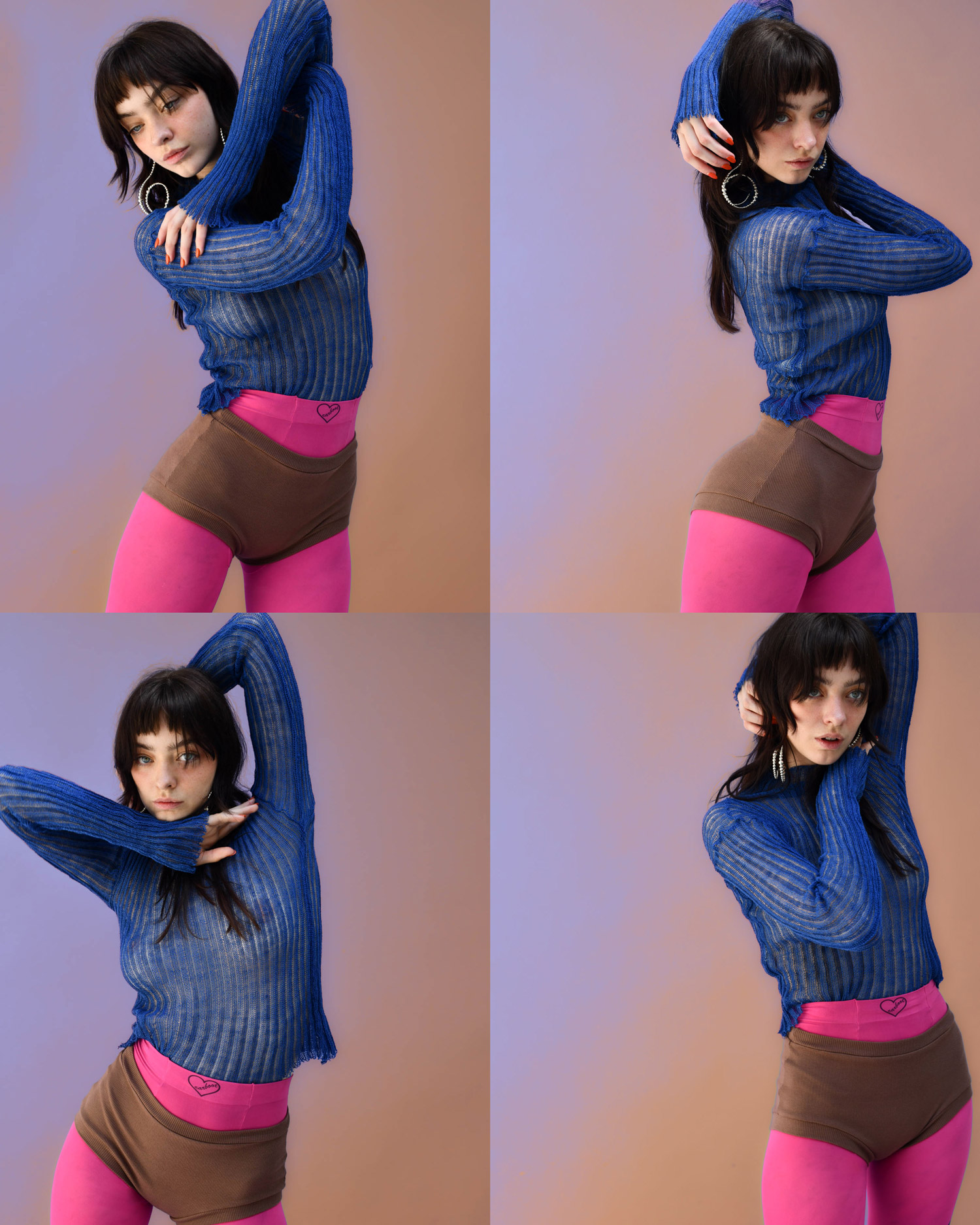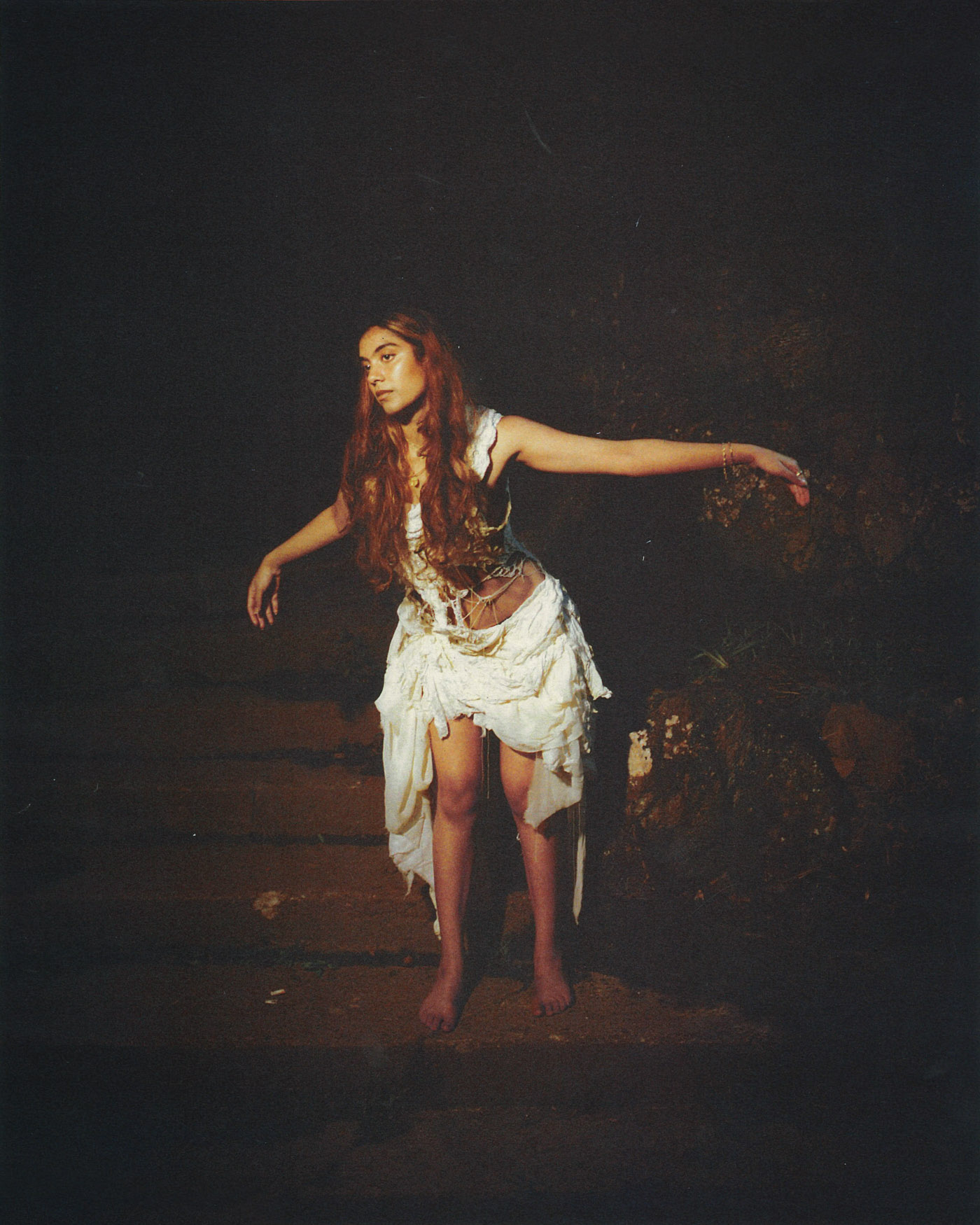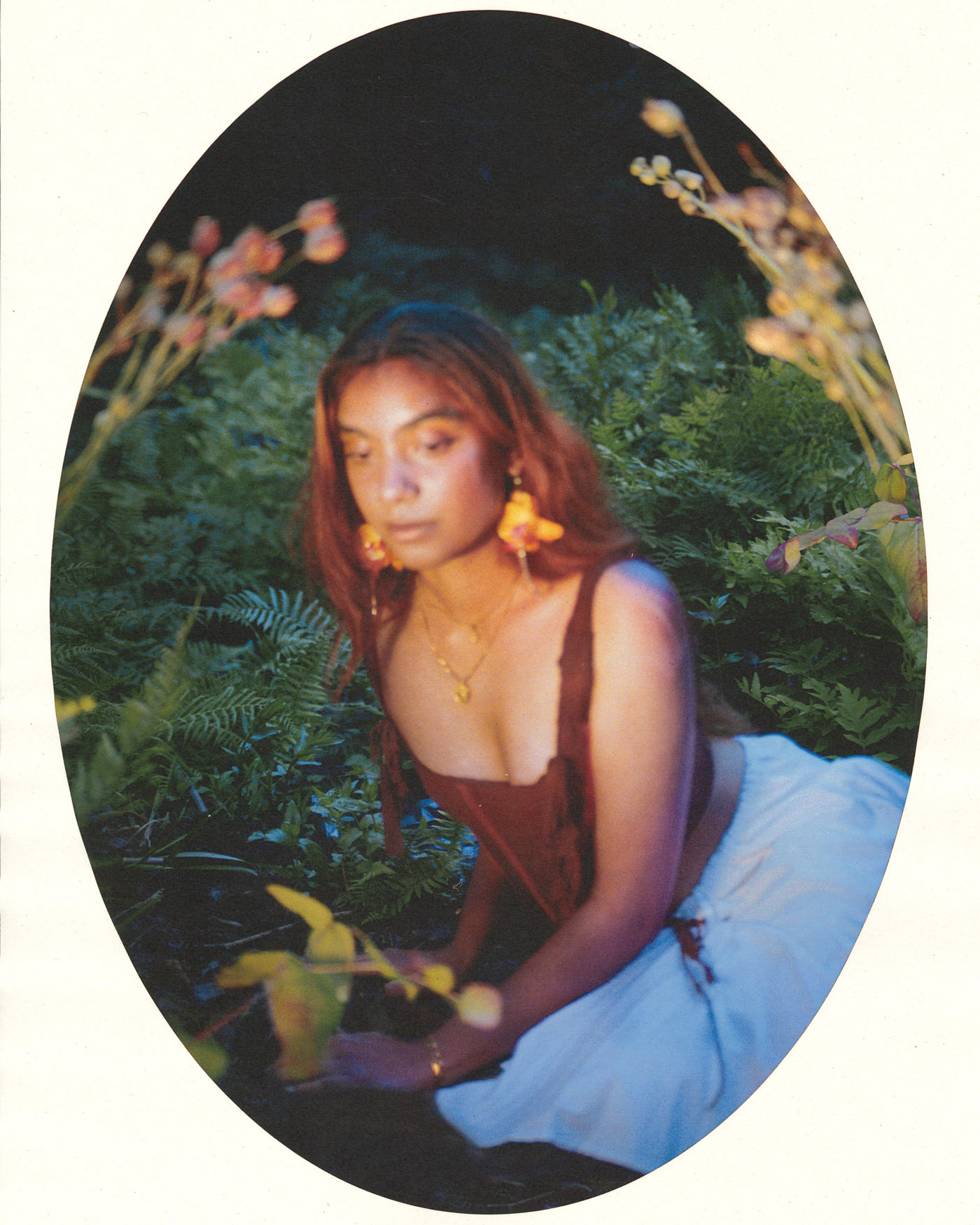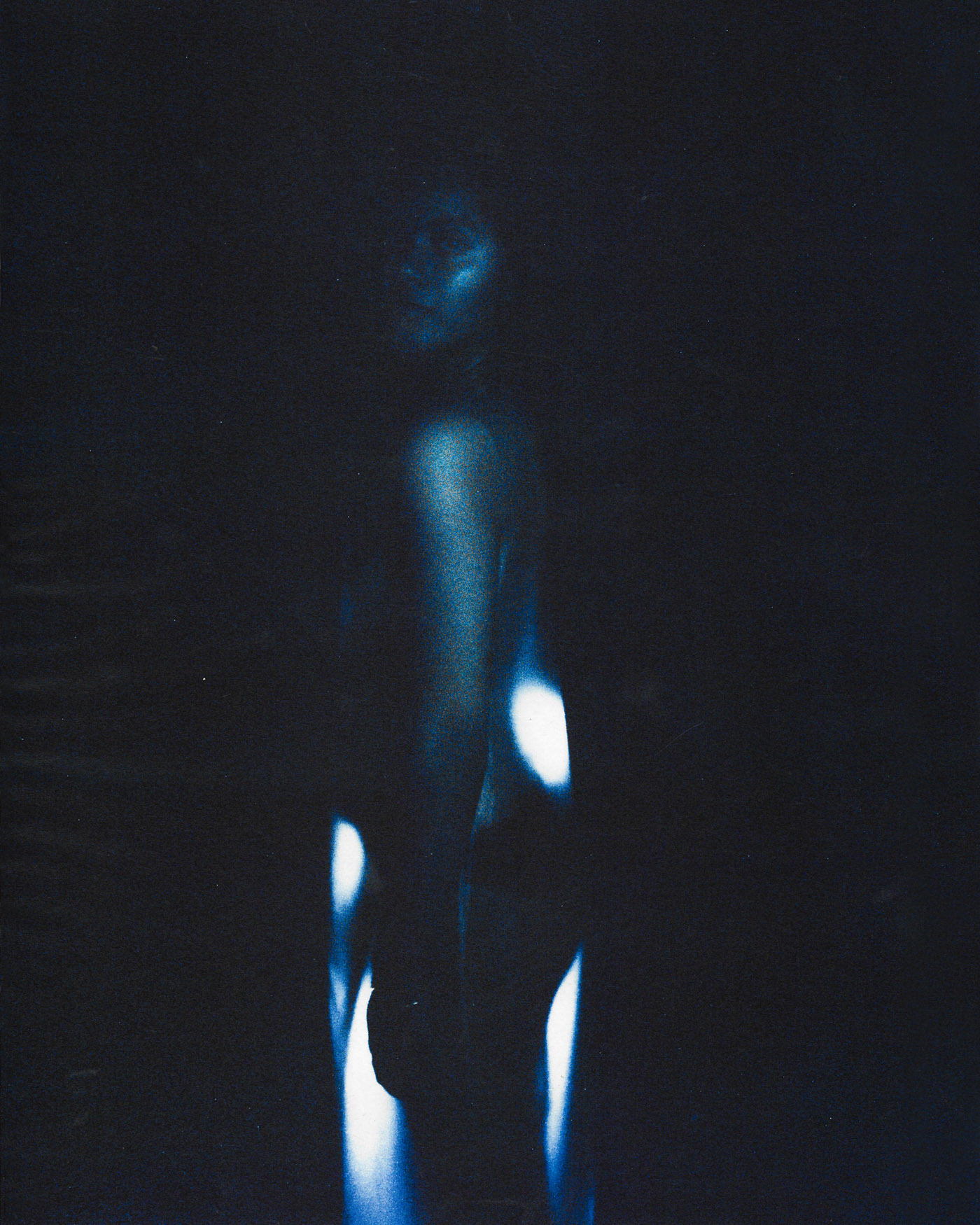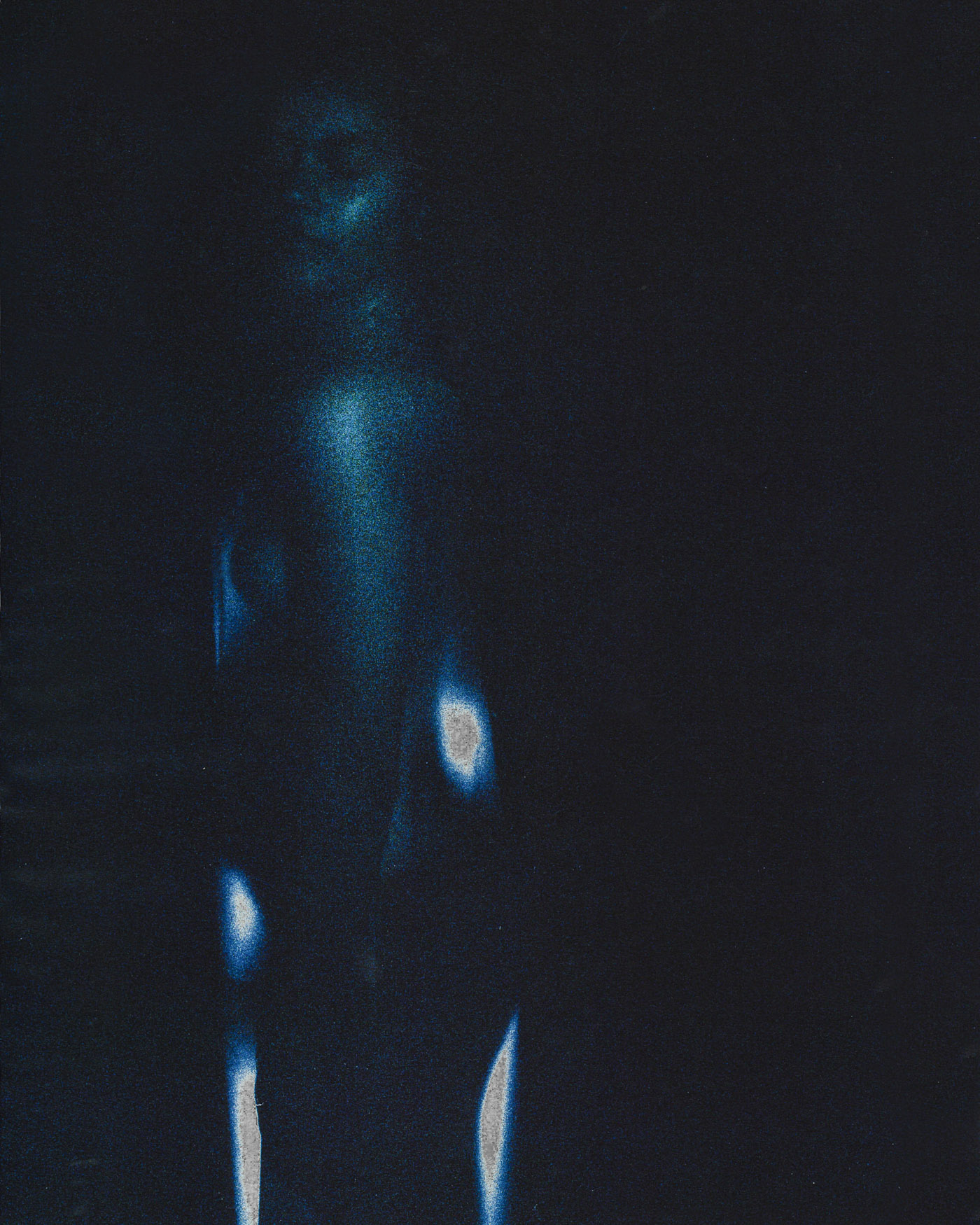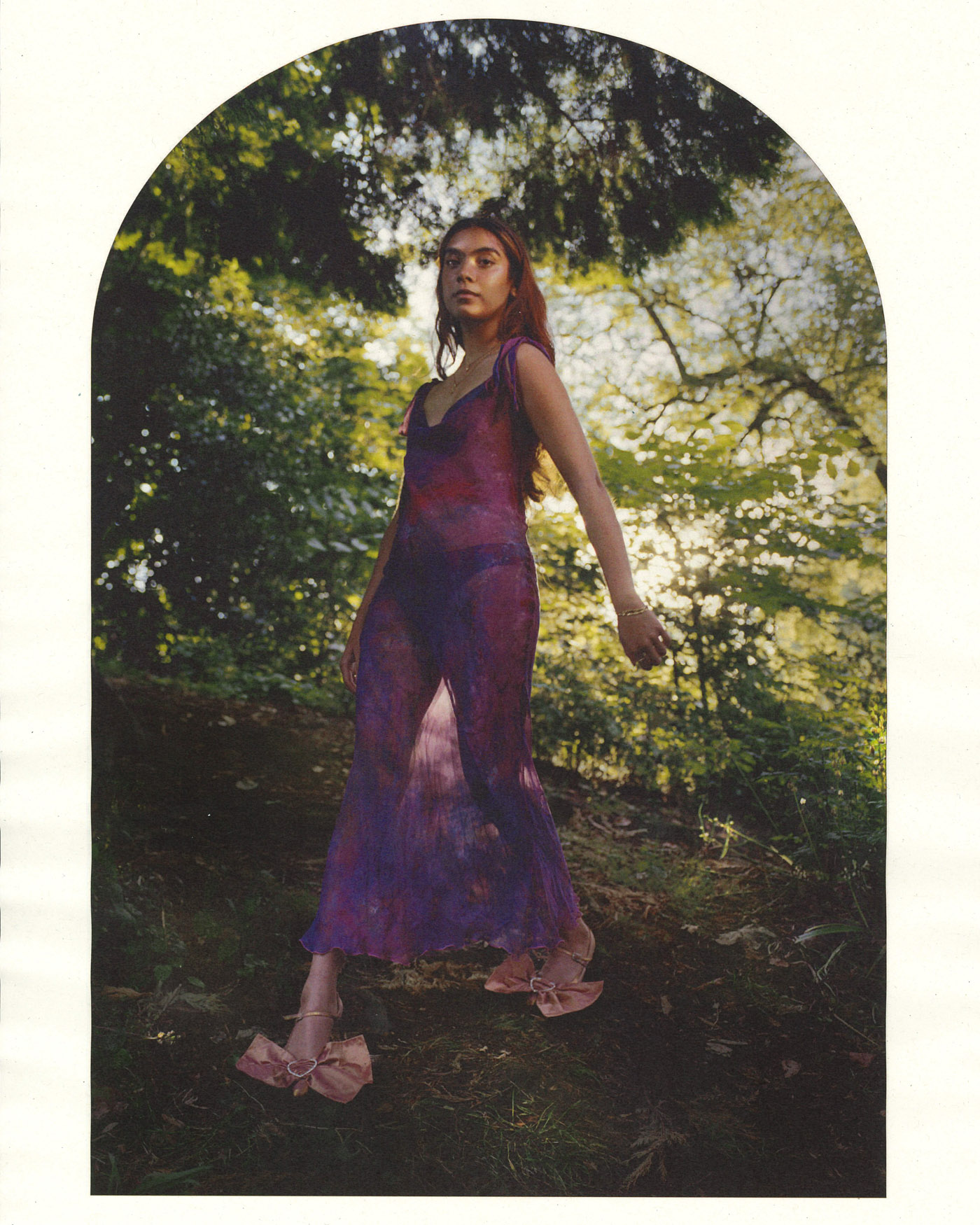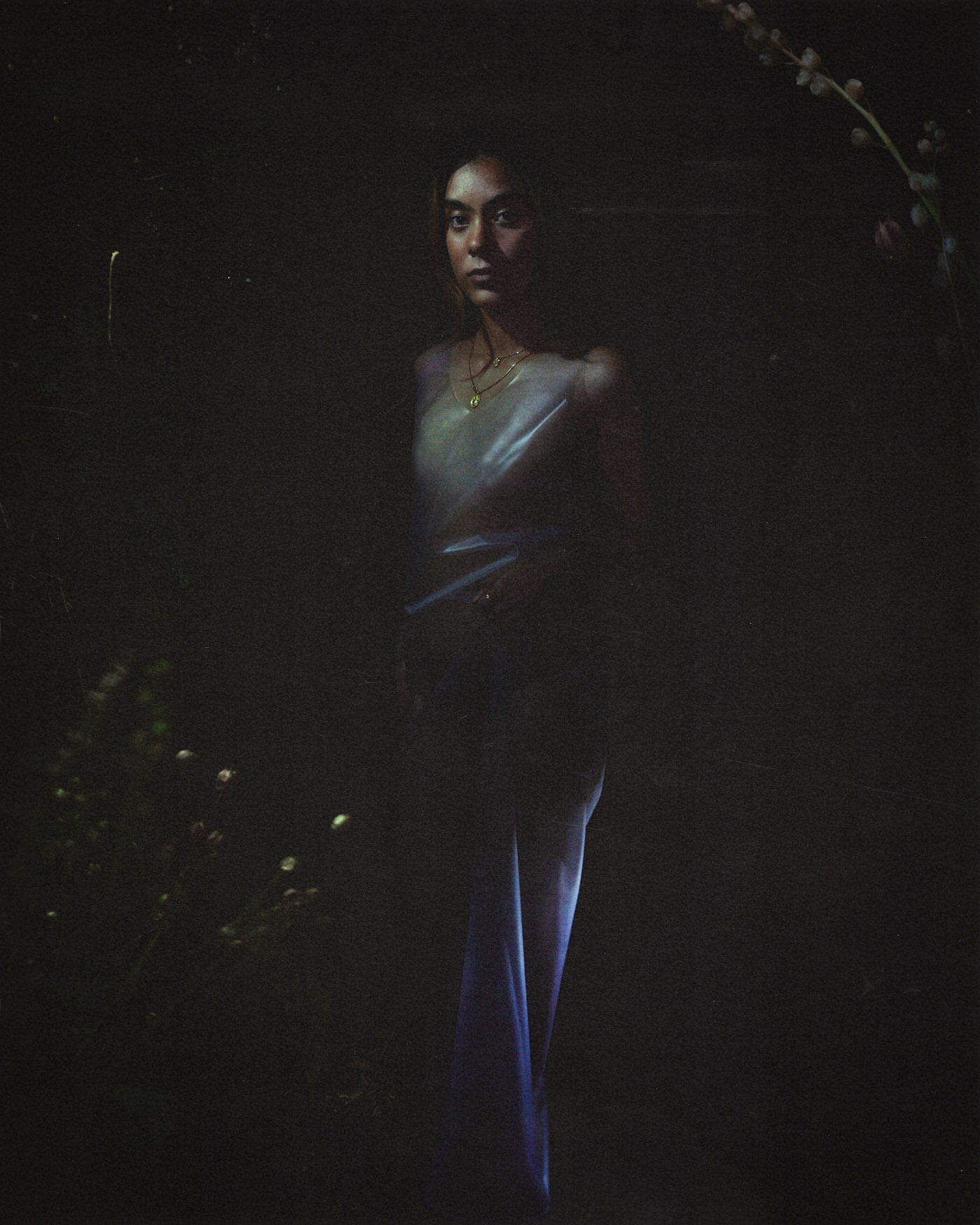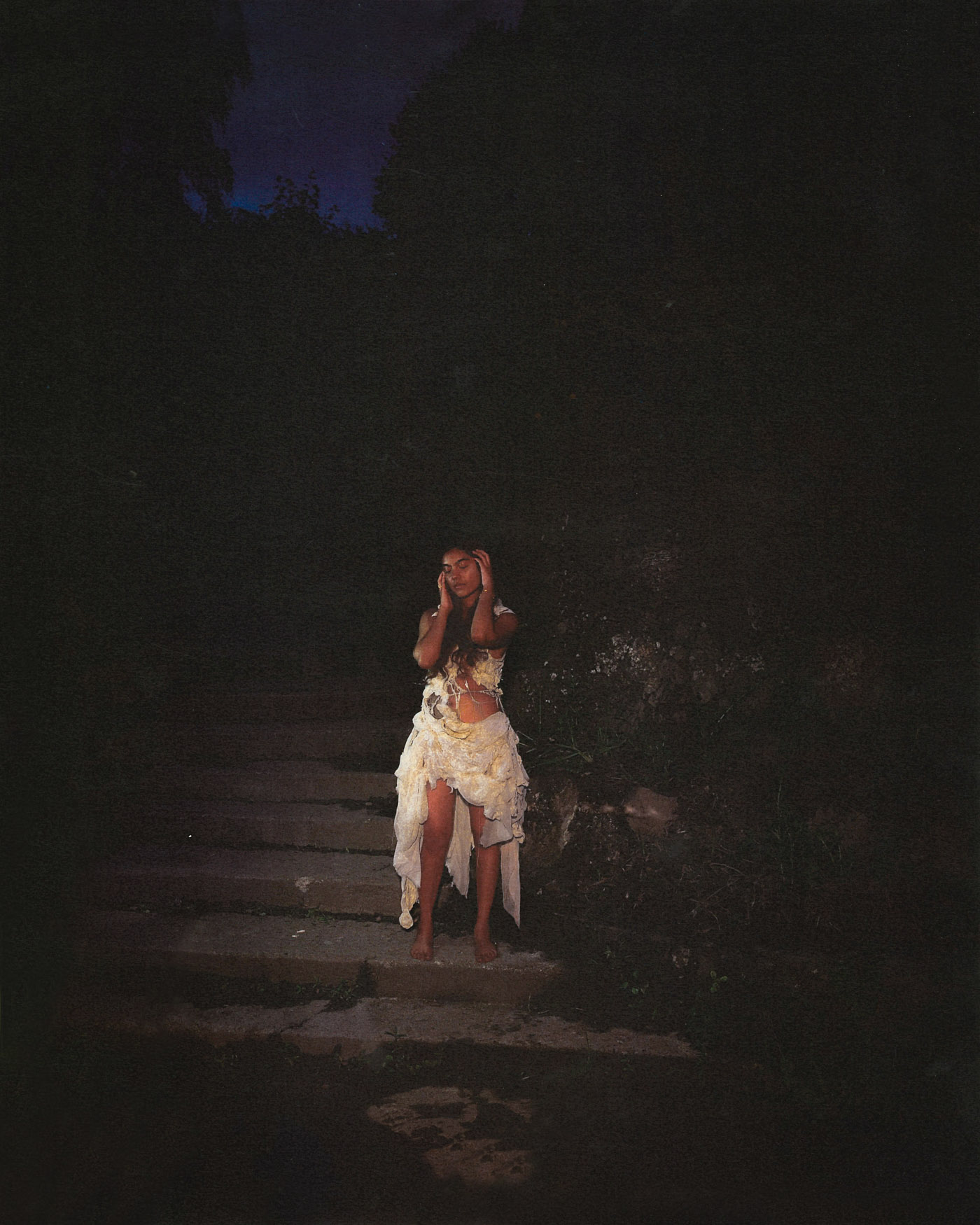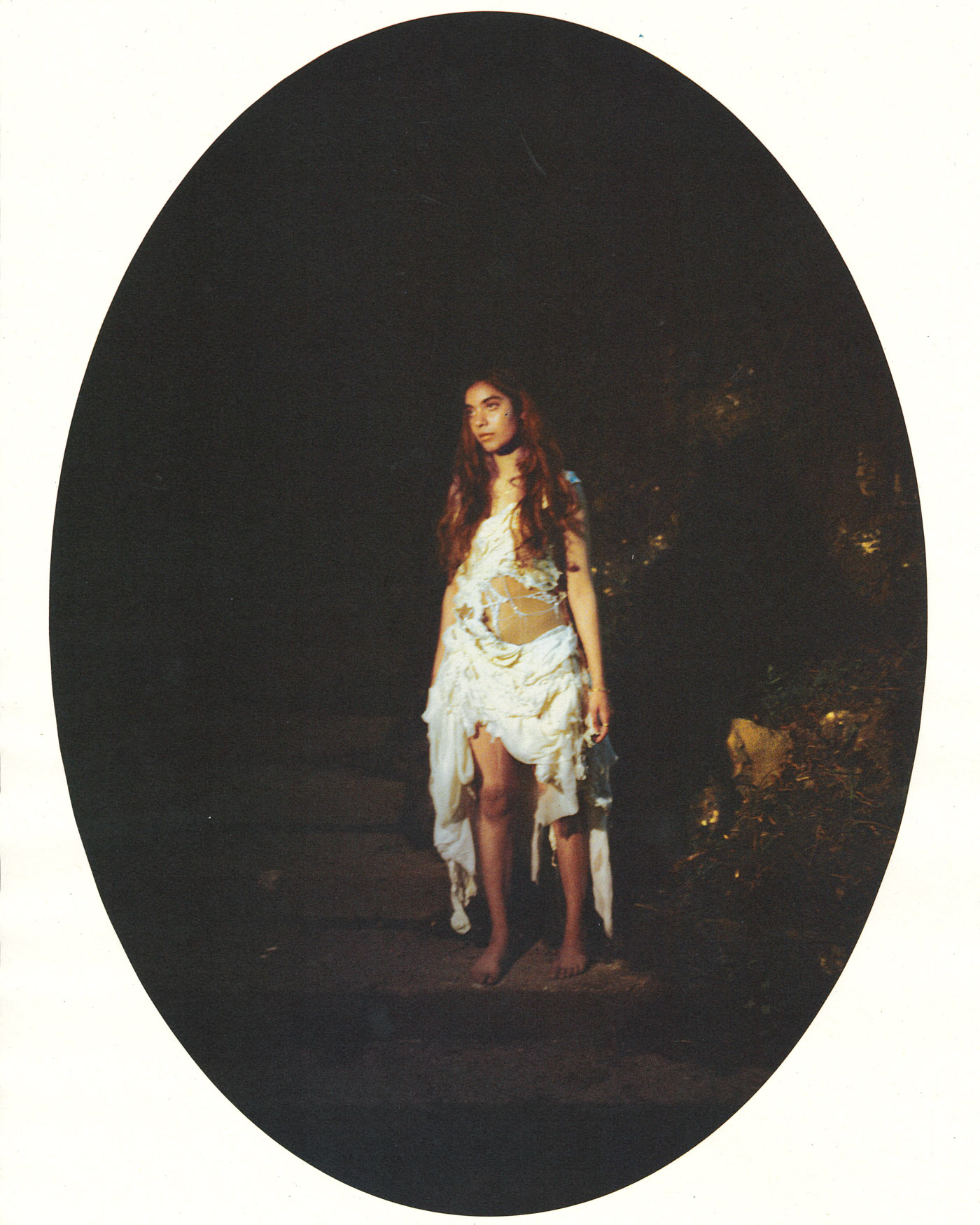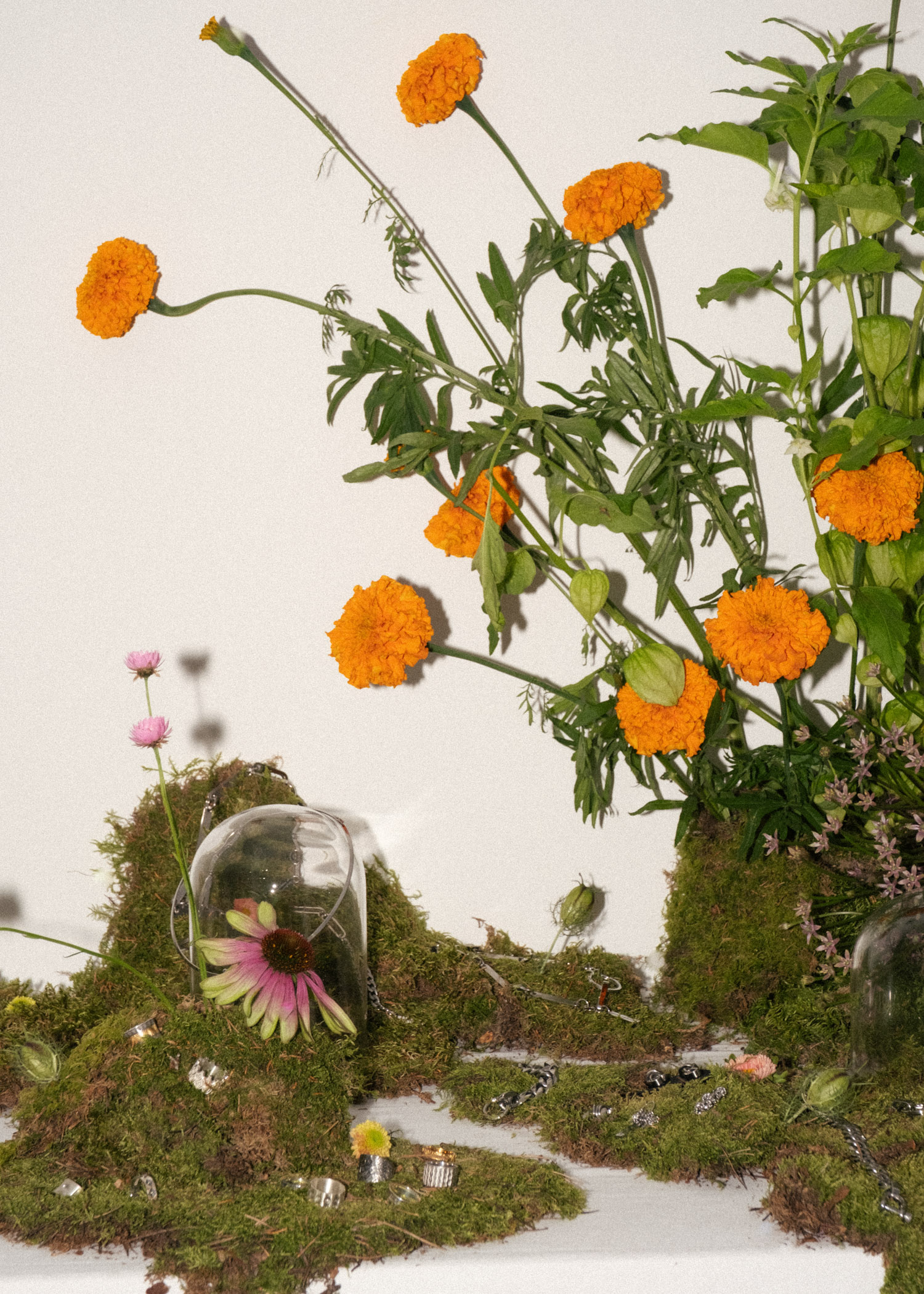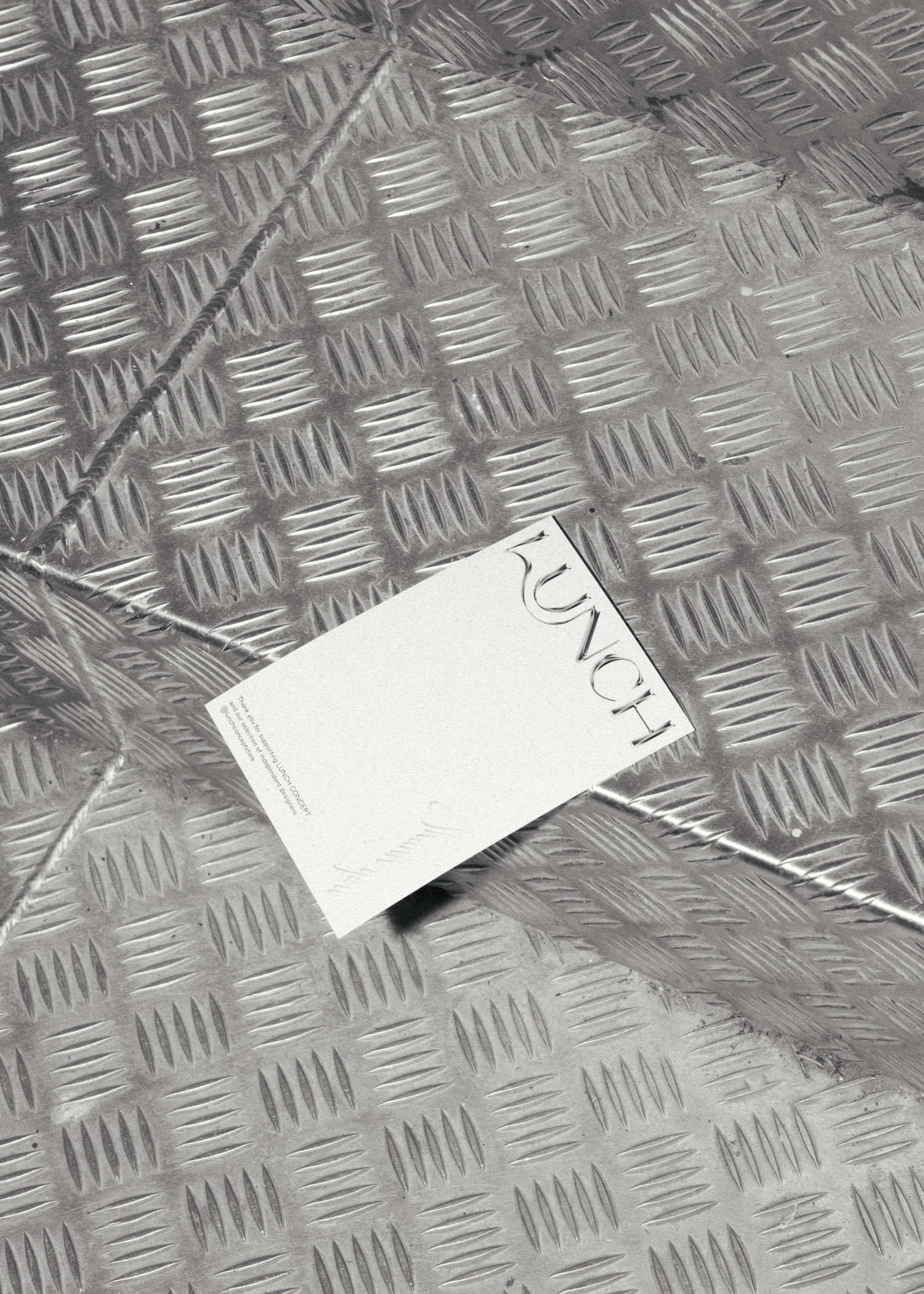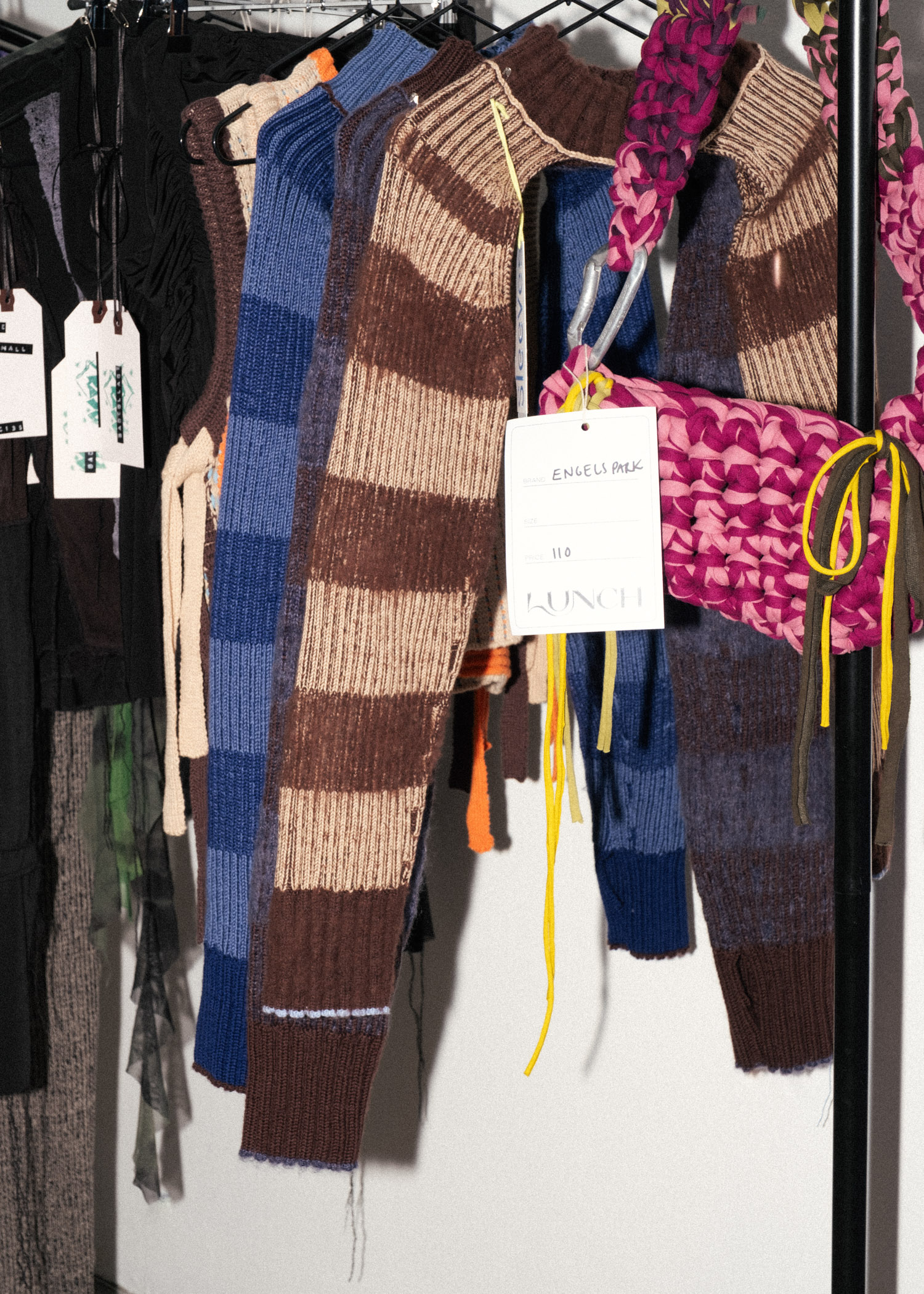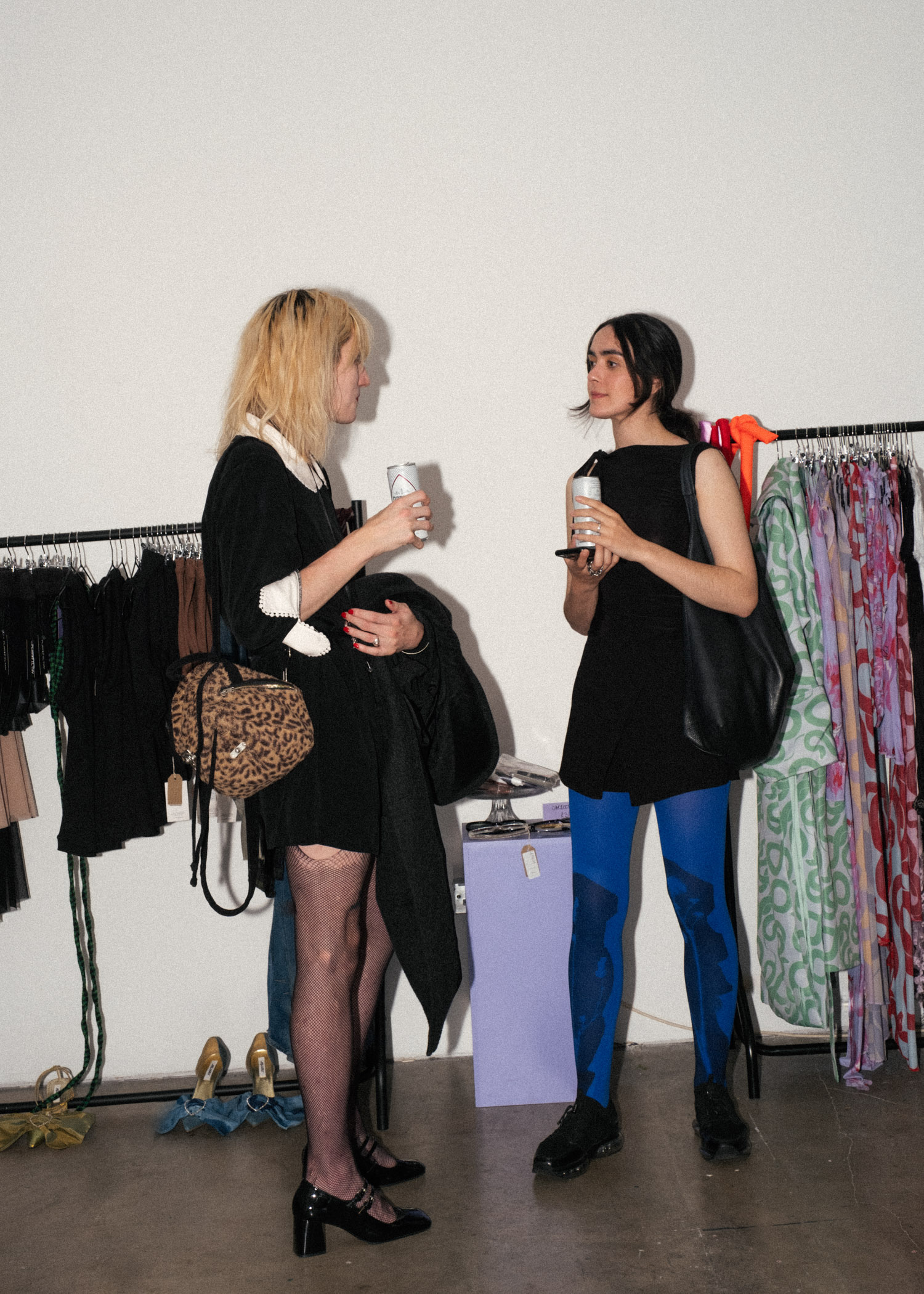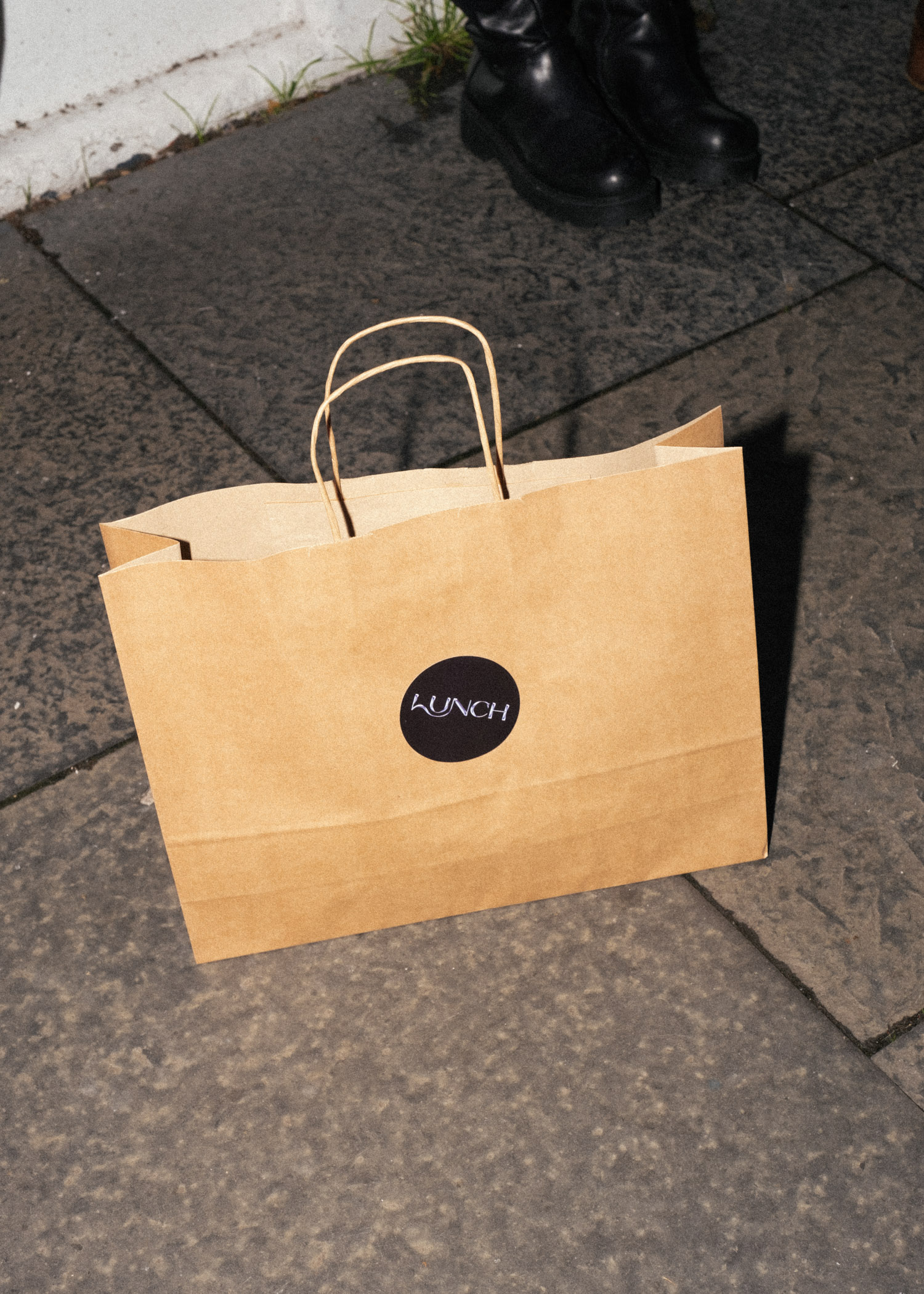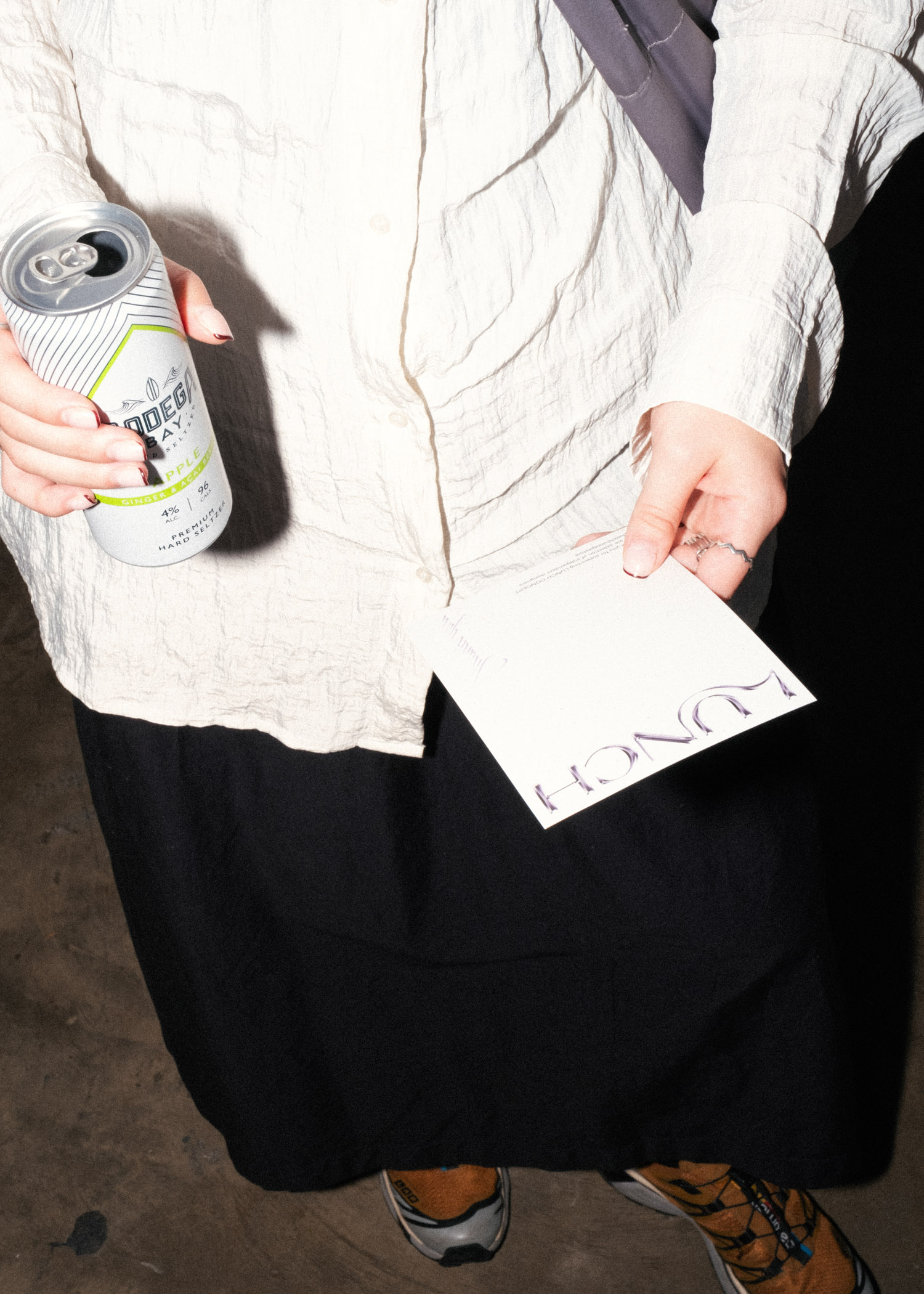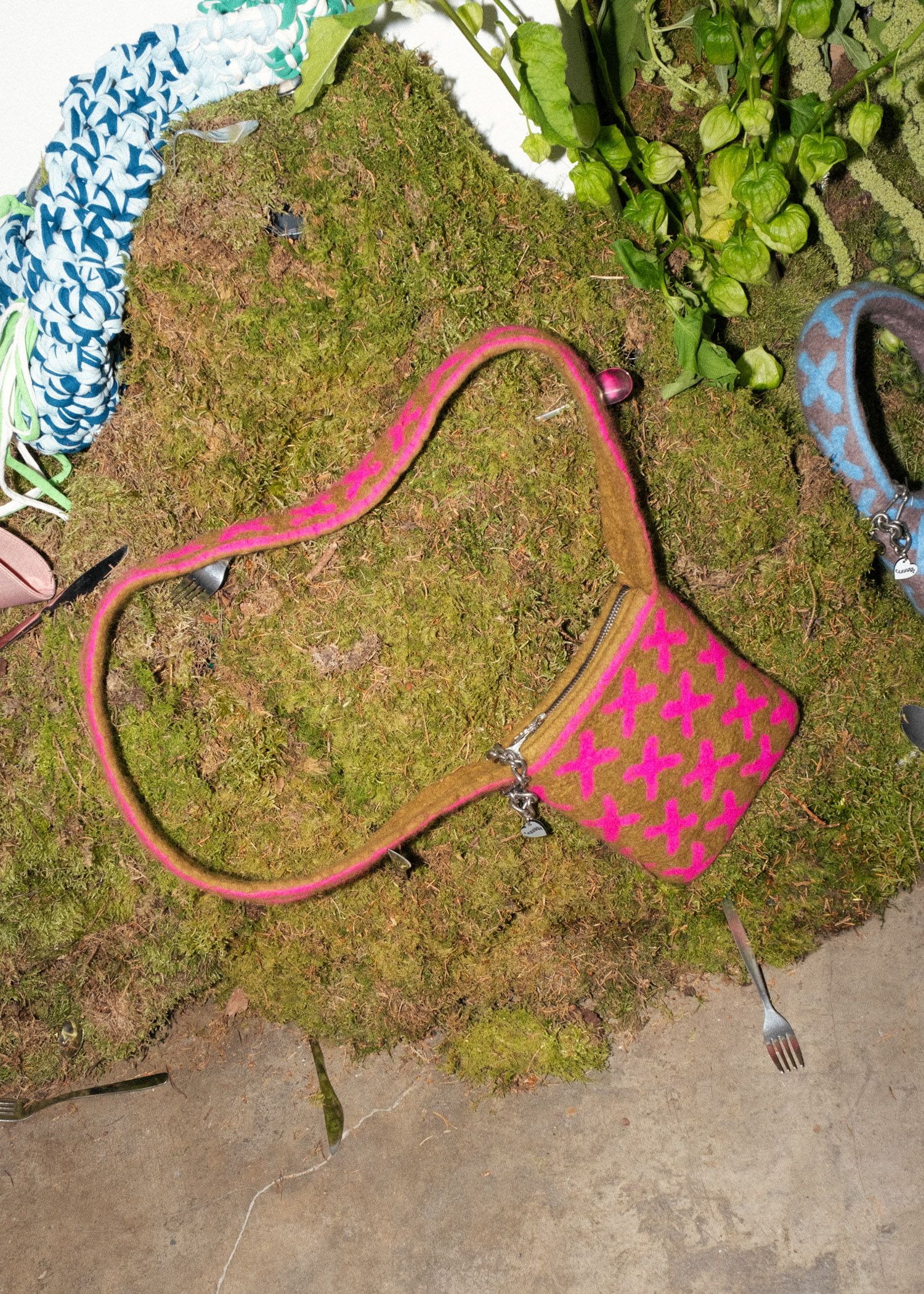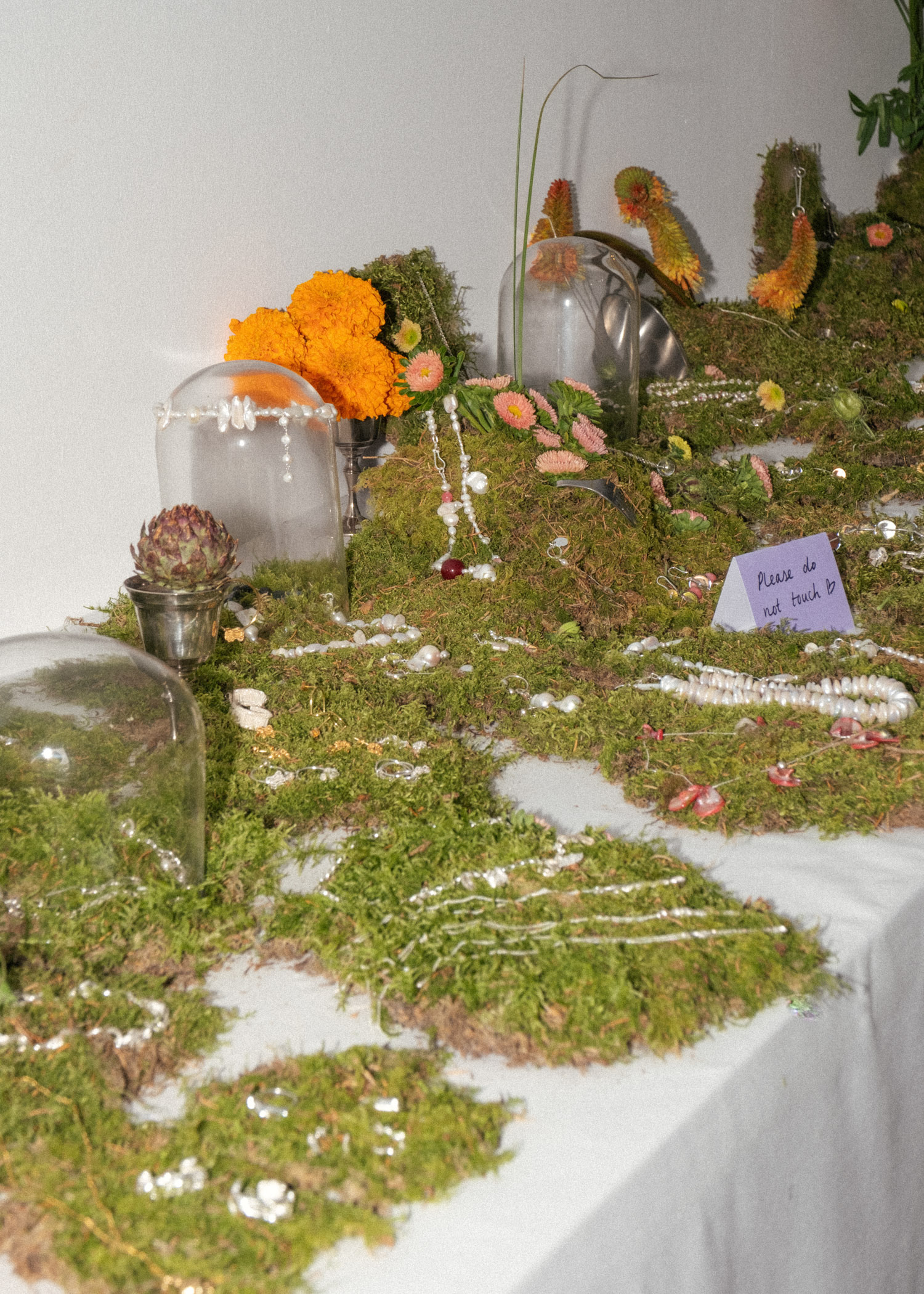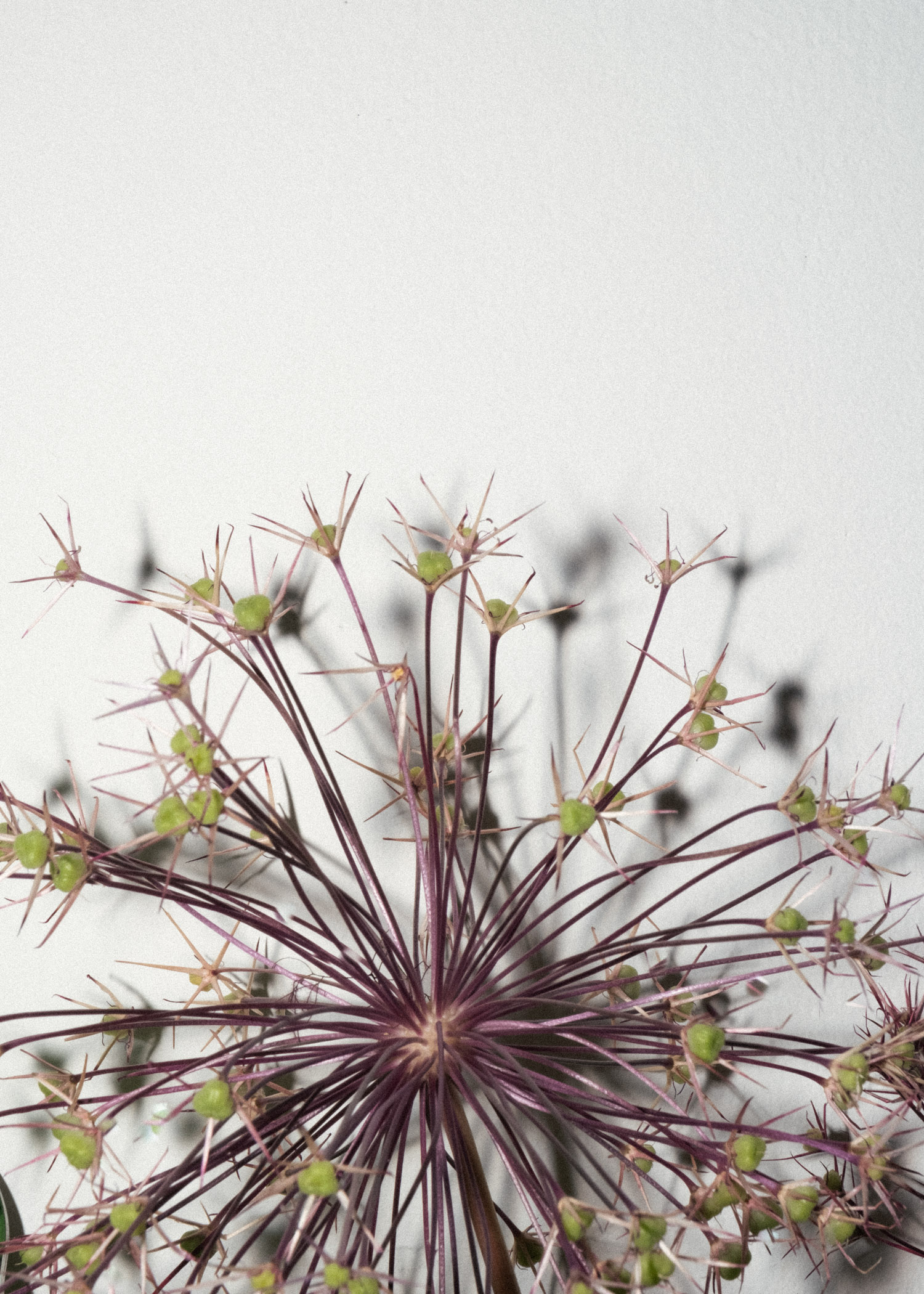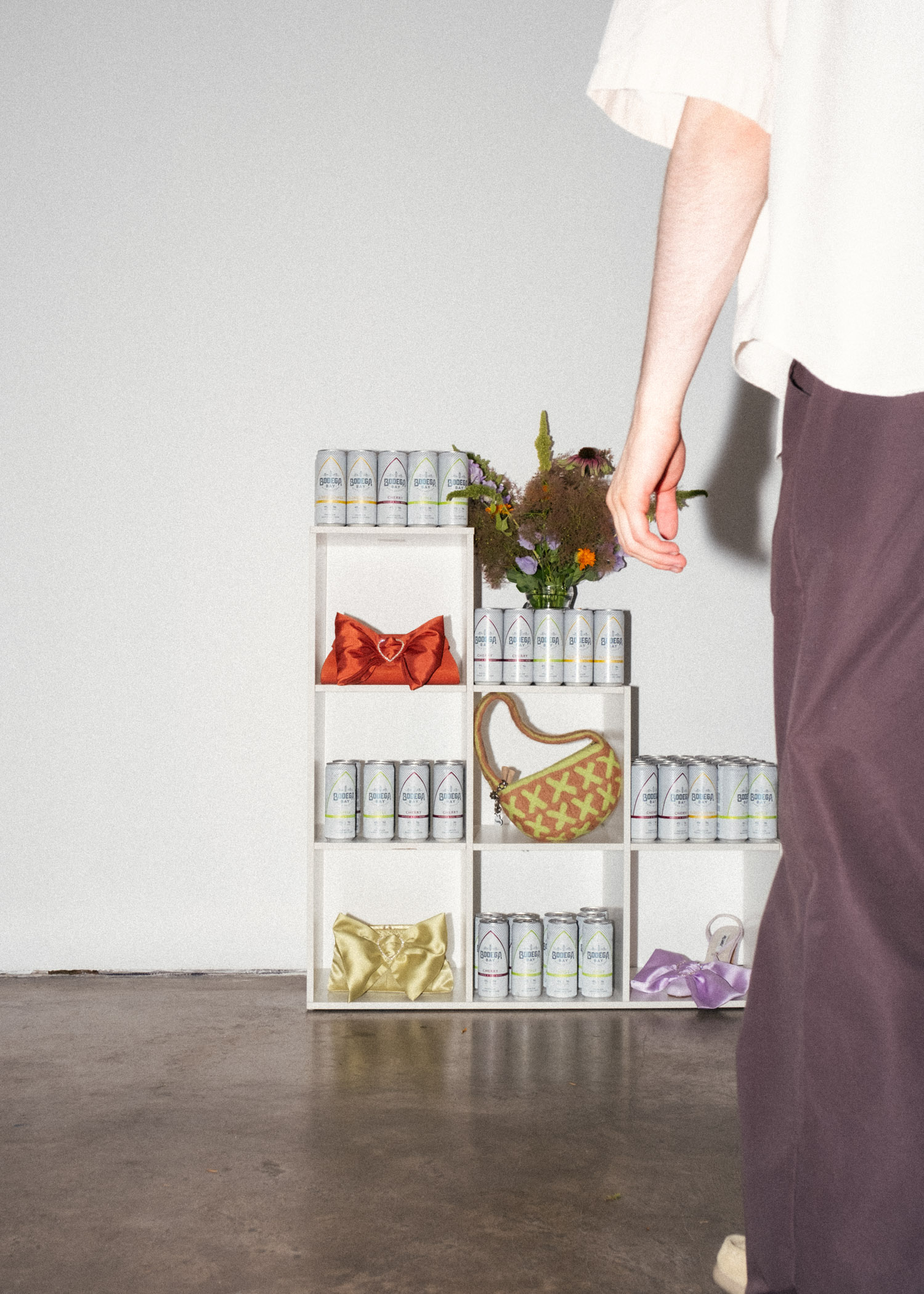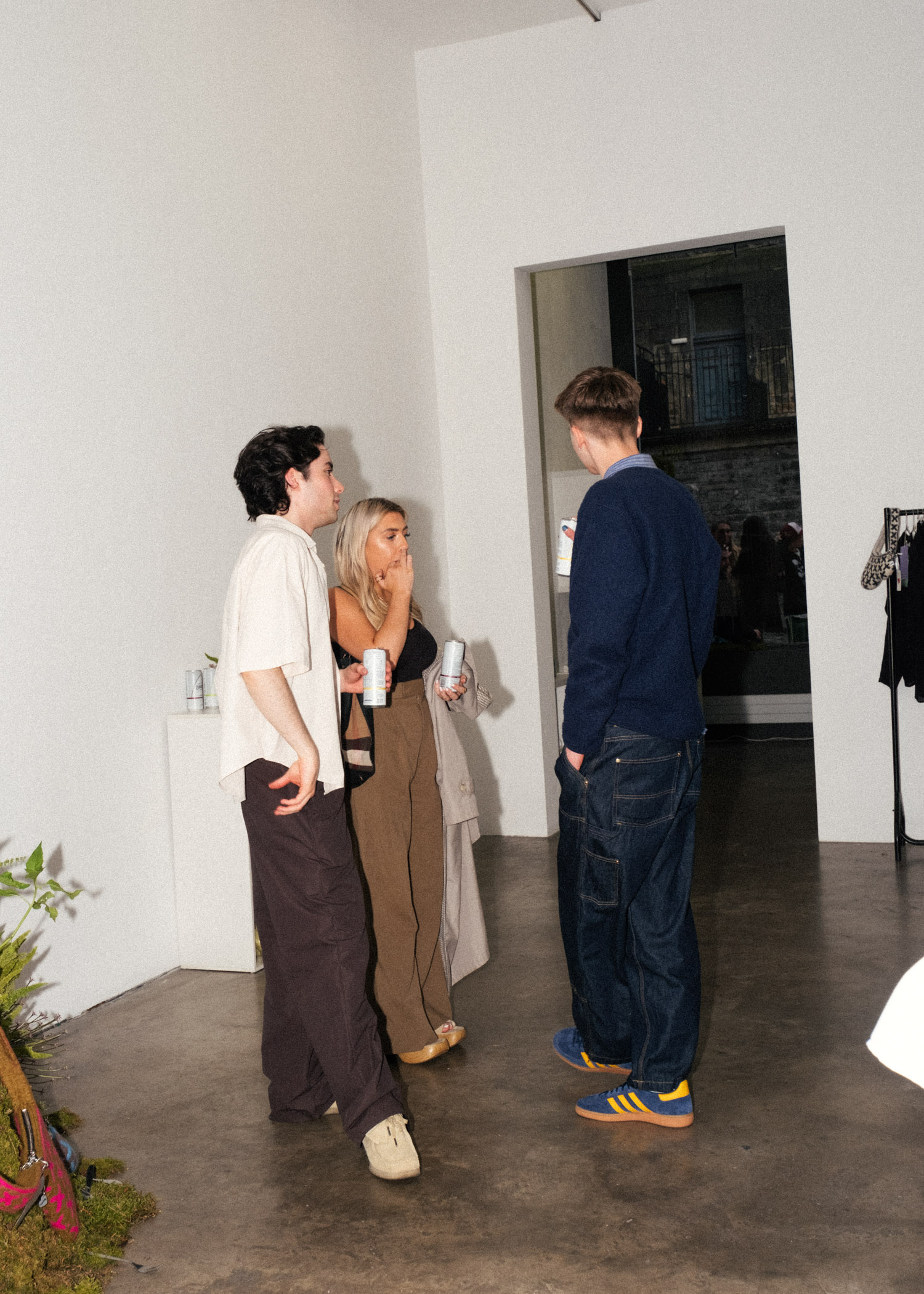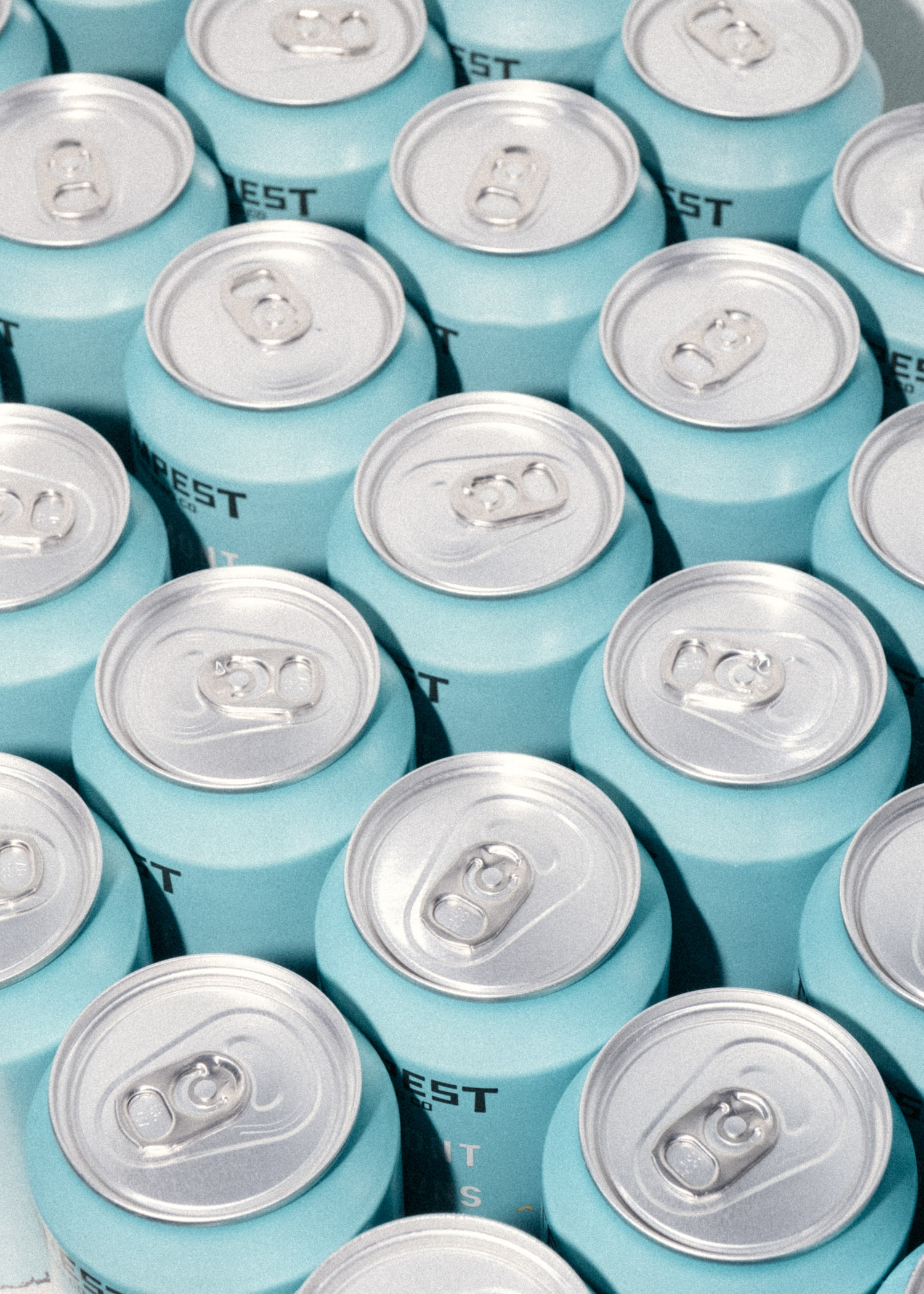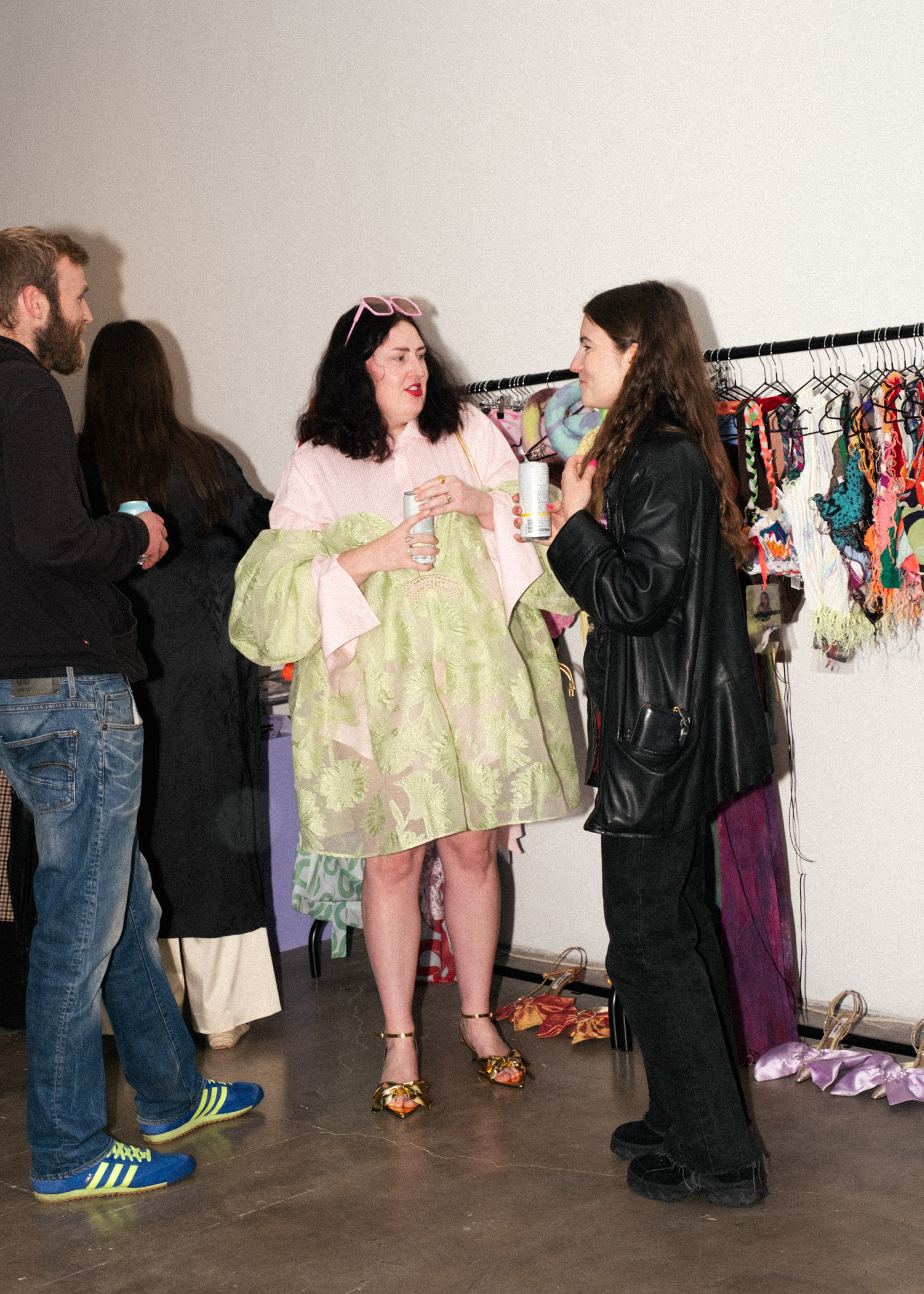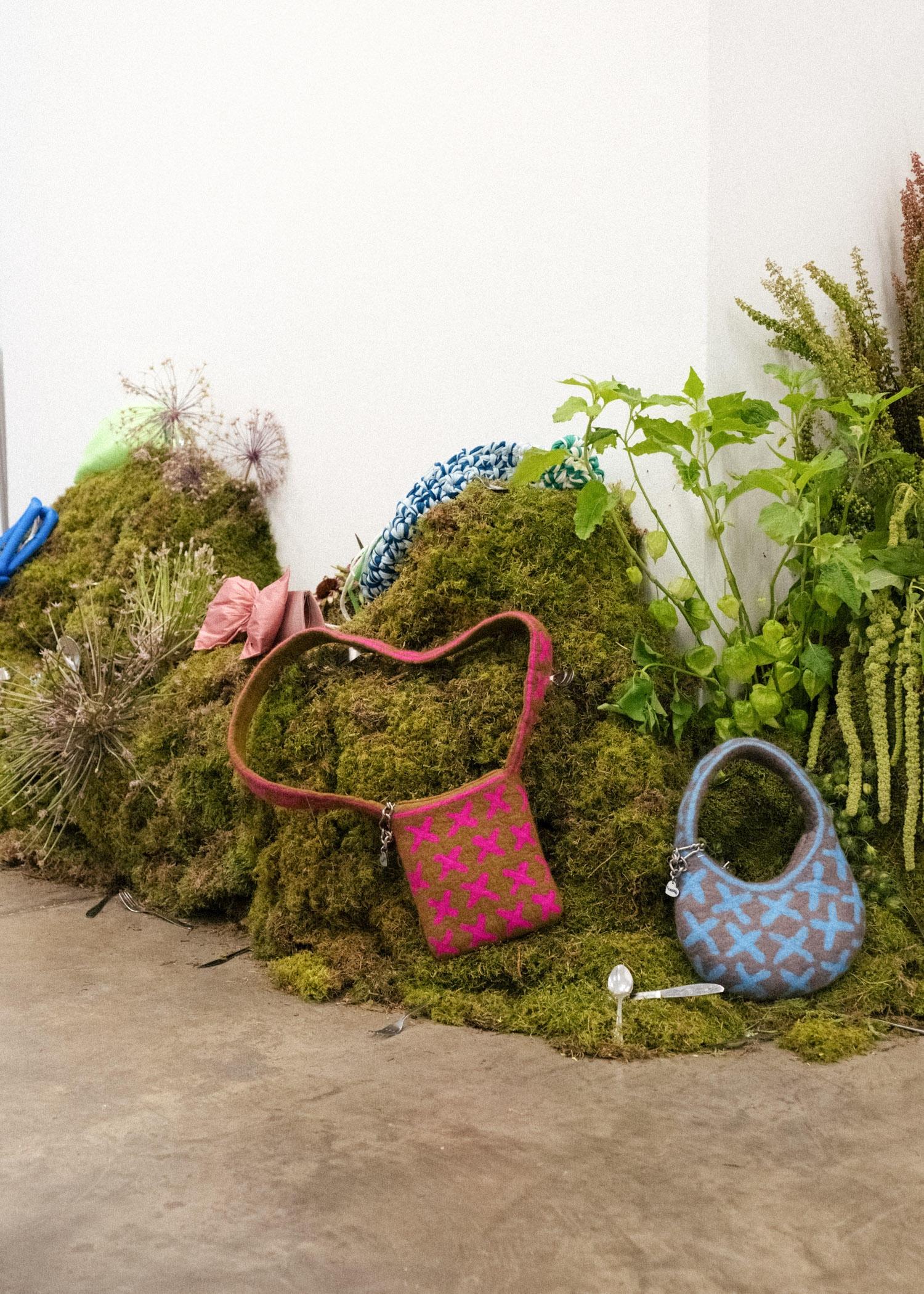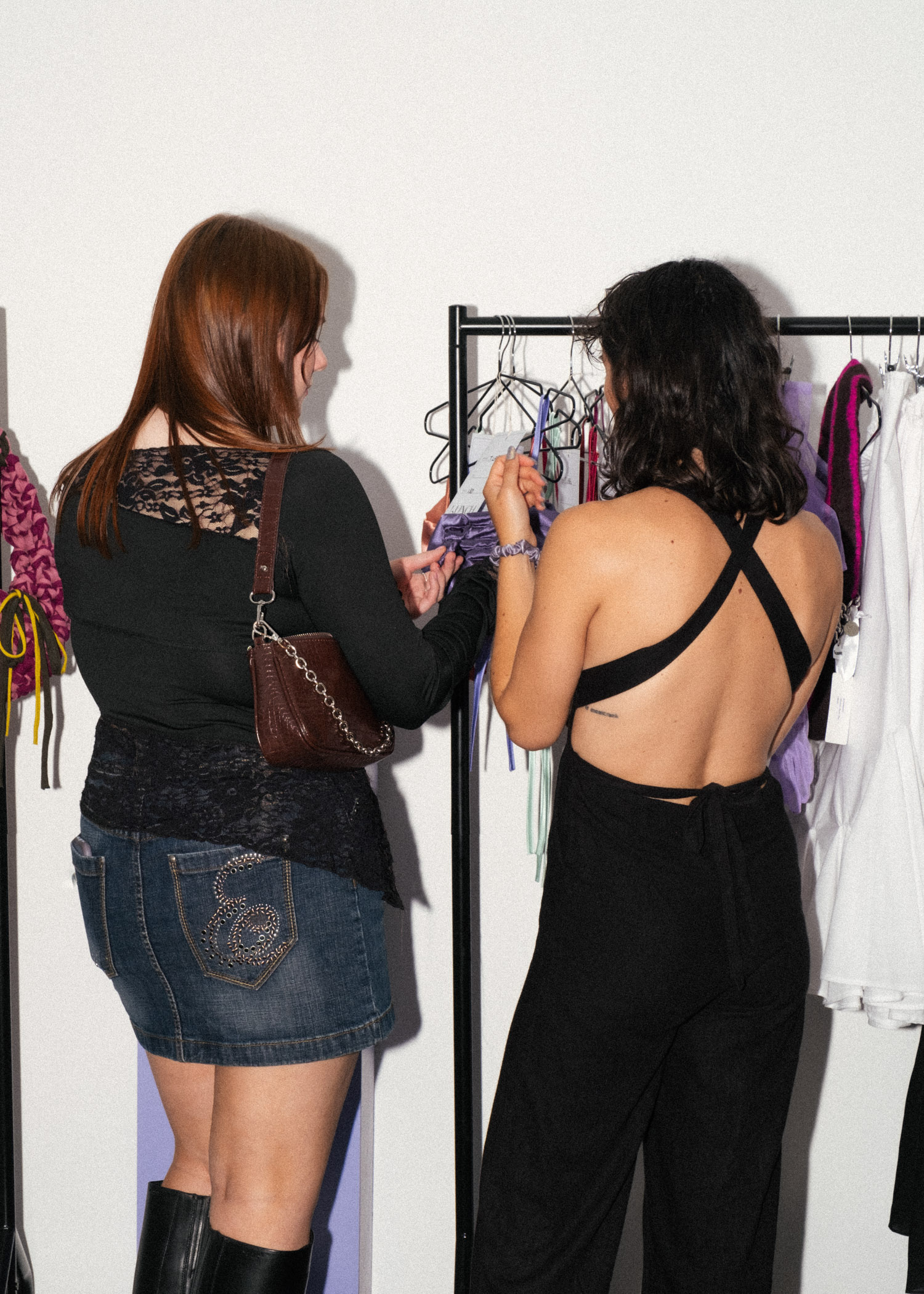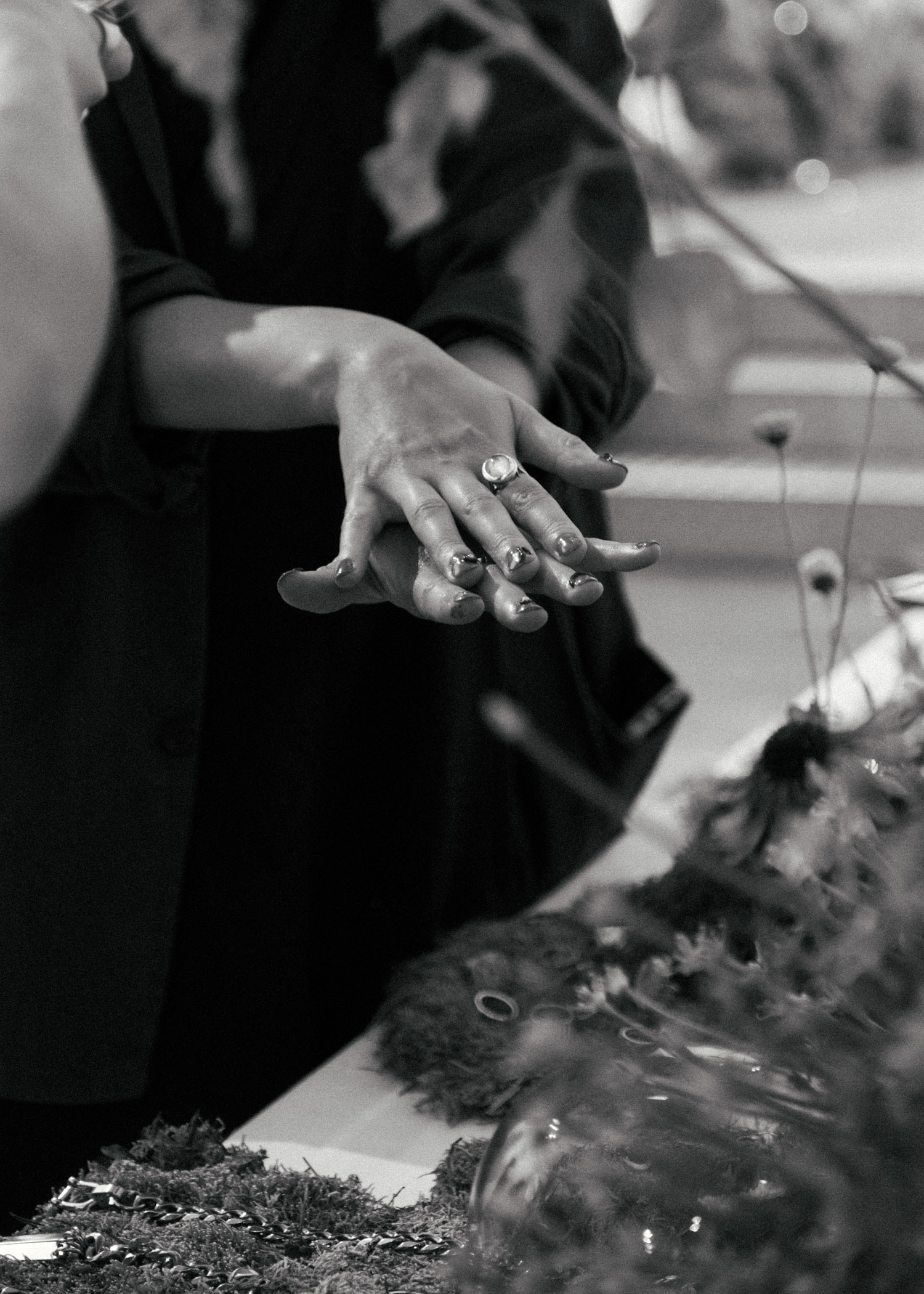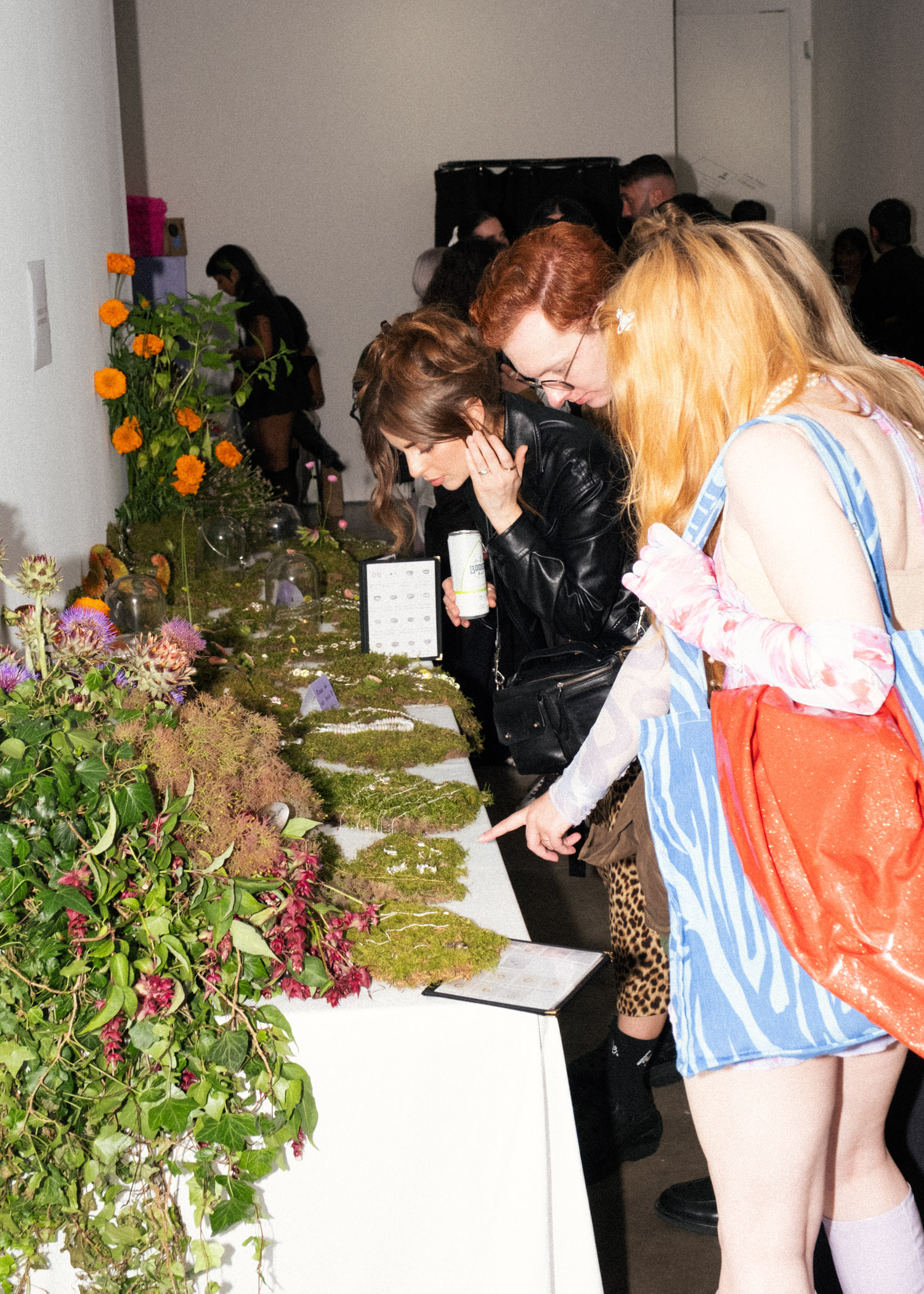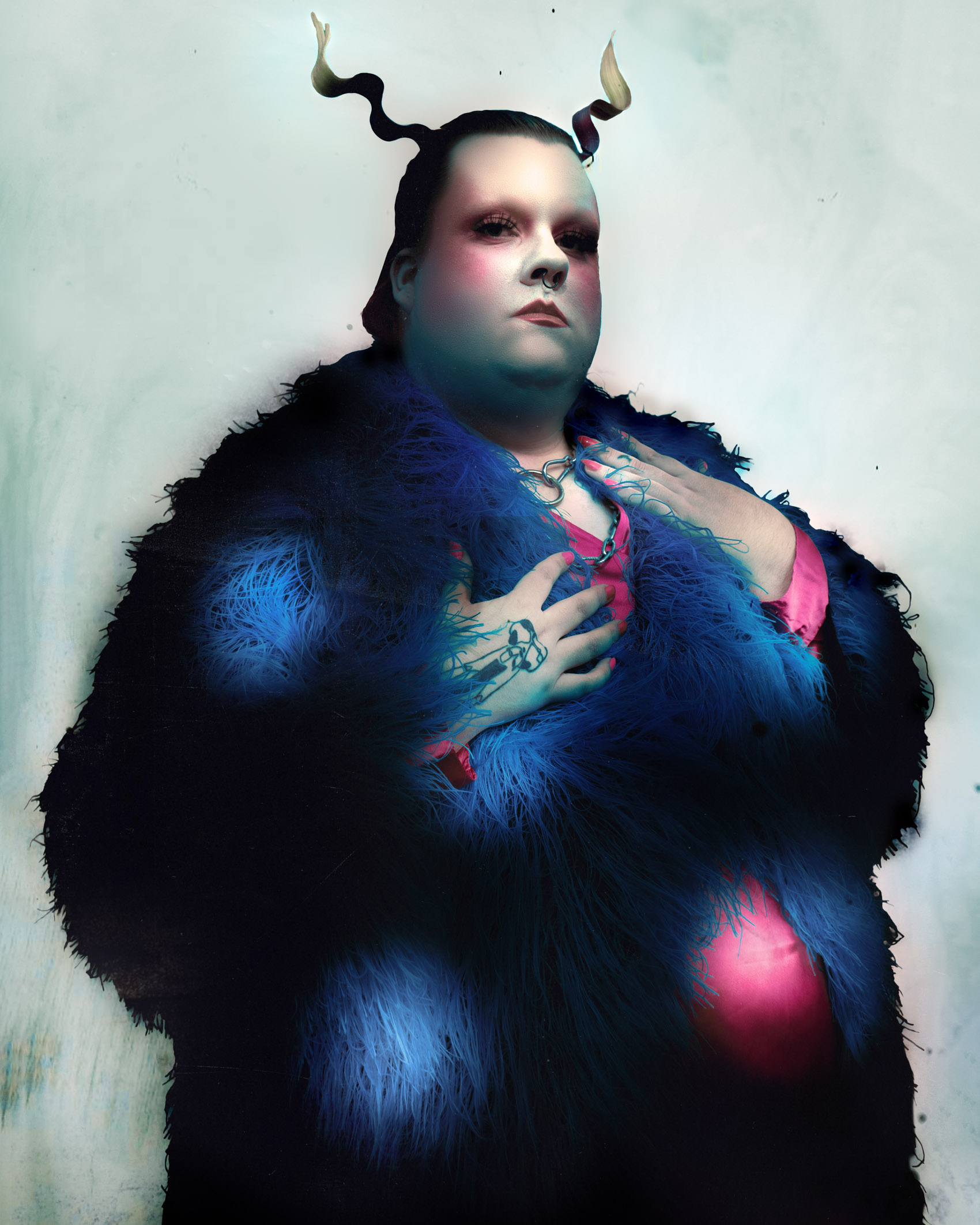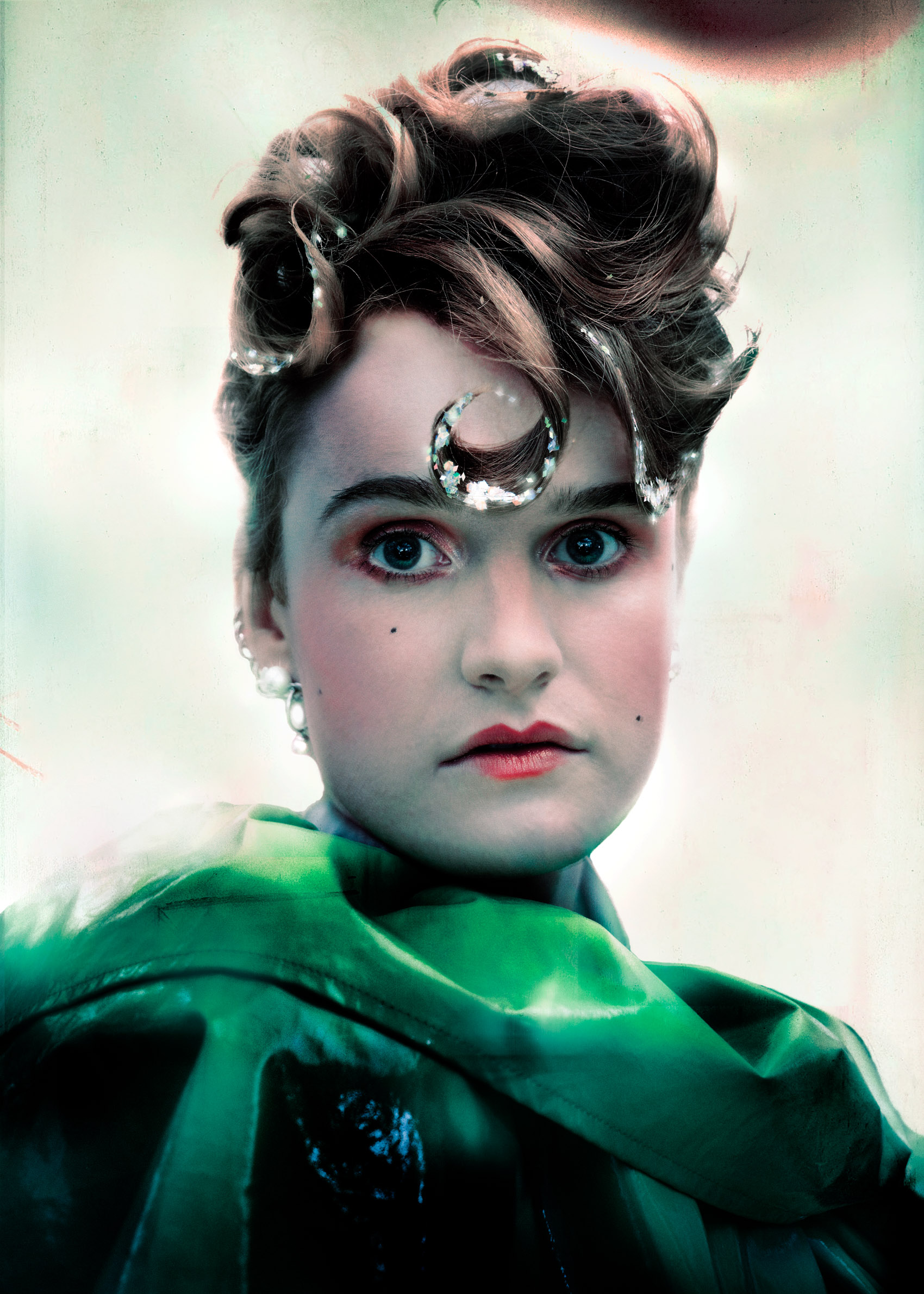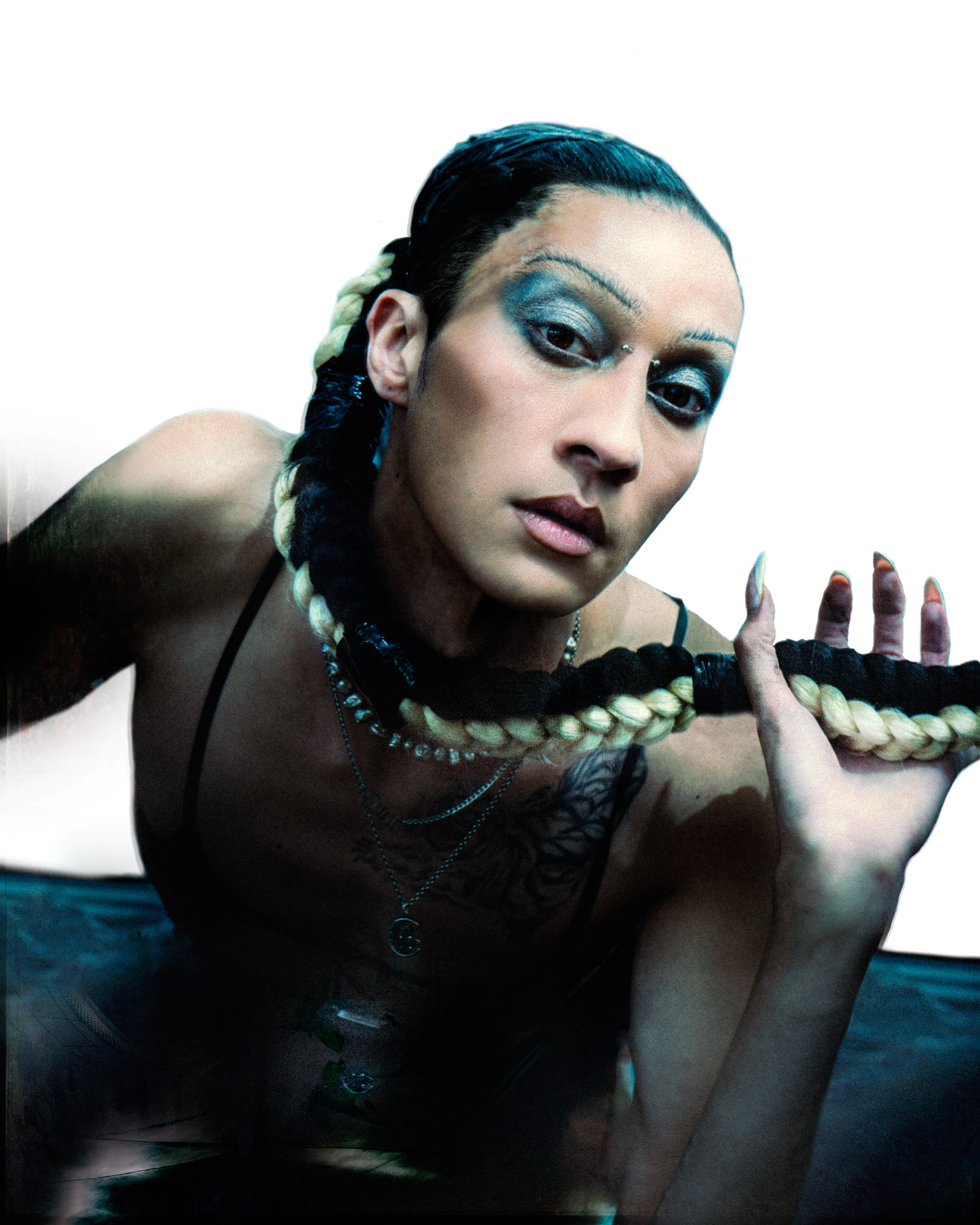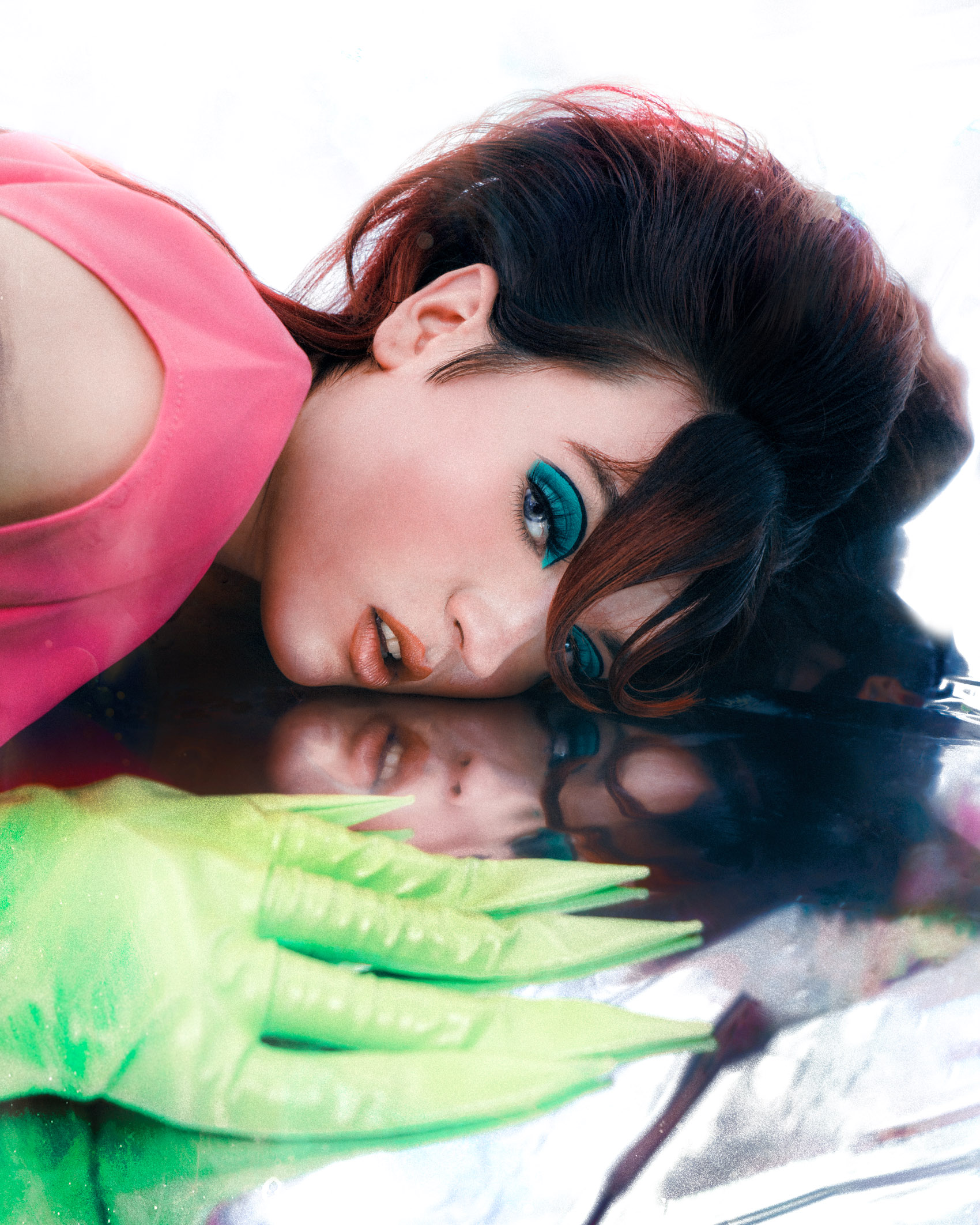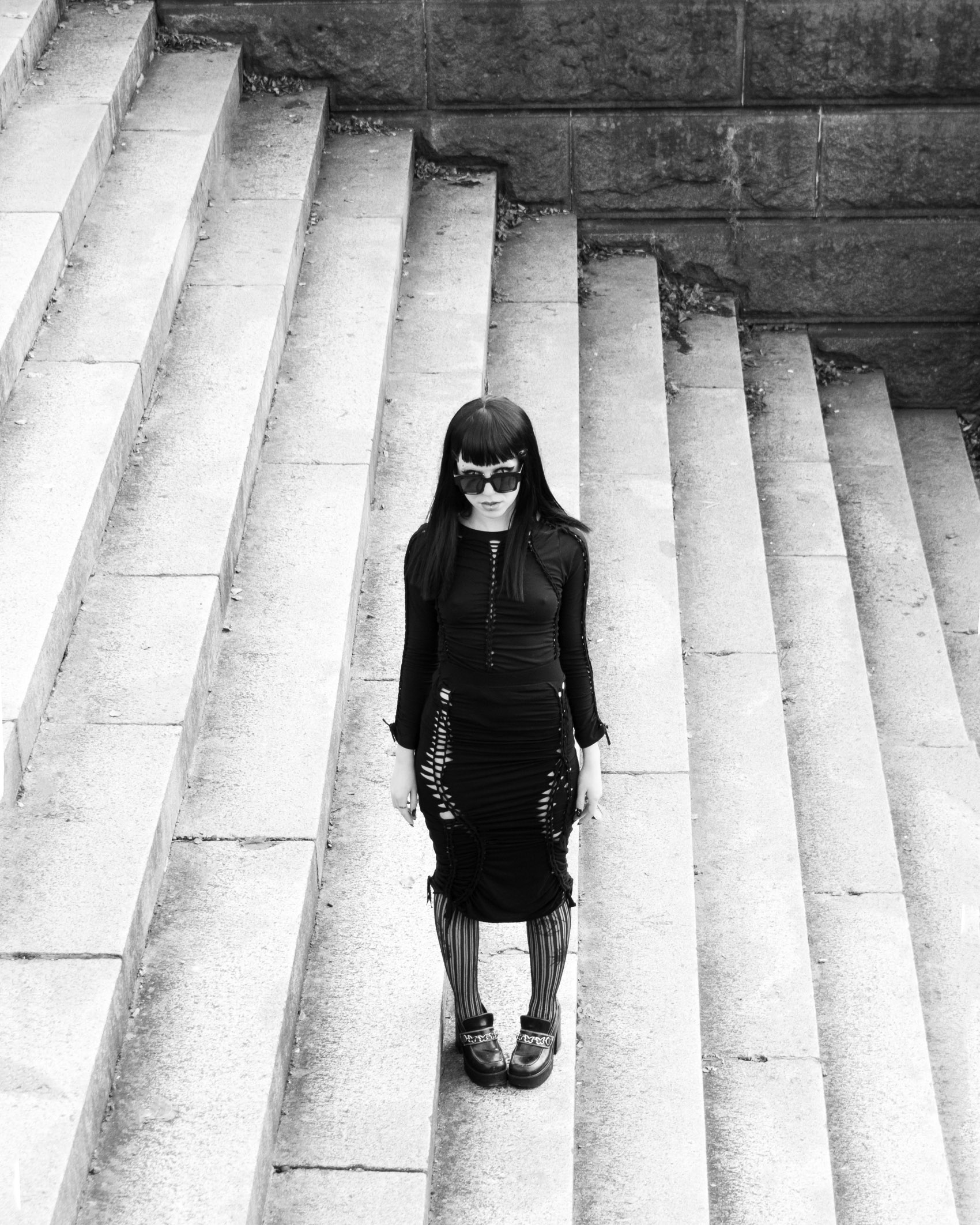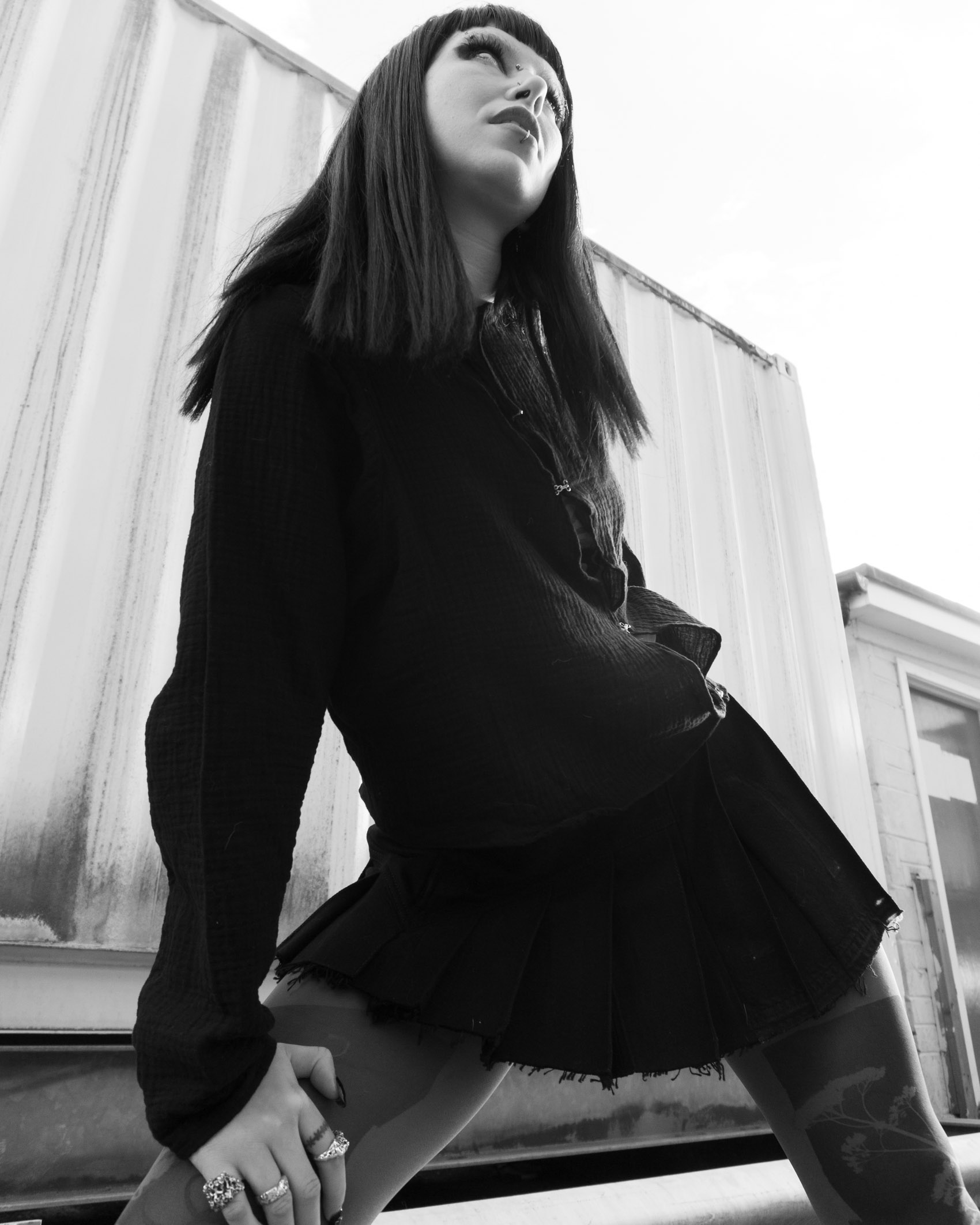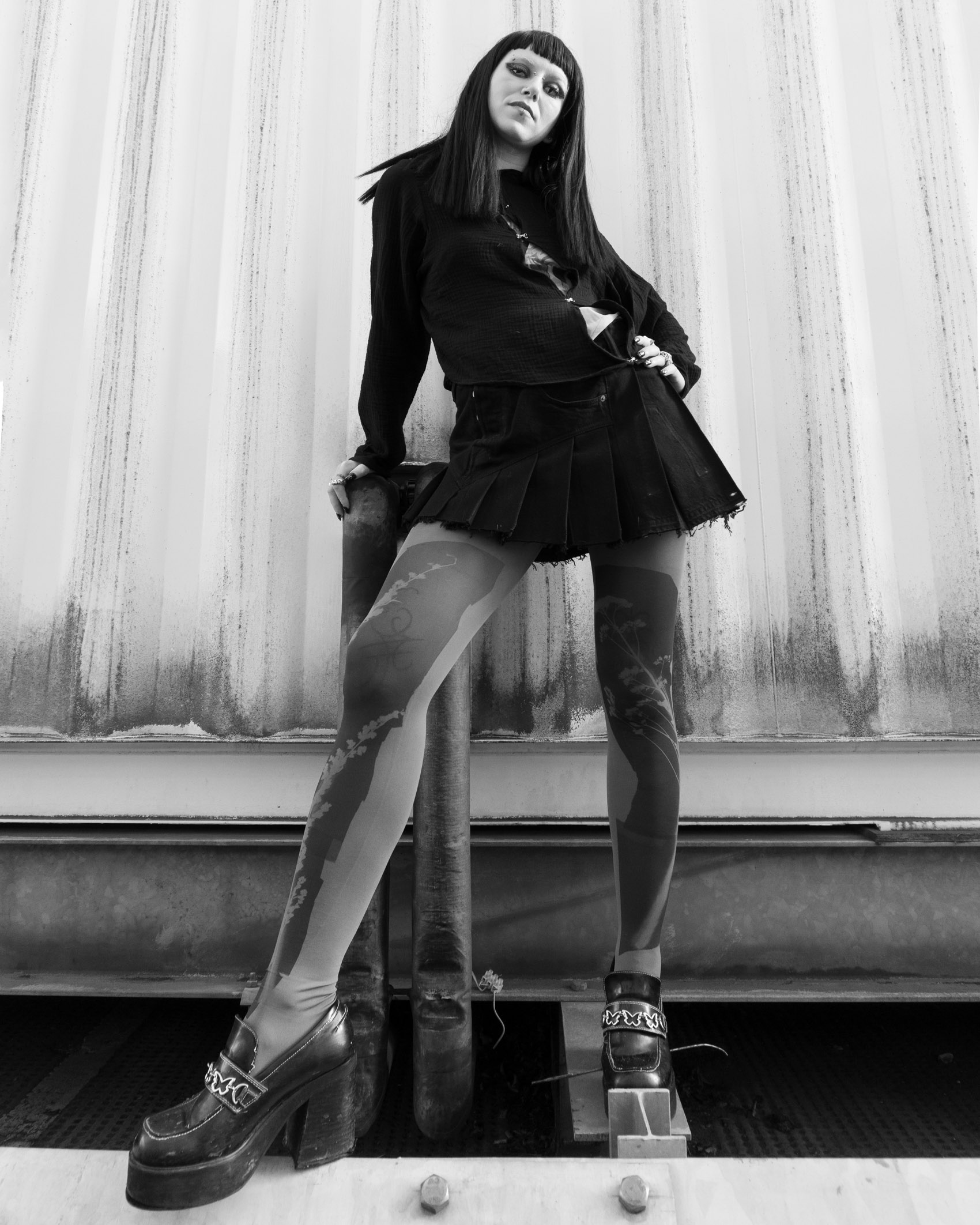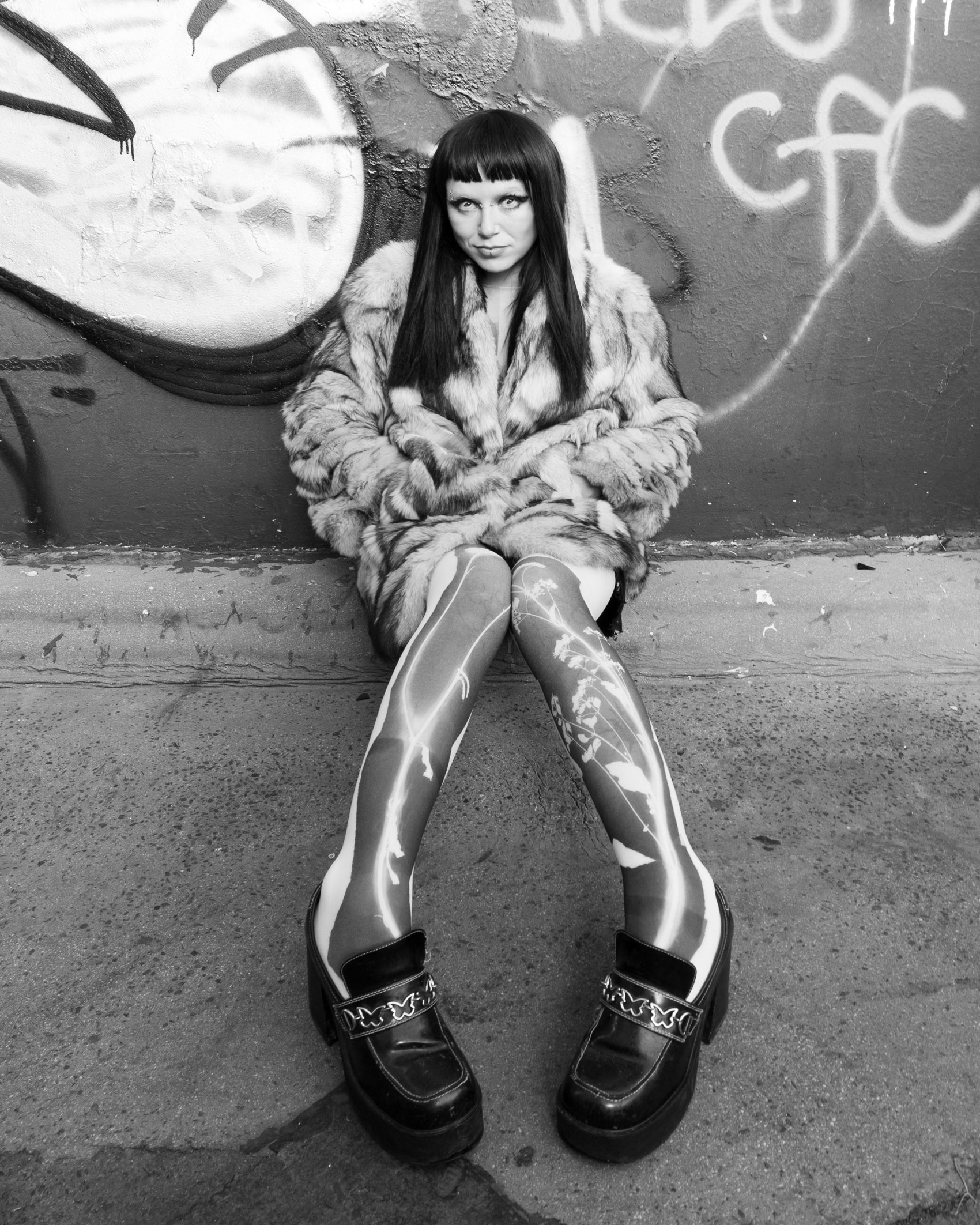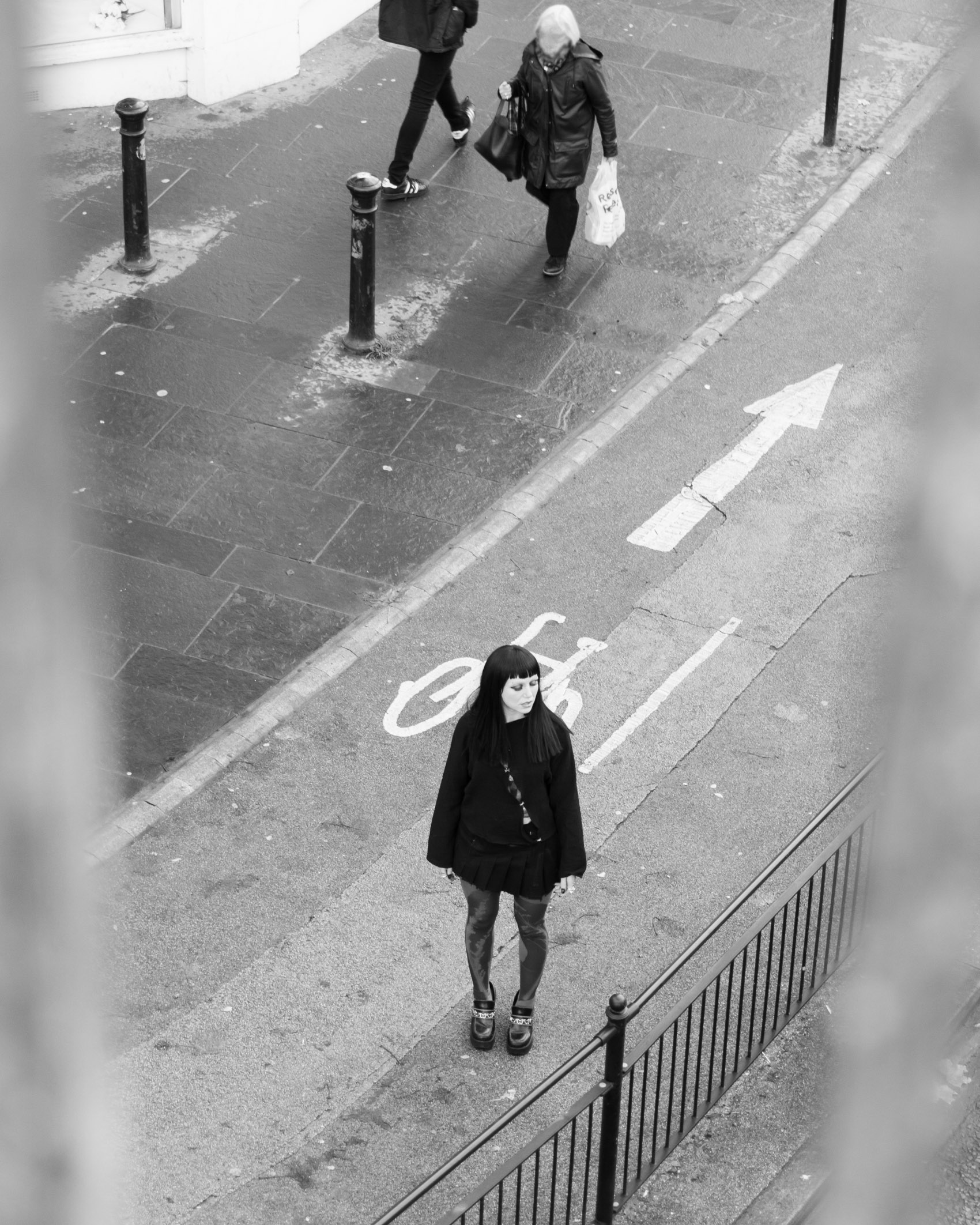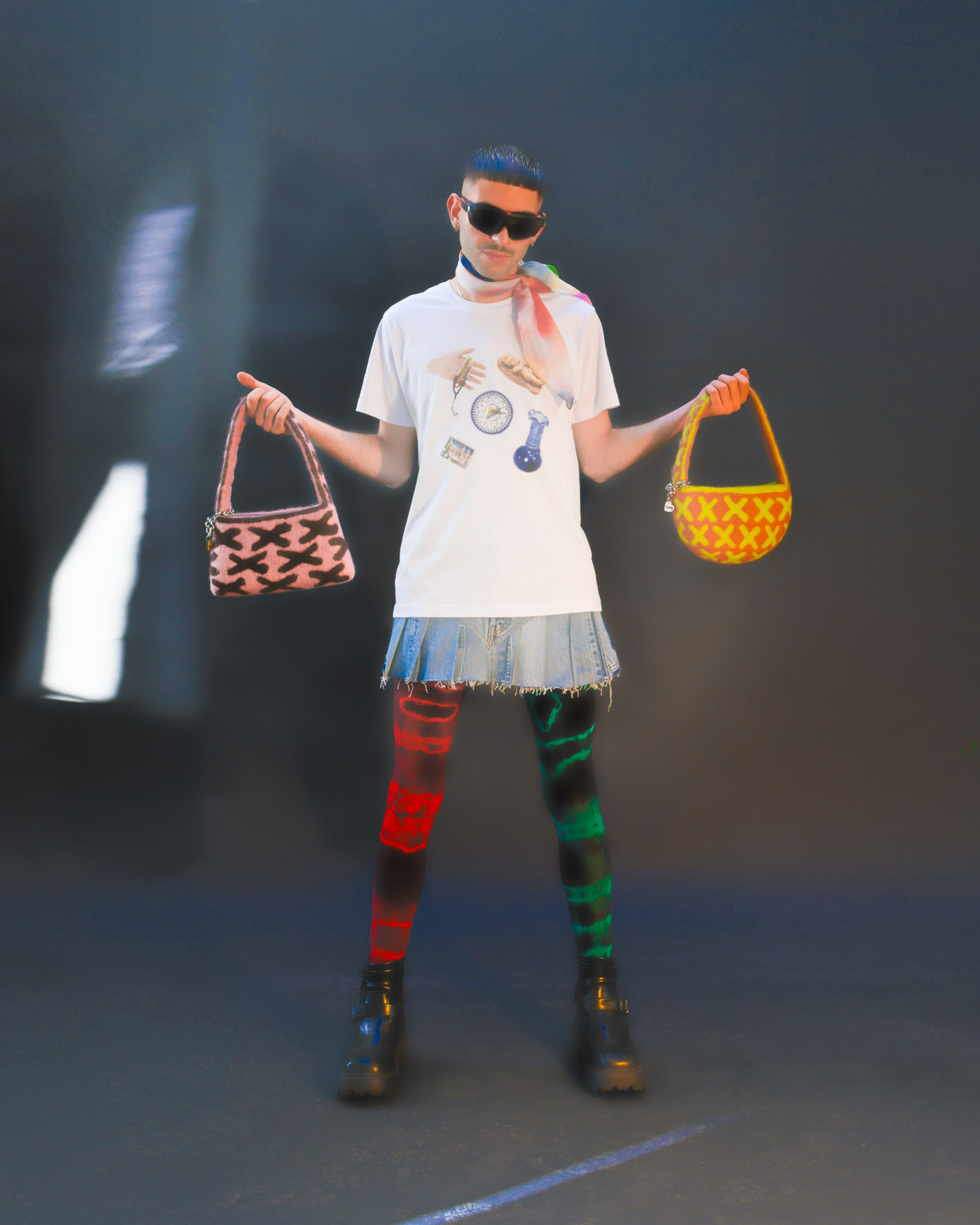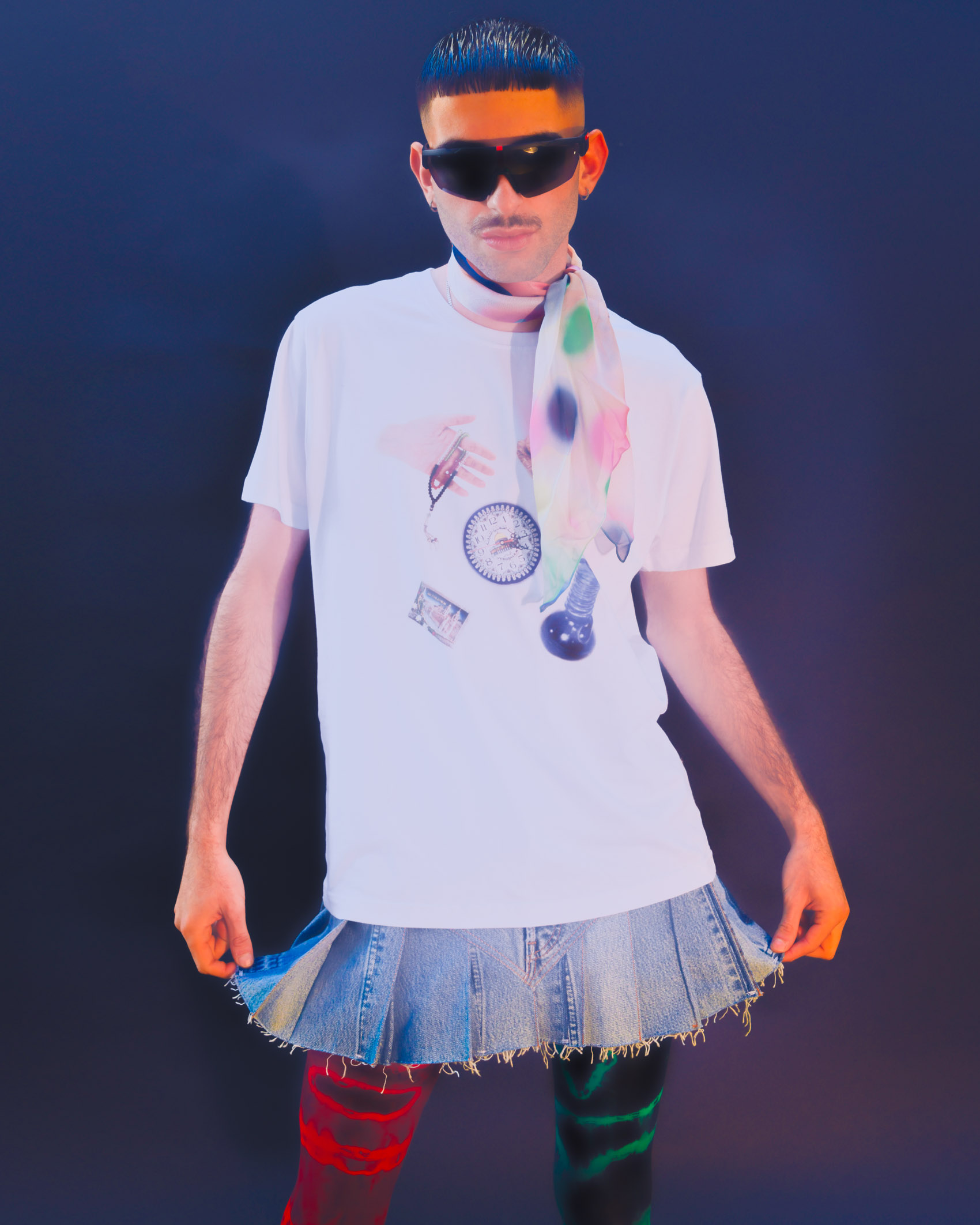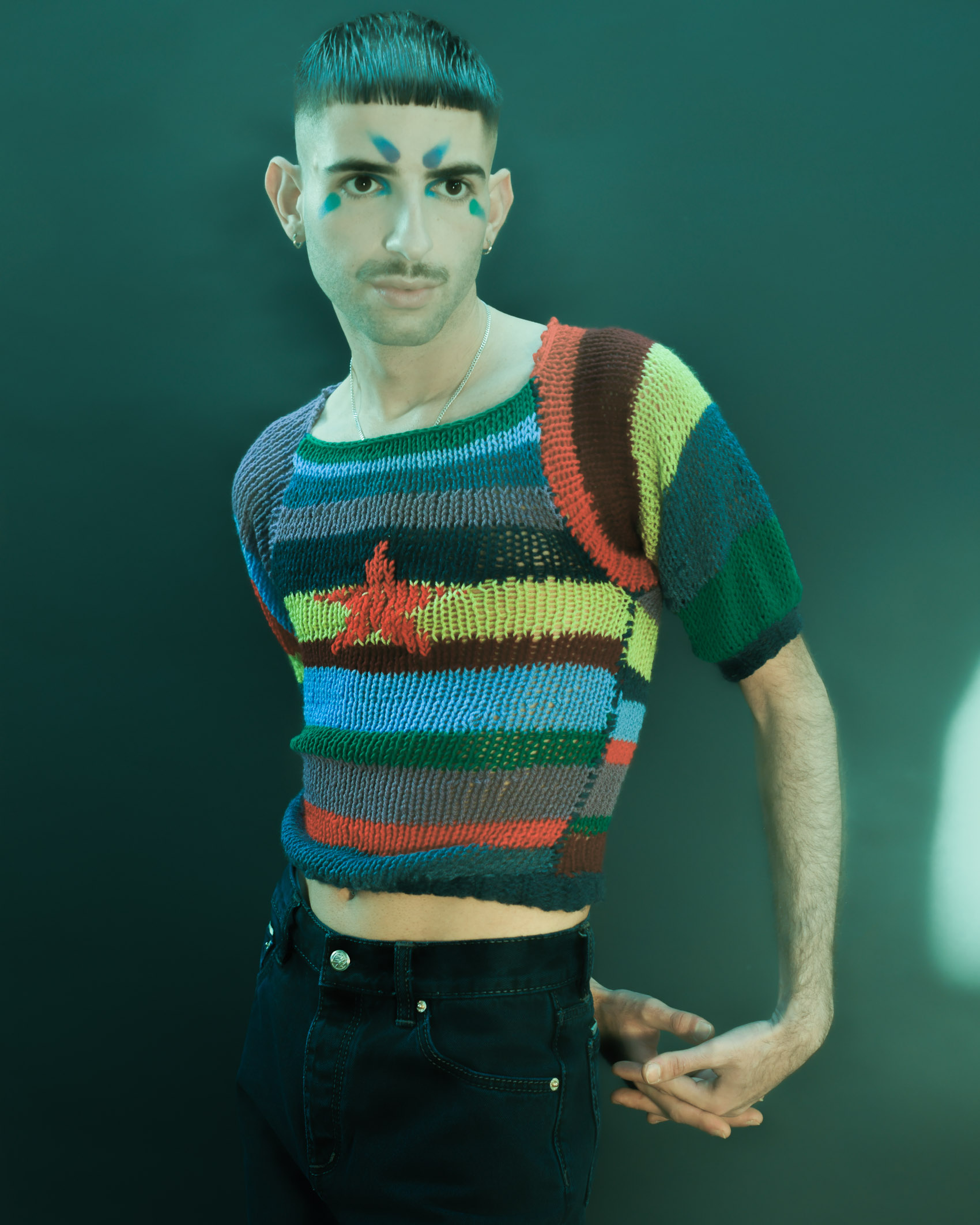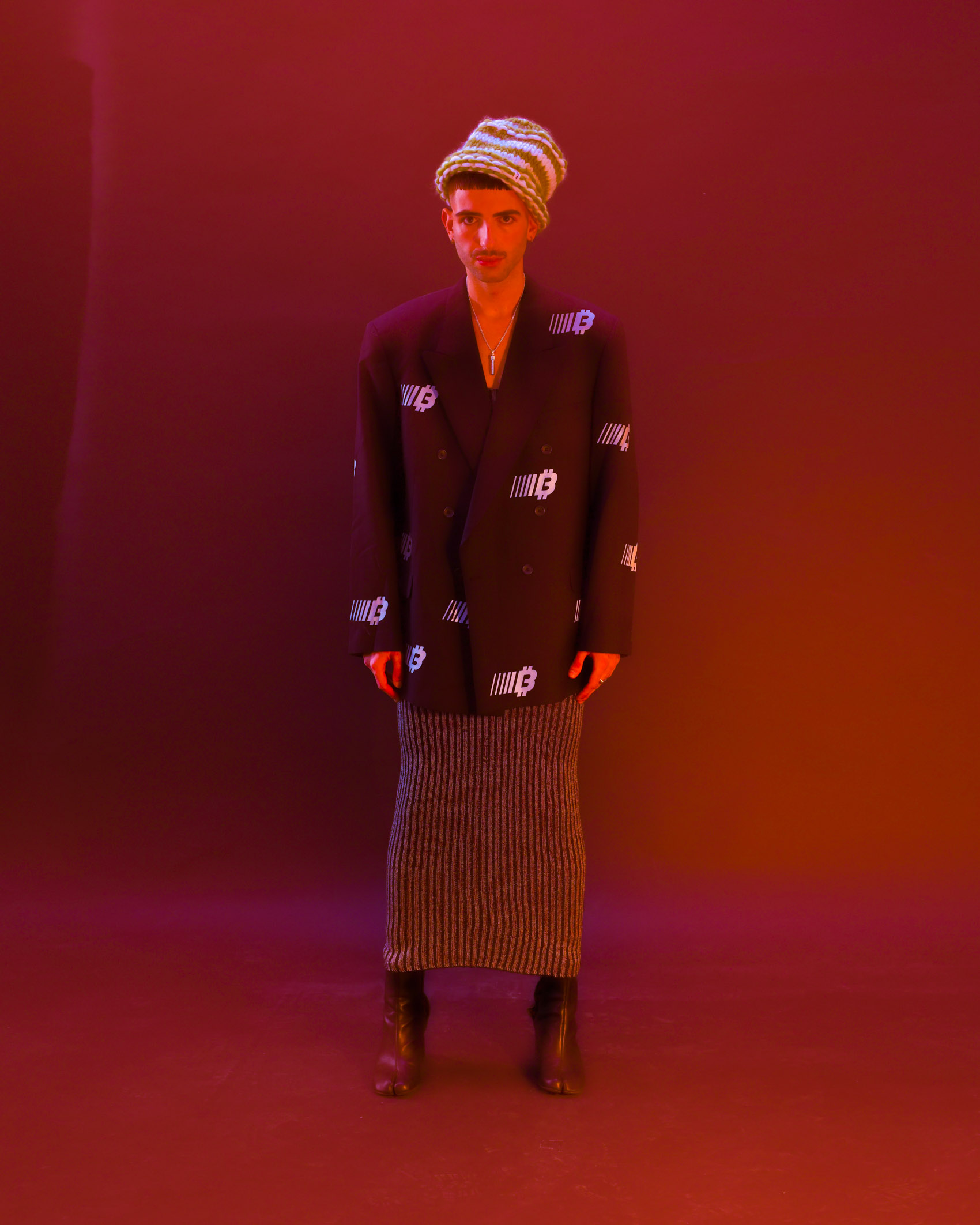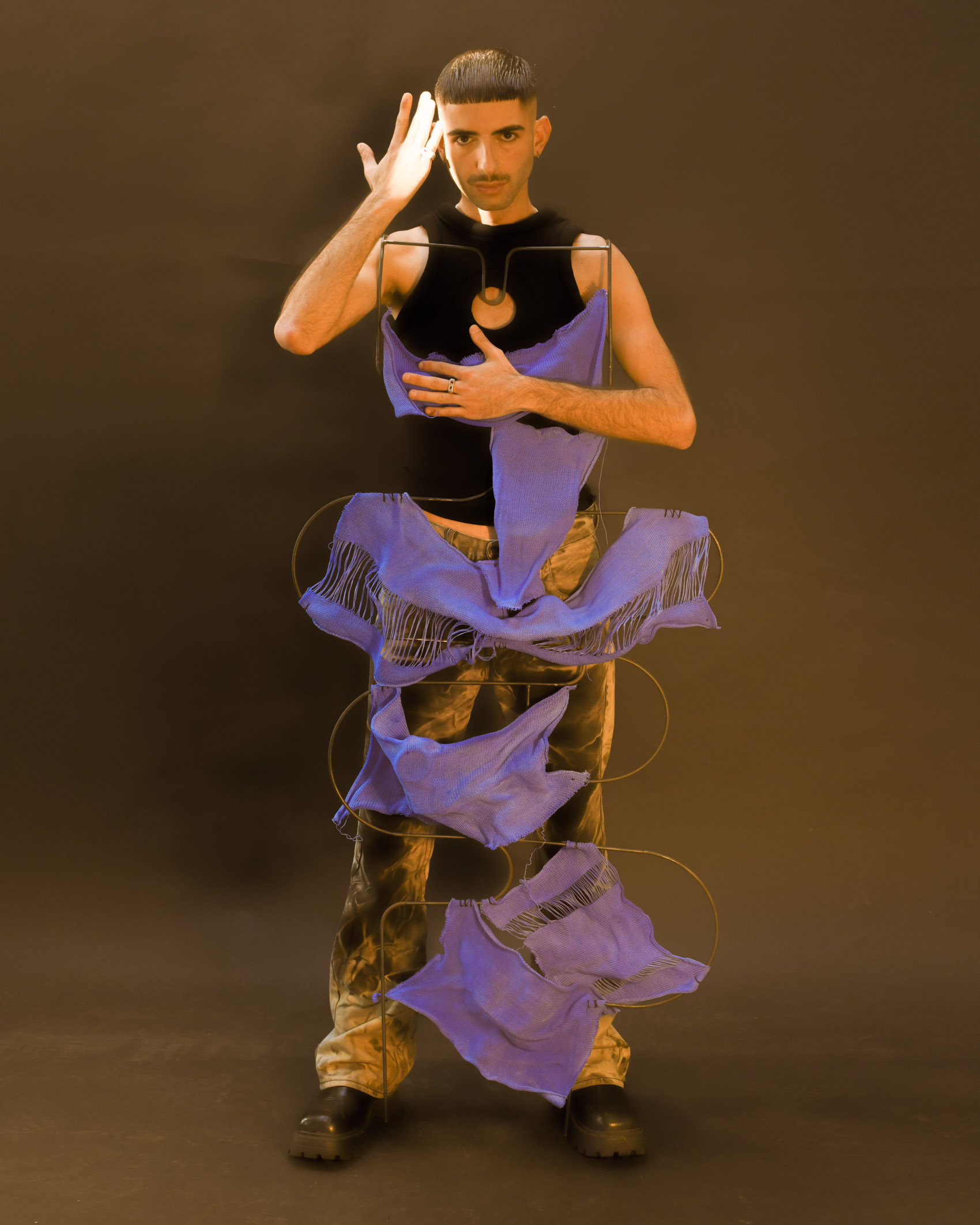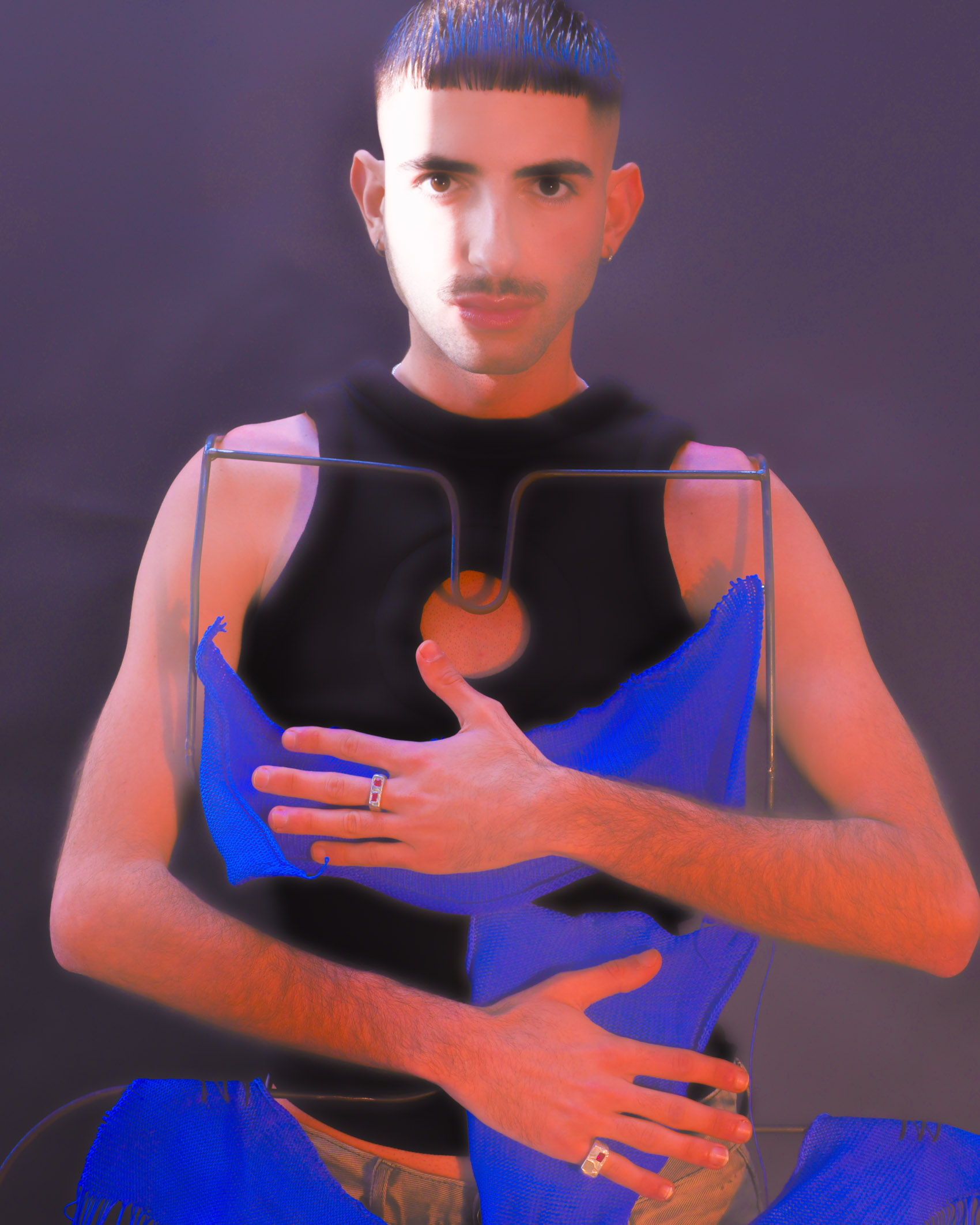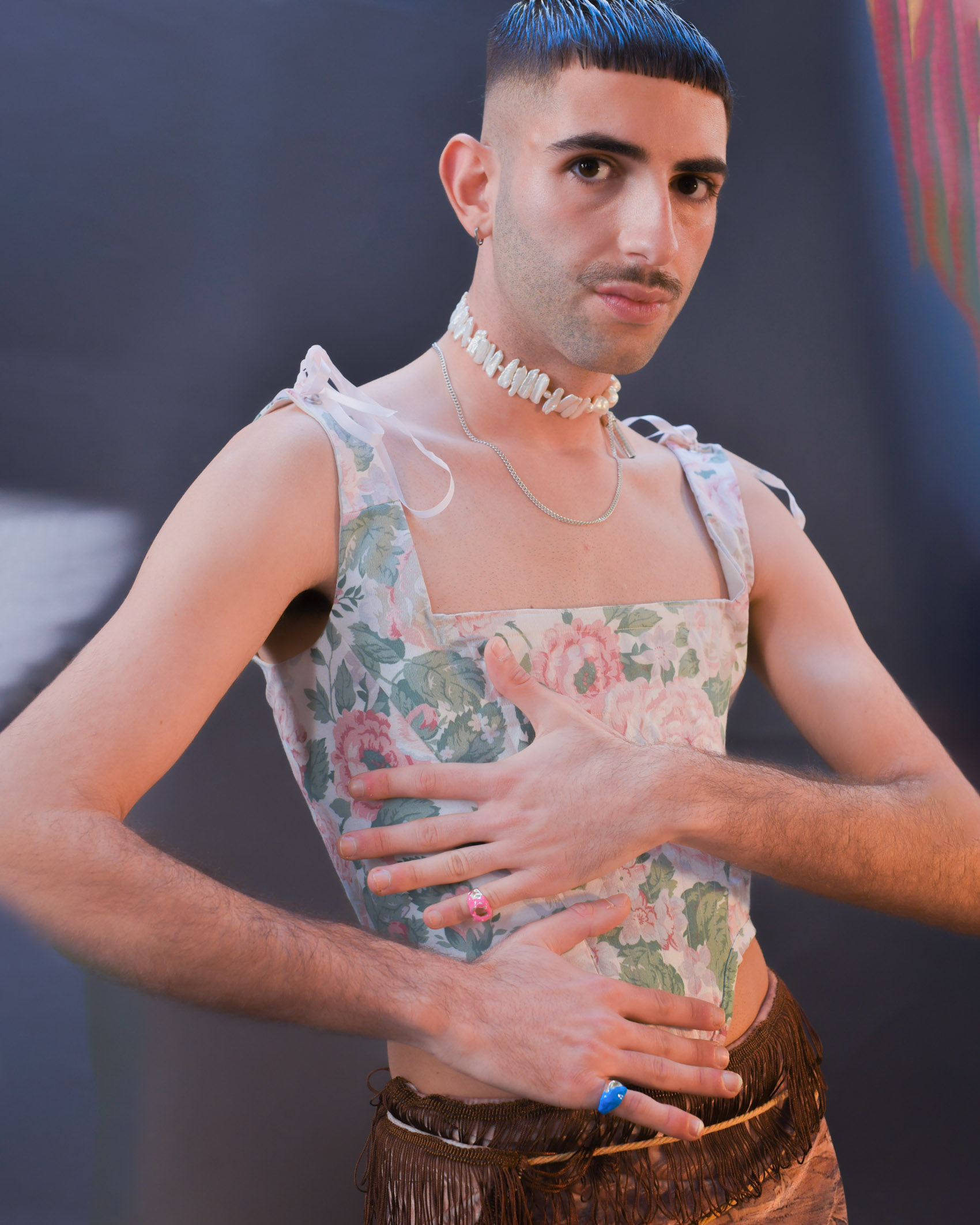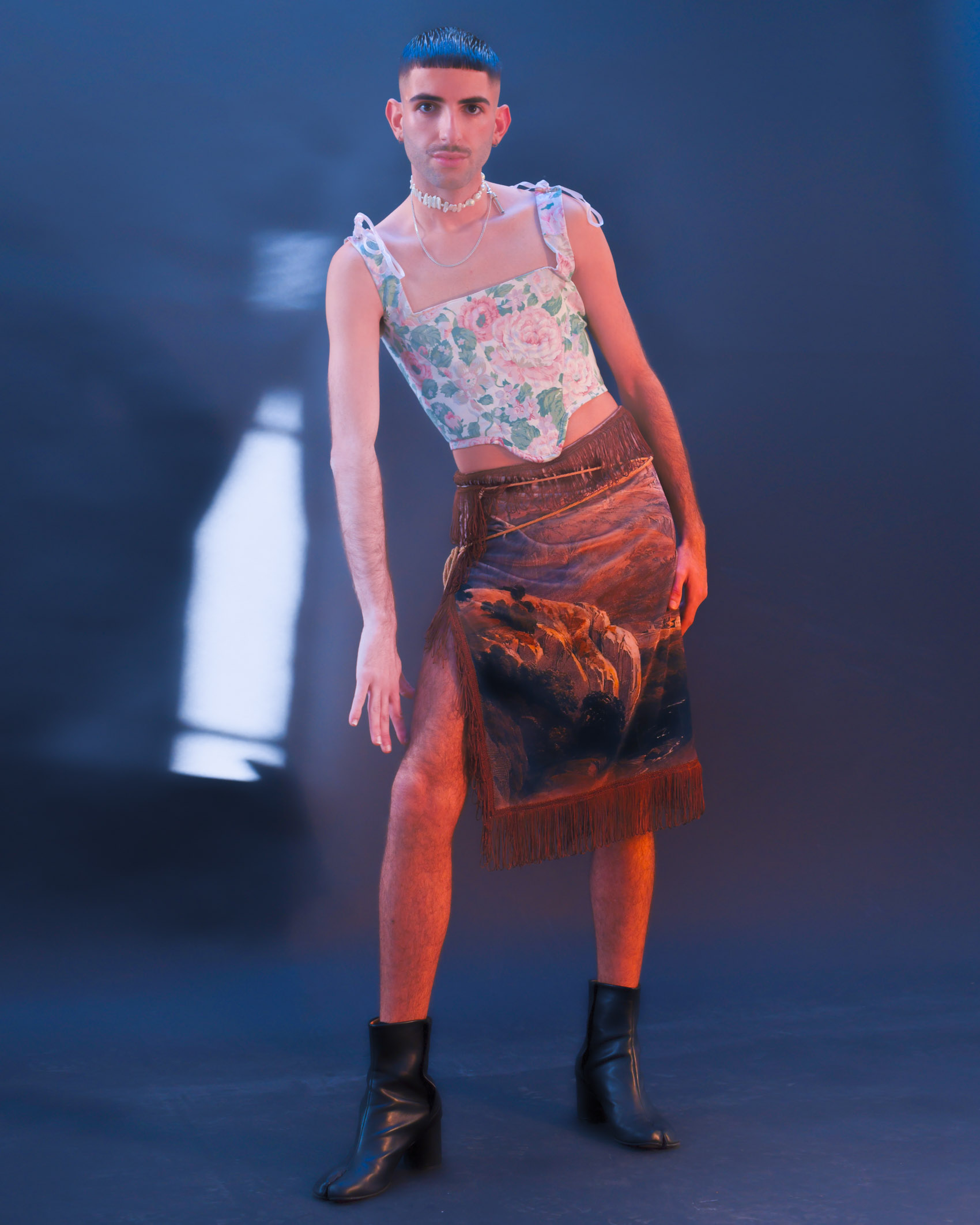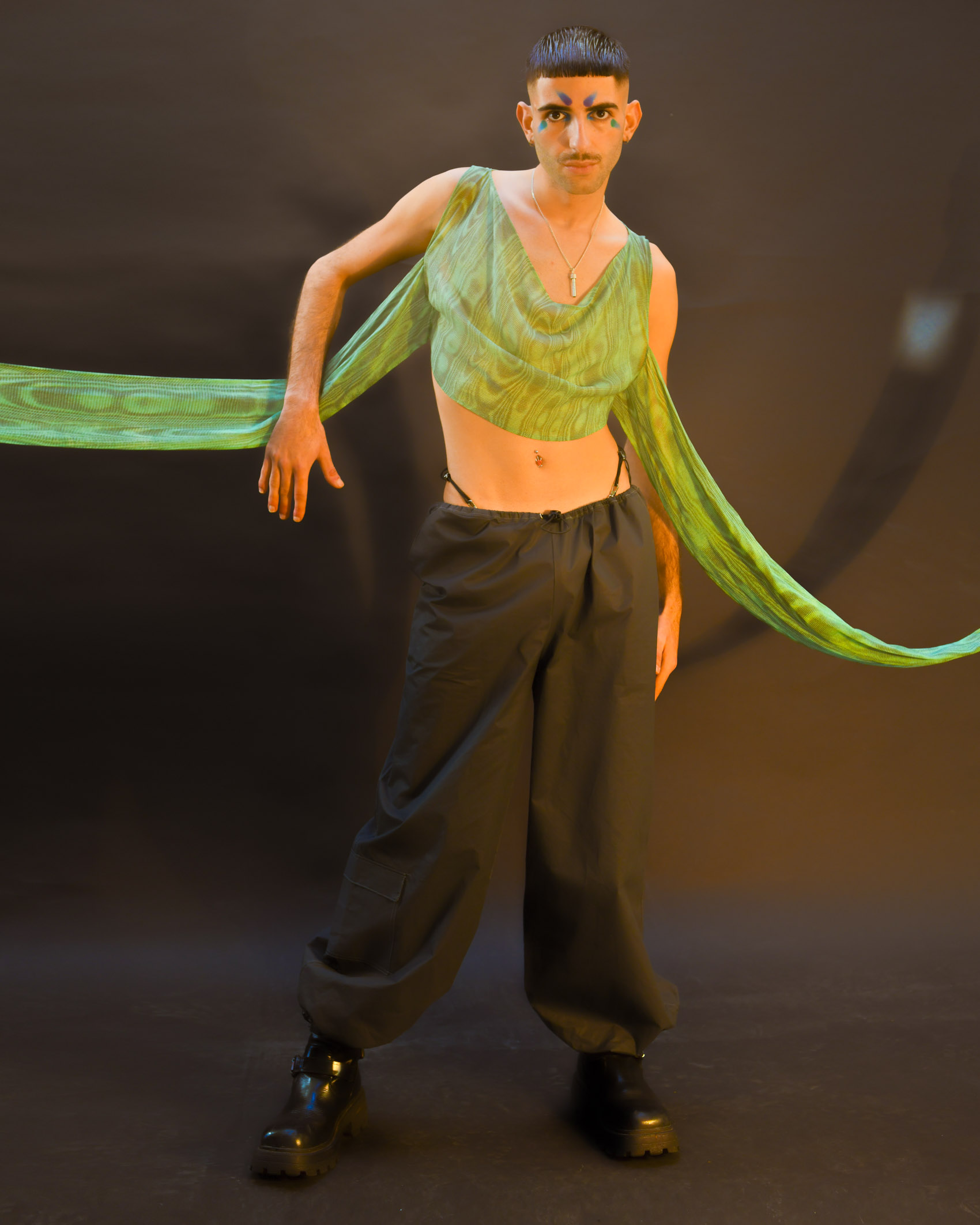IN TALKS with ANNABEL STEWART
07.05.25
Photography: Charlotte Cullen
Makeup: Kala Williams
Set Assistant: Claudia Veneroni
Photography assistant: Niamh McInally
Featuring Annabel Stewart
with thanks to Monica Findlay for jewellery
Words by Tegan Jaimie
At the intersection of tradition and now, Annabel Stewart is carving out a space of her own. Since launching her namesake label in 2023, the Highlands-raised, Glasgow-based designer has been redefining what Scottish fashion can look like. Her silhouettes nod to the past, but her vision is sharply future-facing: cinematic, subversive, and rooted in Scotland’s textile legacy. Stewart is building something intimate and intentional. The result? Clothes that feel personal yet striking, nostalgic but totally new. We caught up with Annabel to talk origin stories, pop-ups, and what it means to build a brand that’s grounded, intentional, and quietly bold.
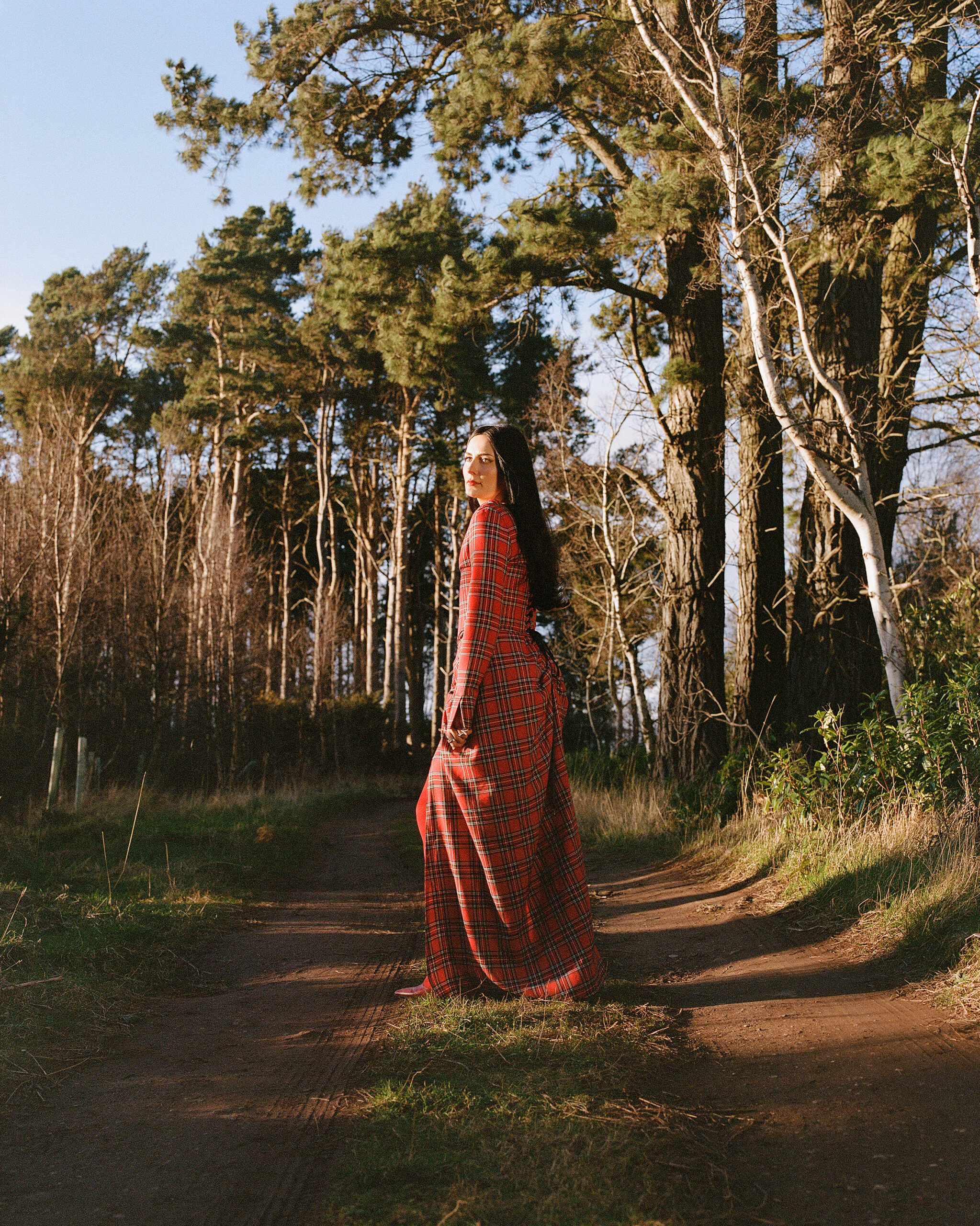
Can you explain how your label came to be?
After living and working in London for a few years, I hit a bit of a creative wall. I felt disconnected from home, and from the kind of work I actually wanted to be doing. I kept thinking about this dress I wanted to make based on my parents wedding and using our family tartan, the ‘Stewart Tartan Dress’. It wouldn’t leave my head. That was the starting point. Eventually, I knew I had to move back to Scotland, reconnect with where I’m from, and just start. That’s when I launched Annabel Stewart in 2023. You cite the Scottish landscape as a big inspiration in your work.
How do you continue being inspired in your motherland?
The Scottish Highlands offers endless inspiration, from its rugged mountains and dramatic coastlines to its rich history and unique culture, inspiring a sense of wonder. I grew up in Lochinver, right up in the northwest coast of the Highlands, so the landscape has always been a part of who I am. I take photos when I’m home, and those often end up turning into prints. The colours, the textures, the mood of the place, it all feeds into the designs naturally.
Where do you go/where do you find inspiration?
It’s always a bit of a mix. Old family photos, films, Hollywood starlets like Hedy Lamarr, the wonderful world of David Lynch and Scottish folklore to name a few. I’ve always been drawn to certain eras too, especially the silhouettes of the ‘50s and ‘70s and the detail in Victorian clothing. It’s about pulling from different sources and seeing what starts to form.
Does the metropolitan-ness of Glasgow, where you are now mixed with your upbringing in the Highlands influence your work?
I wouldn’t say I’m directly inspired by Glasgow as a city, but the people here definitely inspire me. Most of my customers live in cities, so I think about them when I design, what they’d wear, how they’d style it. It’s really about blending where I’m from with where I am now. I use traditional Scottish fabrics and references from the Highlands, but I’m always thinking about how it works in a more modern, urban setting.
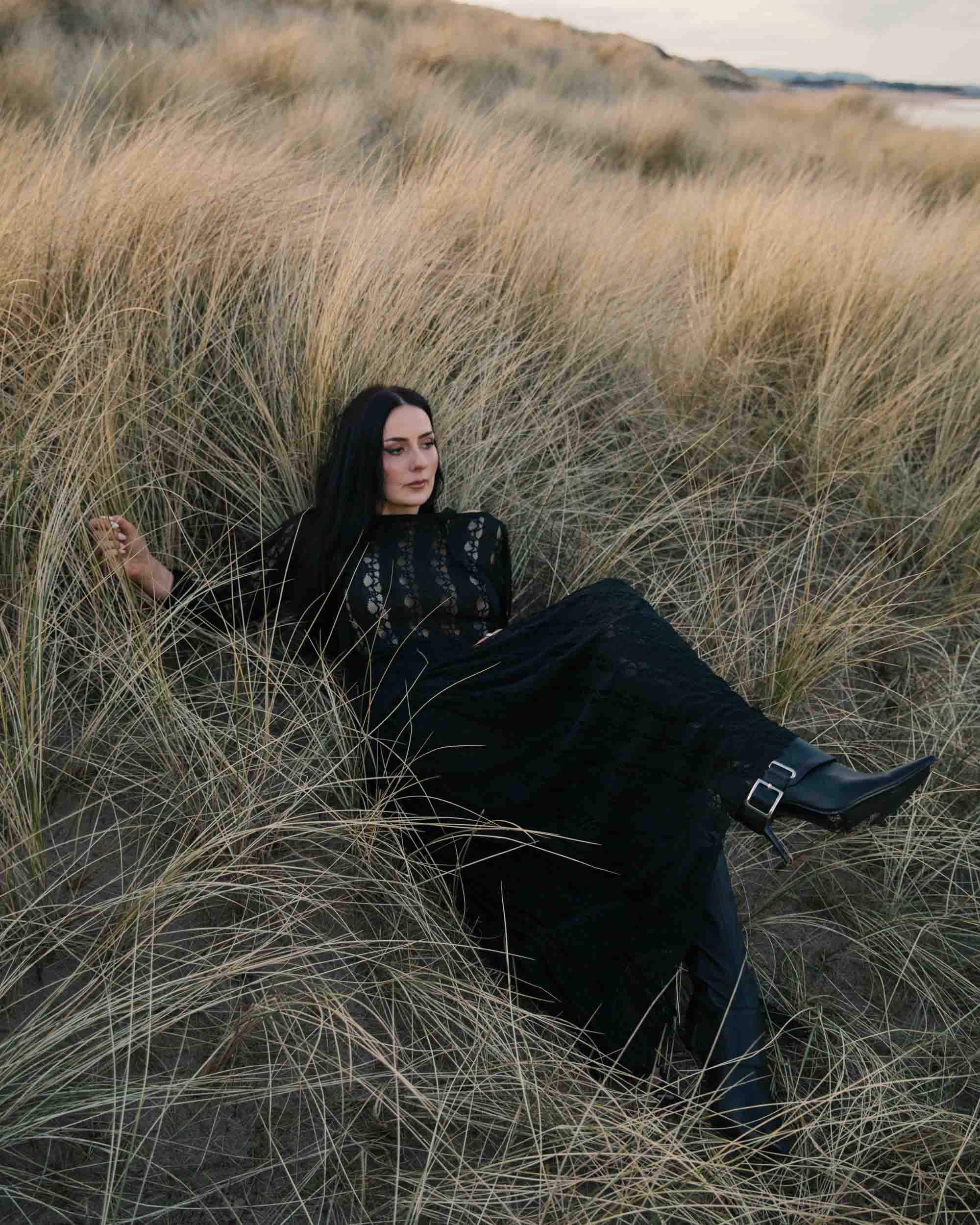
Your designs stay true to Scottish heritage while still remain modern. How do you approach that balance?
Scotland has a huge textile history, and I try to work within that while bringing something new to the table. I collaborate with local mills, printers, and embroidery artists because I want to support the industry here and keep the process rooted in Scotland. When I’m designing, I ask myself: Would I wear this? Would I actually buy this? If not, it doesn’t go forward. I want everything I put out to feel considered and intentional.
How do you think opinions of Scottish fashion have changed in recent years?
There’s definitely more attention on it now. People are more mindful about how and where their clothes are made, and they’re investing in things that last. I think that’s pushed more people to look at Scottish brands, especially ones that are doing things locally and sustainably. There’s also more confidence in the industry here now, it feels like something you can actually be a part of without having to move away.
In such a digital world, how important is it to still have that physical experience?
The online side works really well for made-to-order, but pop-ups give people the chance to try things on, feel the fabric, and get a proper sense of the clothes. It makes the process more personal. I’ve had people message me after saying how different something felt when they tried it on in person and how special it made them feel. I think having both online and physical is the ideal balance, especially when you’re a small brand.
What’s next for you as a designer?
I want to keep growing the brand without compromising on the values I started with, it’s important that my heritage continues to be a central point whilst still focusing on sustainability, working locally, and making things that feel meaningful. I’d love to work with more Scottish artists and maybe even create opportunities for younger designers here. Also… I’m manifesting dressing my dream client list – Doechii, Kyle MacLachlan, and Kelly Macdonald and creatively, I just want to keep telling stories through the clothes.
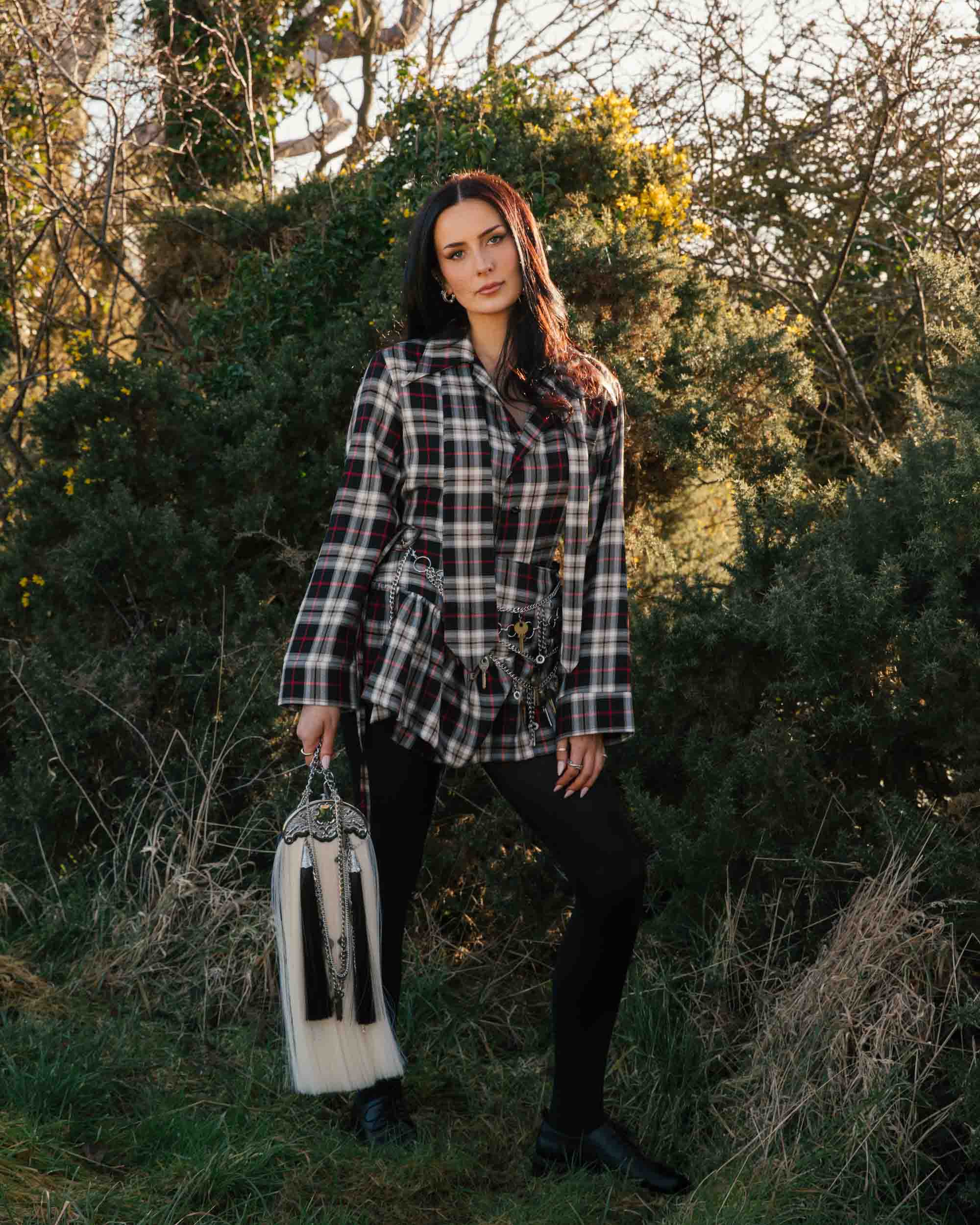
IN TALKS with TRACKIE
11.02.25
Talent: Trackie McLeod
Photography: Weronika Sikora
Styling & Words: Graham Peacock
Assisted by: Lewis Bremner & Tamara Turnbull
Growing up is an uncomfortable experience. Coming to terms with who you are, understanding where you fit in, acting like you’re someone you’re not. It’s a time most of us try to erase. Coming of age might often be a humiliating experience, but that’s also what makes it so funny.
In FRUIT, Trackie McLeod’s latest exhibition, the artist takes his experience of growing up gay in Glasgow at the turn of the millennium as a starting point for interrogating the amusing and embarrassing ways that boys and young men are expected to embody masculinity.
Football tops and pirated DJ tracks, souped-up Nissans and unhealthy doses of Lynx Africa. FRUIT is a satirical jab at late-nineties/early-aughts lad culture and a love letter to the queer kids who grew up mimicking and subverting it to get by. It’s touching and hilarious. On a practice-level, it’s dynamic and inventive. It’s a tribute to being Scottish and gay and the people who make accepting ourselves possible. It’s also very Trackie McLeod. Check out what he has to say about it.
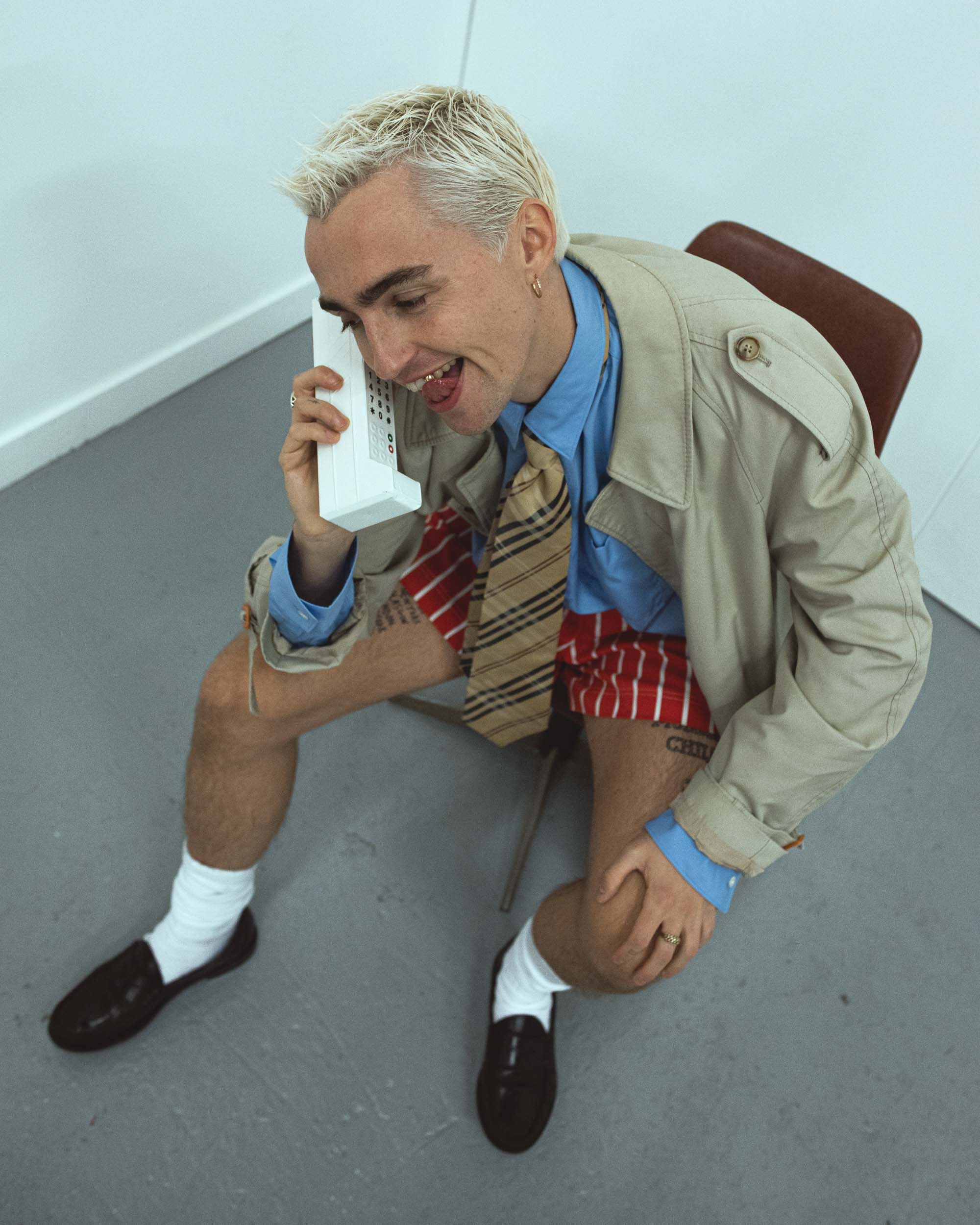
Trackie wears Comme des Garçons shirt from W2 and shorts by Adam Jones
Walking through your exhibition reminds me so intensely of growing up in Scotland, from the language to the references to the specific sense of humour. Did you find yourself getting nostalgic when creating this body of work?
I always find the exhibition experience quite cathartic. It’s a way of storytelling that allows the viewer to come to their own conclusion, so I’m always glad when it resonates how I’d imagined. I’d say this time around, I used nostalgia more as a trope, a familiar way of setting the scene and involving the viewer in my thinking. FRUIT was more about reflection, thinking about my past experiences and emotions, good and bad, in relation to my queerness and what I’ve learned over the years.
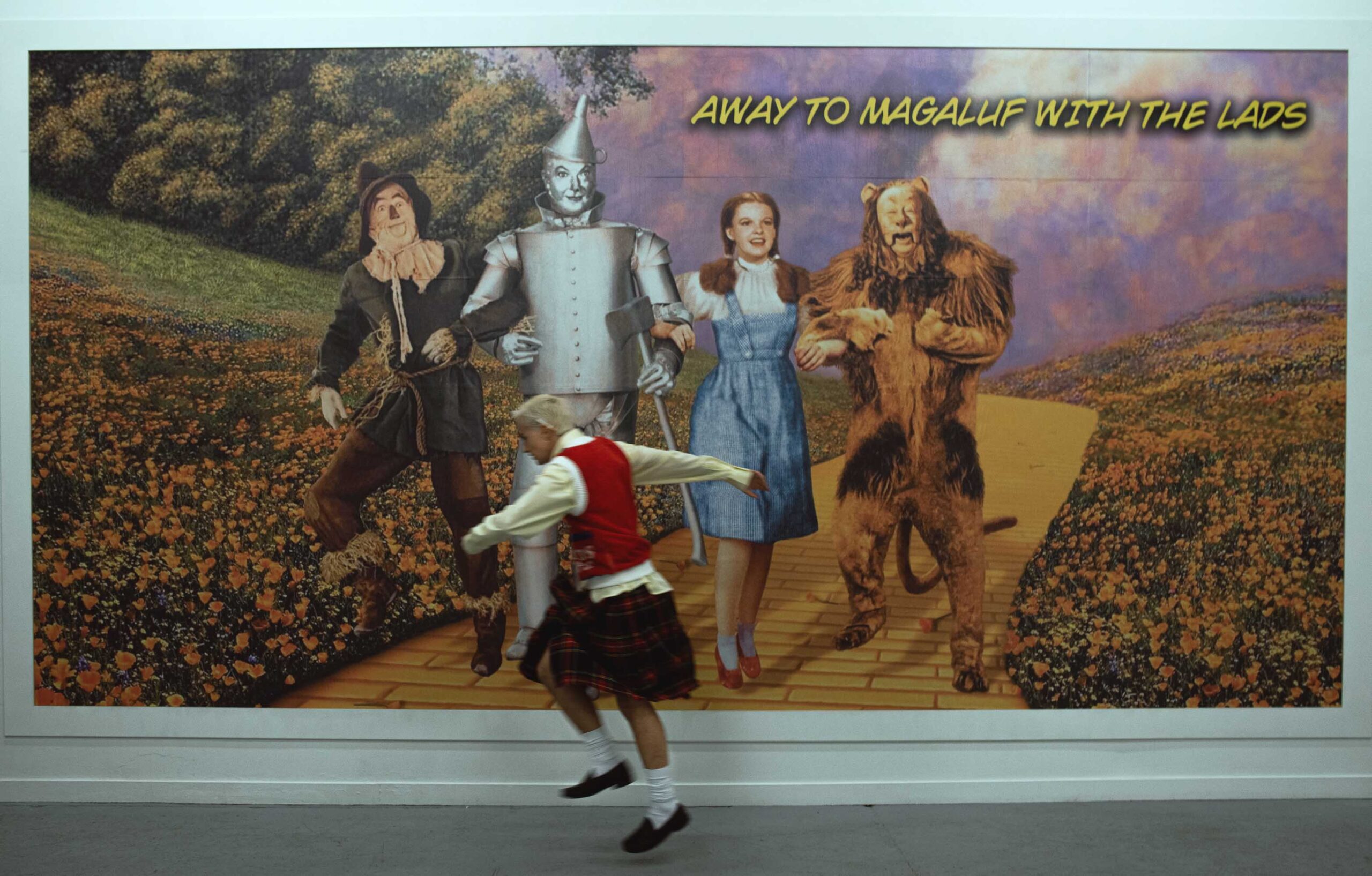
Trackie wears shirt and jumper by Adam Jones
What was the starting point for you in creating this exhibition?
A lot of the works had existed in the notes in my phone but I hadn’t quite connected the dots for it to become a cohesive exhibition. I think the starting point was going to see All of Us Strangers in the cinema. What a film man, it really moved me, (that much I went back to see it three times). It got me thinking about my own experiences growing up in Glasgow in the 2000’s and culturally what it meant and means to be queer in society. I was also interested in how we are shaped by experiences like being in the closet and coming out and knew early on I wanted to poke fun at those traditions. ‘The Six’ for example, is six screenprints onto metal with my signature Trackie Times headlines, each of them taking the piss out of the idea of coming out, begging the question ‘is it necessary?’.
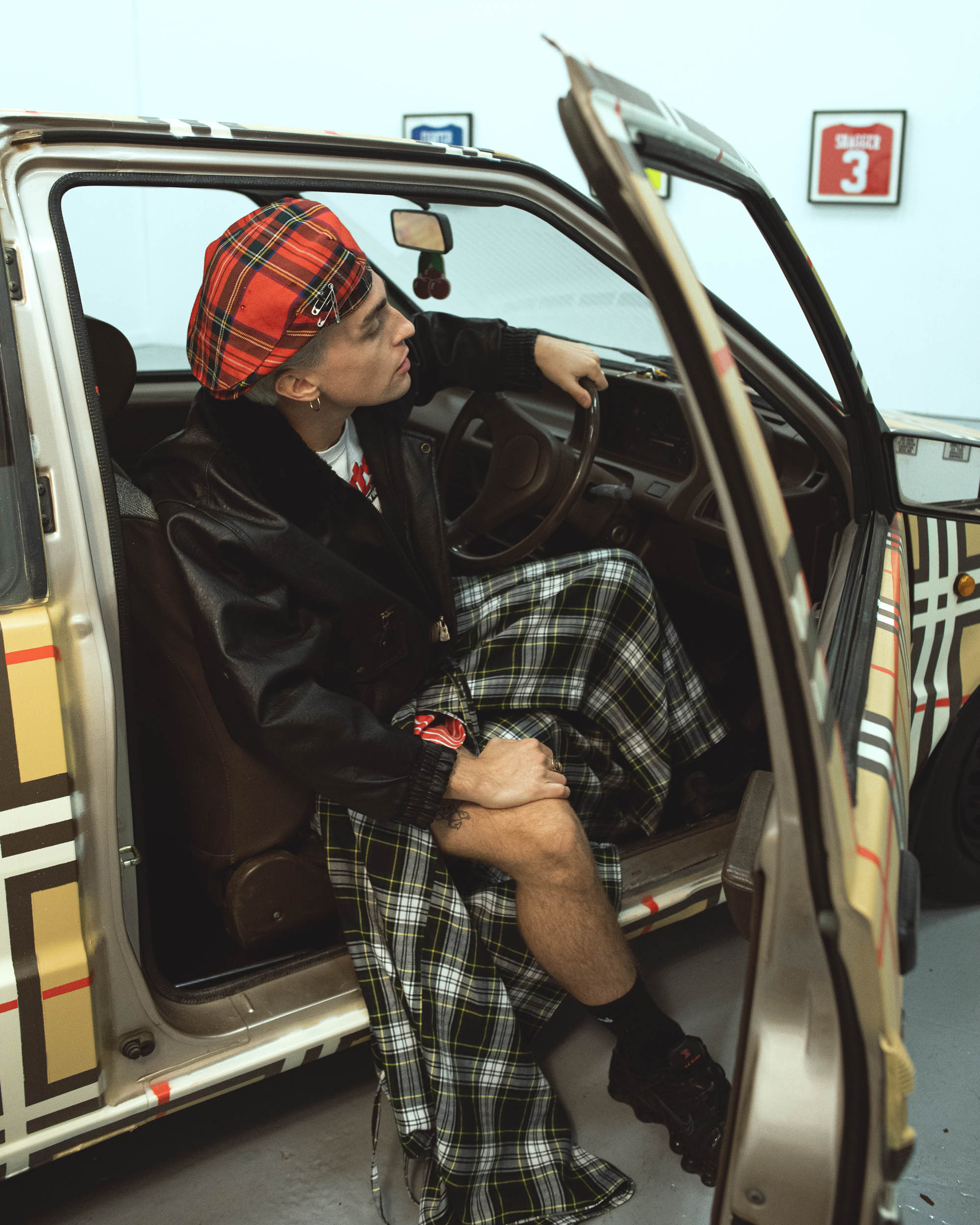
Trackie wears Annabel Stewart
You cite Alan Downs’s The Velvet Rage as an influence here. It’s such a monumental piece of writing for gay men and our understanding of shame. I’m curious to know how reading the book shaped this exhibition.
I think shame is an emotion we rarely discuss as queer folk so that’s what I related to in The Velvet Rage. A lot of us grew up in an era when it wasn’t as accepted to be queer, often playing the role of a straight person to avoid prejudice or humiliation. The Velvet Rage explores ‘levels of shame’: why and how it manifests, and how to overcome it. These chapter headings inspired me to create work around each of the stages. For example, ‘Daniella’ is based on ‘compensating for shame’. As a teen you compensate your authenticity in order to blend in, i.e. follow the status quo, which is represented with the Burberry print. It’s then juxtaposed with the outdated Nissan Mirca to create a bit of conflict and conversation, standing out even when trying to blend in.
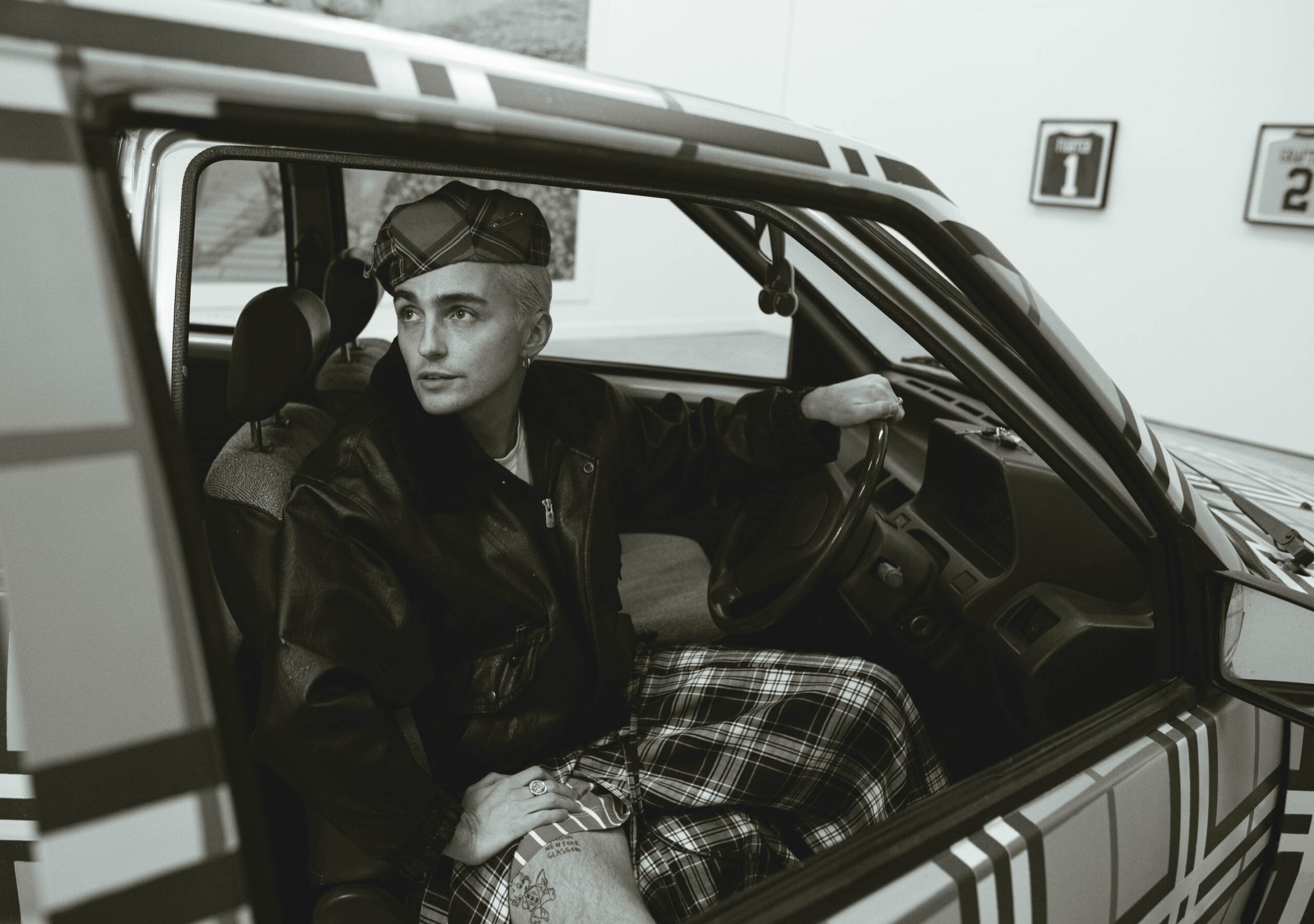
Trackie wears Annabel Stewart
Each work is named for a different woman who has inspired you. Is this a reference to women often being the first source of validation that gay men encounter, whether that be in real life or through pop culture?
You could say so, aye. Originally, I’d just named the car after Daniella Westbrook and her 2002 nova check outfit (Google it if you haven’t seen). Then I thought about the importance of the female idol, especially within my life. Growing up I always loved the female characters, especially the villains. I’d also been thinking about all the girls I hung about with growing up and how most of them had protected me and allowed me to flourish. The works sort of named themselves after that. Some are personal, like ‘Judy’ titled after my best mate and ‘Mary’ after my wee granny and then some not so like ‘The Six’ titled after the six women in Eastenders’ Christmas Day plot. As you do.
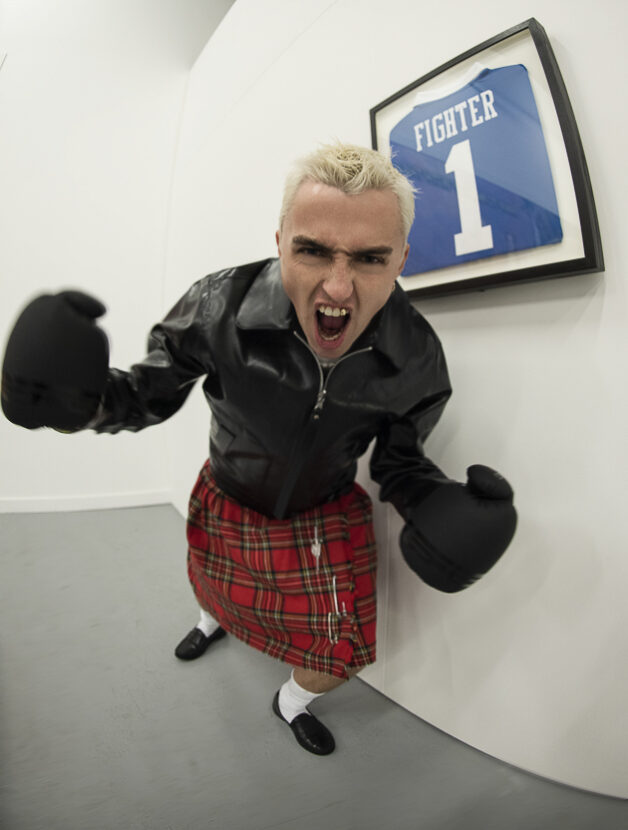
Trackie wears jacket by La Fetiche
I was interested to read that you produced much of the work in the exhibition in response to the physical attributes of Govan Project Space and its location. Do you find that you create not only in response to your experiences in Glasgow, but also the way the city feels and looks?
I knew for the exhibition I wanted to work on a much larger scale, but I struggled to find a space that could house the planned dovecot, car and billboard. When I heard about the Govan Project Space, I loved their ethos; they are very much community-led and anti-establishment. I liked how they were tucked away in an industrial park in Govan (just across the water from where I grew up) and it just made sense to exhibit in a non-traditional space in a community similar to my own. I think sensory wise, the look, feel, sound and even smell of Glasgow growing up played a role in making this an overall installation. For example, inside the dovecot I decided to include a 50-minute mix made up of chart toppers, pc DJs, adverts and shows from my youth with nods to some of my own queer awakenings. To top it off I planted some Lynx Africa pods inside to give it the full millennial changing room experience.
Even though a lot of work in ‘FRUIT’ draws on arguably negative experiences, you clearly have a lot of love for Glasgow. What is it about the city that keeps you inspired?
Glasgow is everything you read about it: cold, grey, hard — but underneath all that it’s got a heart of gold. It’s home. It’s got a rich history in culture. The people are class and the patters even better which is what continues to inspire me, albeit fucking baltic.
Do you have plans to take this exhibition to any other cities?
Next stop London! Keep your eyes peeled.
IN TALKS with RECONSTRUCT
24.01.25
RECONSTRUCT is a different kind of label. Growing from a student-formed collective into an established brand, RECONSTRUCT has grown its name through a genuine devotion to craft and its audience. Draping, cut-outs and a lot of leather form the basis of its collections, but their creative output stretches beyond the clothes created in their studio. RECONSTRUCT sees deconstruction and upcycling not only as a creative business model in a saturated market mired by overconsumption, but as a necessary tool in modern life. Through workshops and community outreach, RECONSTRUCT do what most labels don’t think to attempt: they offer their customers an insight to their own production process.
It’s an interconnectedness that speaks to the brand’s origins. The Amsterdam-label was effectively formed through friendship at university. Now, nurturing relationships remains at the forefront of their values. It’s not only a unique way of working. It could be a powerful way forward for many more like-minded designers. Laura Aanen, RECONSTRUCT’s Founder, talks us through the creative process and origins of this forward-thinking, innovative independent label.
How did RECONSTRUCT get started?
RECONSTURCT Collective was founded by the Fashion Design graduating class of 2016 at the Art Academy in Rotterdam. As students, we organised the graduation show and raised money through crowdfunding to establish a company. This is how the Collective was born. It has taken many turns until the final form RECONSTRUCT is known for today.
You work with overstock and upcycled materials to create your pieces. Can you tell us about how you source these materials?
These materials are everywhere around us, there is just too much [leftover] material in the world nowadays. We’re approached by companies to rework their overstock, handed down garments from friends and family. We source thrift shops, markets and warehouses, scroll endlessly on Vinted or simply run into a genuine leather couch at the trash.
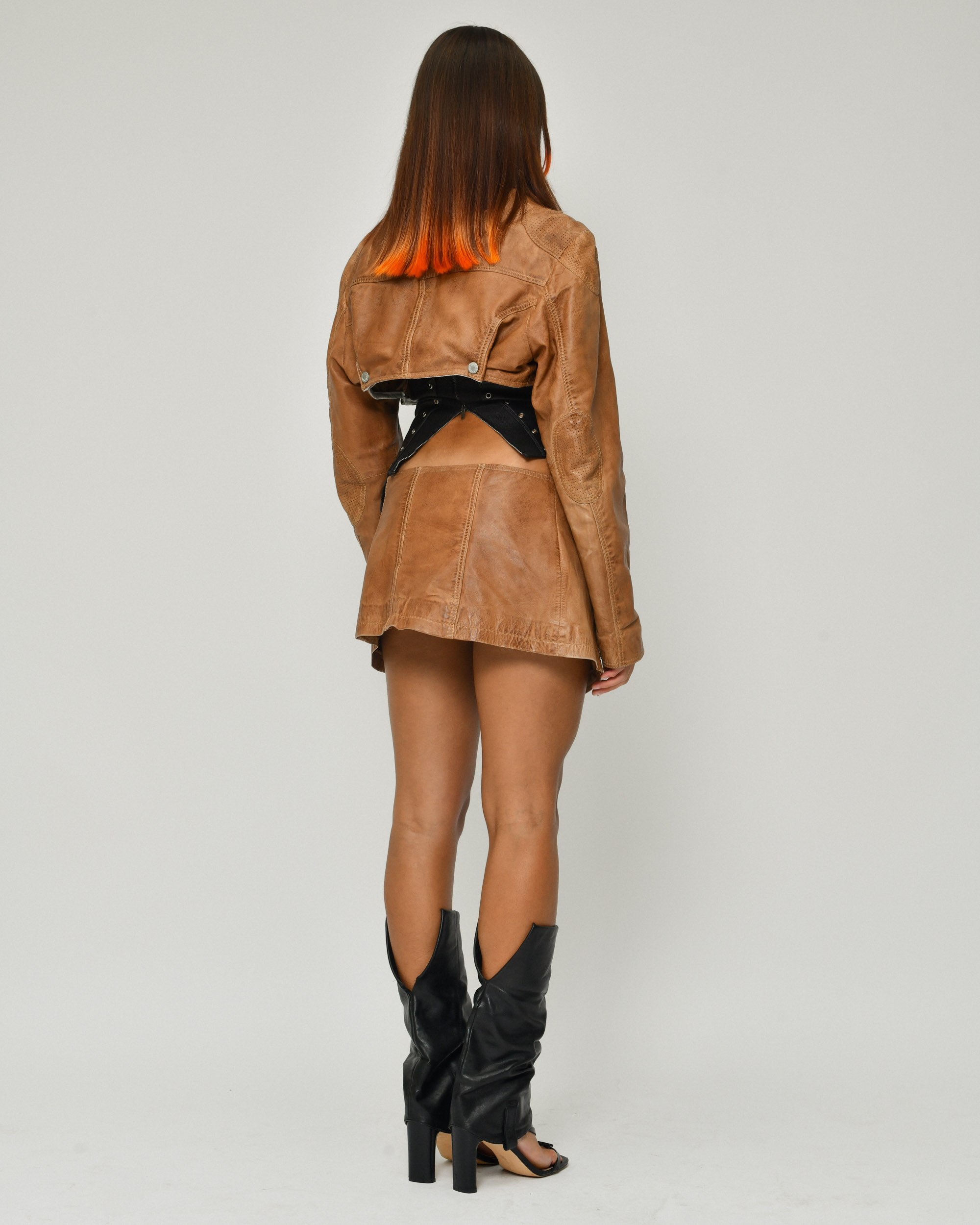
What comes first for you – do you source materials then decide what you can make from it, or do you start out with an idea for a design then go about sourcing materials that could work for that idea?
The material is the main inspiration.Its shape, its possibilities and its flaws. We aim to work with high quality materials, preferably natural fibres. These materials are most durable and have more possibilities to mend them. We will always source an item where we see potential in the material, but also its details or shapes, and then we start with draping and fitting until a new silhouette is created.
Do you find that this style of deconstruction pushes you to be more experimental?
Yes, it has taken me off the conventional path of pattern cutting and sewing which I was taught at the Academy. I still notice the different way of design when I work with interns from a fashion school and how they need to unlearn a lot of ‘rules’ before they feel free enough to ‘reconstruct’: to test, experiment, try on garments in different ways, cut off parts and turn things upside down and inside out. To me this way of working comes naturally, as there is always a little voice in my head saying, ‘this could look better this way’. I cannot design on a computer screen, I need something tactile in my hands.
You’re based in the Netherlands. Is this where you’re from? What’s it been like to build a fashion brand within the creative community there?
I have moved around a lot but studied in Rotterdam. Straight after graduation, the Collective set base in Amsterdam and participated in Amsterdam Fashion Week several times. We got to work with other brands and build our community. It kicked off pretty quick in Amsterdam, without us really noticing. We were moving onto shows abroad and were so focused on New York Fashion Week that we lost track of our Dutch crowd. When we did shows in Amsterdam again the crowd was so big it astounded us. Although, the Netherlands is small. There is a creative community with a lot of potential here. Currently a lot is happening online, and in several parts of the world at the same time, which I am looking forward to seeing expand.
You also hold workshops as a brand. What type of projects do you work on in these spaces?
We hold ‘reconstruct’ workshops. In these workshops we invite people to bring a garment that they do not wear anymore but is of good quality and could serve as a base material for a new design. We will guide them along the way of draping, fitting, testing and mending this item into a new garment. These workshops are held around different themes, group settings and locations and are always slightly different, adjusting to the circumstances and desires of our clients. I believe in the importance of spreading awareness and knowledge around up-cycling and I enjoy getting to work with people in a creative way.
What would your advice be to other designers looking to start their own independent brand?
I would advise people to really think it through. Turning something that you love into a business will also make you hate it at times. It is hard work and you will be judged on something that is so close to your heart. Even though it also gives back, a lot of people will just run over it. Besides that, there are so many existing brands already, creating more and more that is flooding the world. If there are no other brands that you align with that you could see yourself working for, and if you strongly believe you have a new value to add by starting a brand, then do it.
I do not want to demotivate anyone who has this dream, I have just seen the masses of production and might have made another choice myself if I could do it all over again. I have worked for other fashion companies as well and have taken a lot from these experiences, so I would recommend doing this before starting a brand of your own.
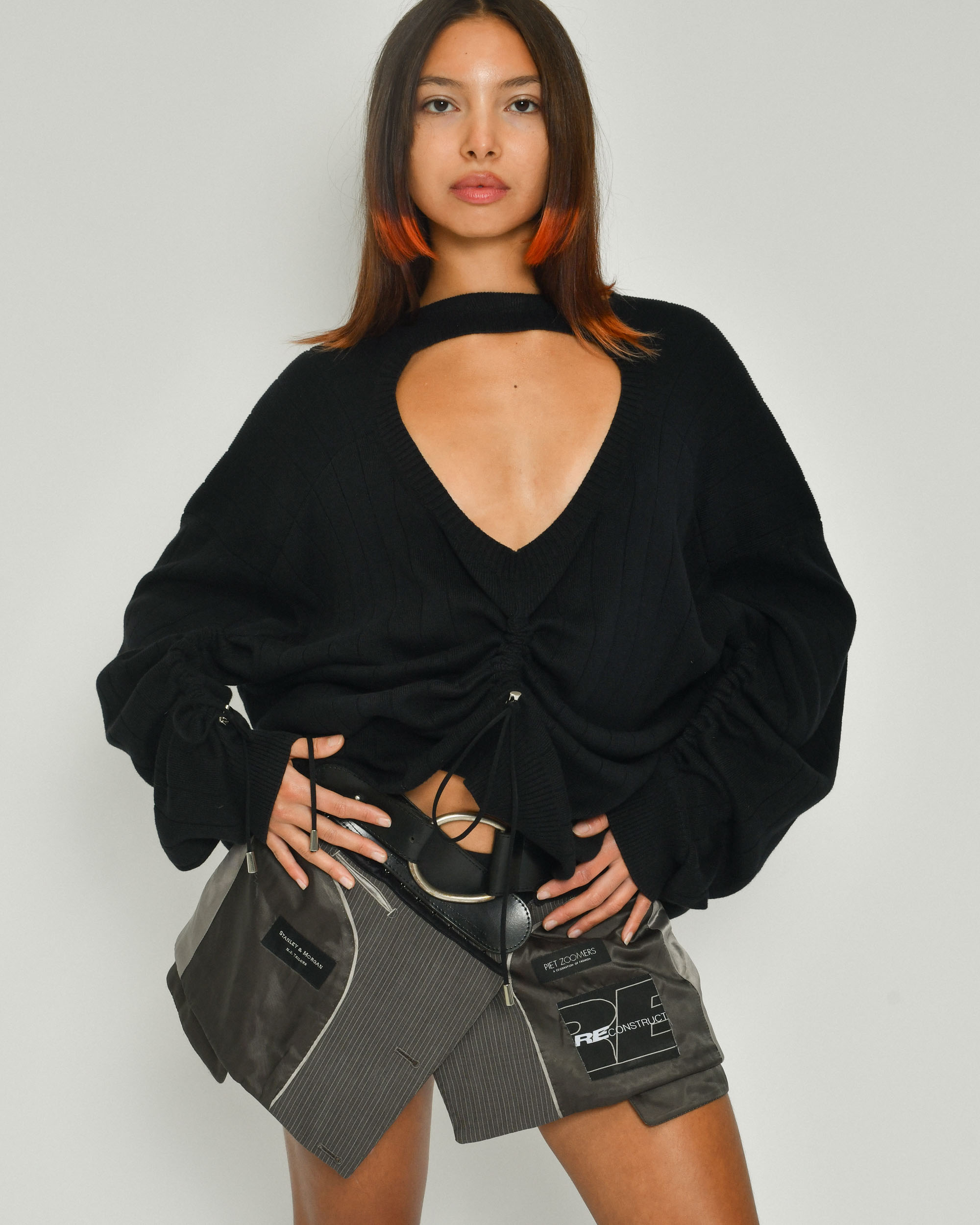
21 QUESTIONS with LOURDES
21.11.24
Model: Lourdes
Photography: Kate McMahon
Styling & Words: Graham Peacock
Hair: Reece Marshall / Ponyboy
Makeup: Maya Jaye
Assisted by: Spit Turner & Mark Mckinlay
Lourdes has achieved something few others have: making a name for herself for being exactly who she is. Whether she’s performing on stage at Edinburgh Art Festival, creating music or hosting high-octane club spectacles with Ponyboy, Lourdes’s signature charm and humour make her a commander of attention.
Even against today’s paint-speckled floor and exposed-brick setting, Lourdes can make things glamorous. She’s no stranger to giving herself over to a creative vision, equally at home talking candidly on the much-loved podcast The Dolls Discuss and collaborating on large-scale creative projects.
More than just a key figure in Scotland’s creative scene, Lourdes is a passionate champion of her trans and queer community. While it sounds like good fun to have your face splashed across a billboard in Glasgow’s East End (Ponyboy X BUILDHOLLYWOOD, likewise shot by Kate McMahon) or to feature as the cover girl on an EP (‘but while i wait, i may as well party’ by Spent), visibility is also a tool. Lourdes is part of a cohort of queer talent on the rise in Scotland: partying in the face of a hostile world, holding out a hand to other performers rather than pulling the ladder up behind them.
After her shoot, we caught up with Lourdes for a game of 21 Questions. Her responses were as expected: funny, timely and deeply moving.
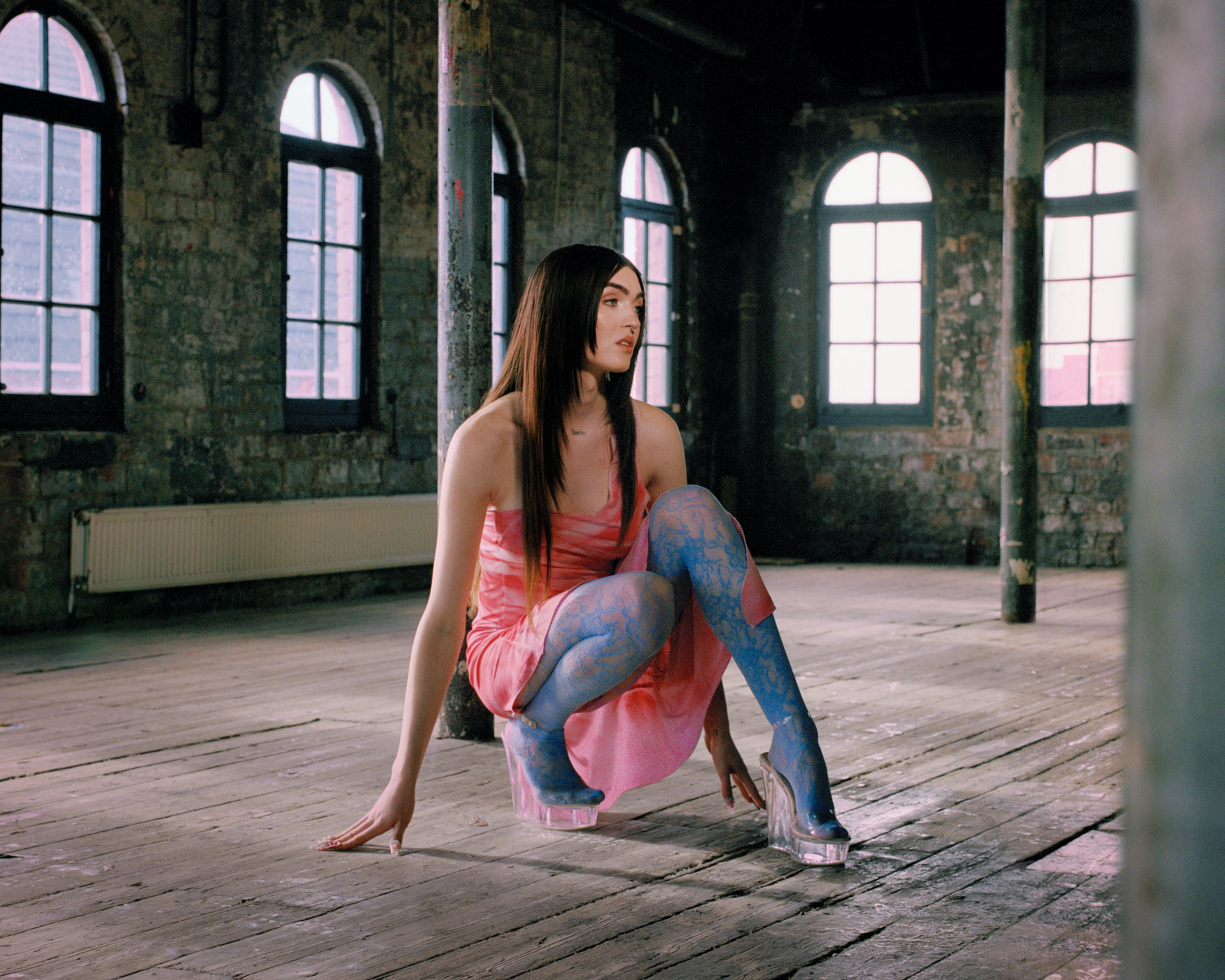
What was the last song you listened to?
What I should do is give you an incredibly niche, esoteric and obscure song that no one has heard of so that it reinforces the mysterious allure that I like to think of myself as having. Unfortunately I’m neither that nor can fake that so instead I shall tell you the truth. ‘Aquamarine’ by Addison Rae is currently going up the okaylourdes hot 100 chart and doing the reruns. Funny how someone can drop the song of the summer on the 24th of October. She’s everything I want to be when I’m 24. I love pop music and I love women who make pop music. People who over intellectualise everything bore me to death! Like, sorry if the song is good then it’s really not that deep.
What’s your favourite thing about Glasgow?
I have a lot of favourite things but I also have a lot of least favourite things. My favourite things include the memories that I have attached to so many places here, my friends, the ability to walk from the Southside to the West End in an hour. Glasgow is a city that’s ever changing and I like that about it. However it’s also a city that doesn’t offer that much room for growth currently. More creative bases need to be formed here. I want Glasgow to reach its full potential and it’s slowly getting there. I just worry that it’s not moving at the pace it needs to.
If you could co-host a party with any celebrity, who would it be?
Cher.
Who makes you laugh?
Myself mostly. People aren’t all that funny. Everyone’s sense of humour operates in different places and I think mine might be hard to reach. I’m often not laughing when people think they are being funny. But also my friends make me laugh. A lot. There’s so many times I think back or replay the memories I have with them and I feel myself almost crying with laughter. It’s good to surround yourself with positive people that encourage your potential and allow you to have fun. Negativity always makes its way out of your life but it’s hard sometimes to have to face the reality of finding out someone may not be who you expected. The key is to remember them as you please and not as it eventually pertained. Like, yes — we still laughed ourselves a set of abs that night and yes you are also a cunt. I love the physical act of laughing. It’s so nice to be vulnerable with people when you’re all creased over, tears in your eyes. I had one of those nights recently in a car at 4am with three people who are very special to me.
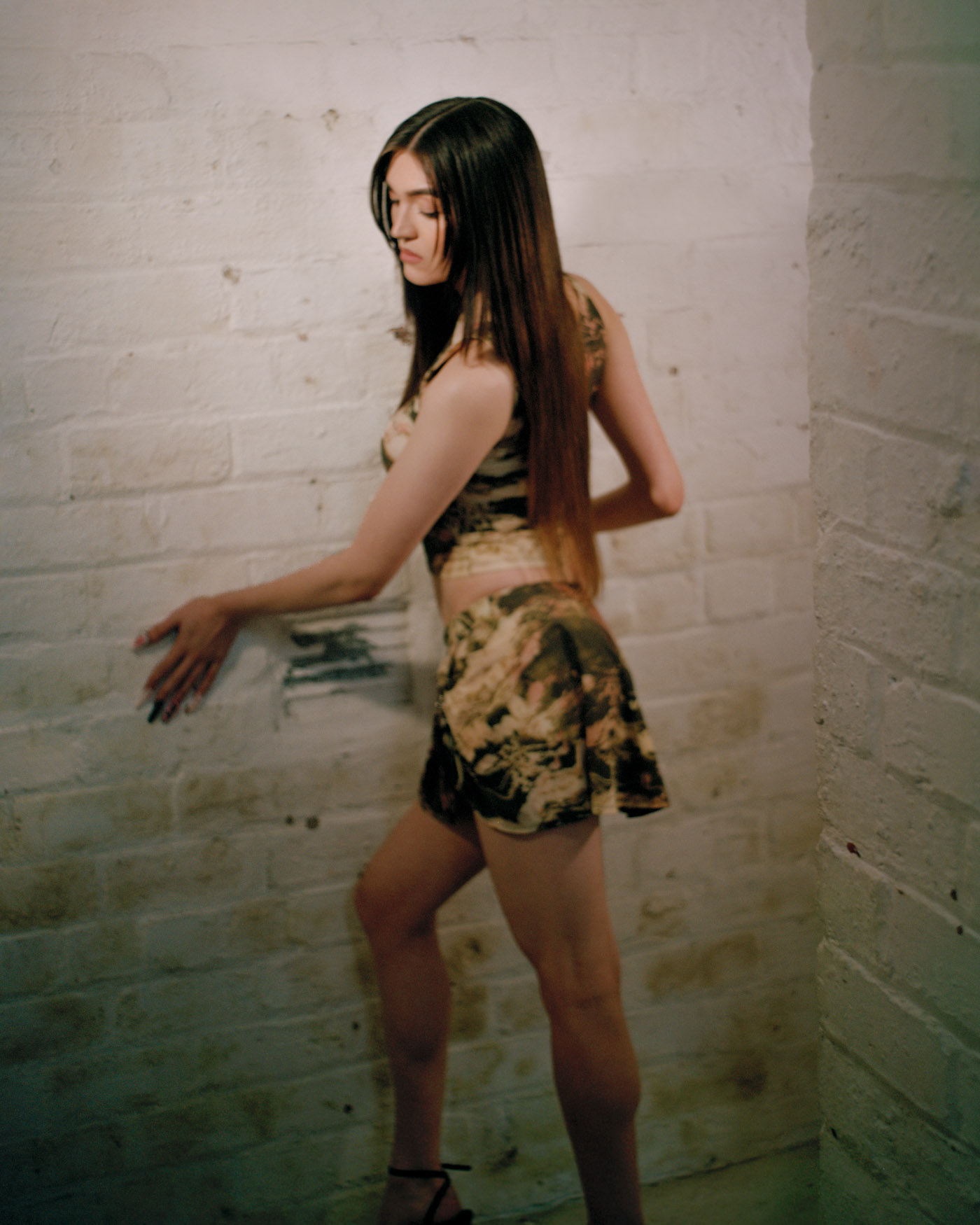
Lourdes wears set by Prier de Saône
What movie should everyone see?
I think everyone should see every movie. Unfortunately there isn’t enough time in our lives to do that. However, I do think that people should aim to watch things that challenge their perception of the world, because if you aren’t expanding your outlook then your life is almost like a vacuum. Look outward to change the inward. And also learning new things is fun. I love movies that are really about nothing. Just people living and dealing with life. There’s beauty in the mundane. There’s so many movies that tell different stories that people should see and none are more important than the other. I always find myself going back to Sean Baker’s Tangerine. I want more movies about people who are never spotlighted.
Where would you get married?
I used to say I didn’t believe in marriage but lately I’ve been thinking more about it and I think it’s truly for me. Like the drama and theatre of it all — I simply must! I am still not sure if I believe in the sanctity of marriage itself but I also think you don’t have to believe entirely in something to do it. I think it’s a really beautiful thing to tell one person that you love them and want to spend the rest of your life with them. I want to see more transgender women getting married.
What are you reading?
I’m always reading something. I think reading is one of the greatest things you can do with your time. Similarly to movies, I think you should aim to read things that challenge your perception. I love books that deal with interpersonal relationships. Again beauty in the mundane. I’m currently reading The Secret History by Donna Tartt. It’s been on my shelf for literally 20 million billion thousand trillion years but recently it felt like the right time to pick it up. I’m also reading a book a dear friend of mine gifted me on my birthday this year called Lovebug by Daisy LaFarge. I’m already sad that I won’t be able to read every book that I want to so I try and be somewhat selective. I know what I like and so you probably won’t ever see me reading books about dragons or such things. I like my books heavy on reality.
How often should people post online?
As often as you want. Never forget the overarching fear of a digital footprint though. I’m currently trying to reshape mine from yeti to stiletto.
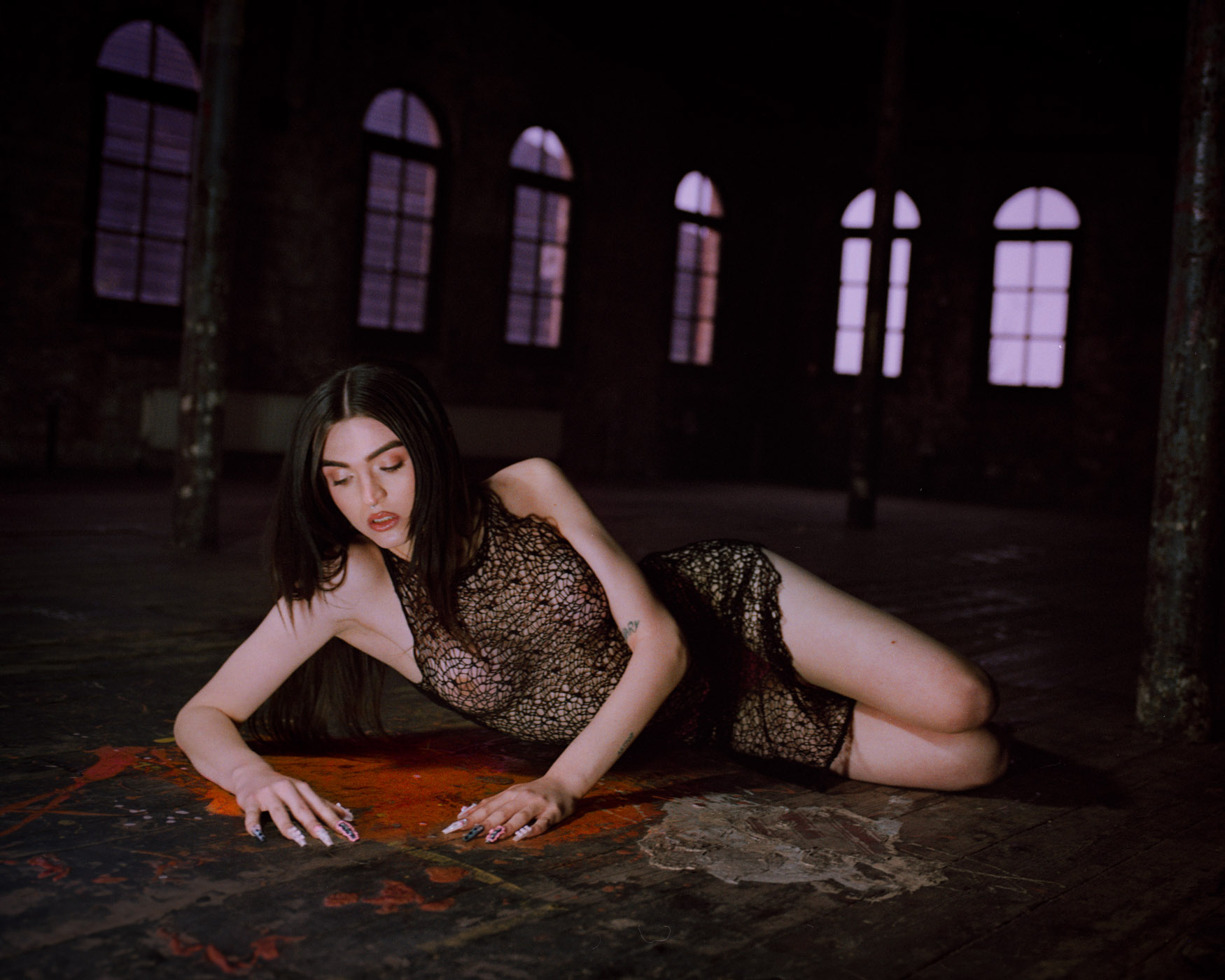
Lourdes wears dress by Badcollage
When do you get nervous?
Before talking to someone about how I feel. Whether it’s good or bad. Growing up I kept a lot of how I felt to myself so now I try to be more open with my emotions. I’m definitely a lot better at it than I used to be but there’s always that trepidation before telling someone how you feel in case they react badly. But truthfully, if that person is meant to be in my life then me telling them my feelings shouldn’t be scary. They can’t dictate or have an opinion on my feelings. Just because they don’t feel them doesn’t mean they aren’t real. They can, however, try to understand my feelings and I think that’s often where people slip up. I’m guilty of it myself. We all are. Like, we are all literally figuring things out and this is everyone’s first time living life. As cringe and as cliche as it is.
What’s your least favourite trait in others?
Lack of empathy. And stupidity. Not being able to apply context to situations. Also bad style.
What trend needs to come back?
Broken bones and train track braces. Having lipstick on your teeth.
What was your first job?
I worked as a customer service assistant at a toy store. I had the job for like two years and let me tell you, I wore that blue fleece like it was a uniform to be proud of. I remember being 16 or 17 years old working 42 hours a week whilst in my last year of school and also being somewhat mentally unwell and doing a thing called the ‘military diet’. I’m not going to elaborate on that part because I don’t condone mental illness in youths anymore. But I can tell you that at Christmas time all the checkout girlies had to get customers to fill out catalogue forms. A form that had their address, name, et-cetera on it so that the Christmas catalogue could be sent to their door. We were tasked to get, like, 10 on a shift or something and I literally remember being so lazy about it that I started writing my own home address and then the names of famous pop girls. Lady Gaga, Beyoncé, Rihanna. Both their stage names and their government names. I got away with it for a good few weeks before someone caught on and was like ‘Huh?’ It was pretty genius actually and luckily I have a vast knowledge of pop stars who are women.
What are you most proud of?
I’m proud of everything I have accomplished so far and the journey I’ve been on to get here. Life hasn’t always been easy, especially in the mental side of things. In this case we are talking clinically mental. I think it’s a testament to my resilience that I am able to be who I am today and have morals and beliefs that I’m passionate about. I’m proud of my ability to continue to love with an open heart despite facing adversity and heartbreaks along the way. And I’m proud of my friendships that I’ve made. Life really isn’t easy, especially for certain marginalised people in today’s society. No one will ever be able to take who I am away from me and that’s something I hold close to my heart.
What’s the most trouble you’ve ever gotten into?
Everybody knows I’m a good girl, officer. No, I wouldn’t do a thing like that, that’s for sure. The house was already on fire, I swear I’m not a liar.
Who would play you?
In life? Men have played me more than I care to admit but none have lived to tell the tale. In regards to who would play me in the okaylourdes feature length film I would say Leslie Jordan in my early years and Jessica Lange in my current years. I would obviously love Chloë Sevigny to do it but I think she’s busy looking for a sublet in New York.
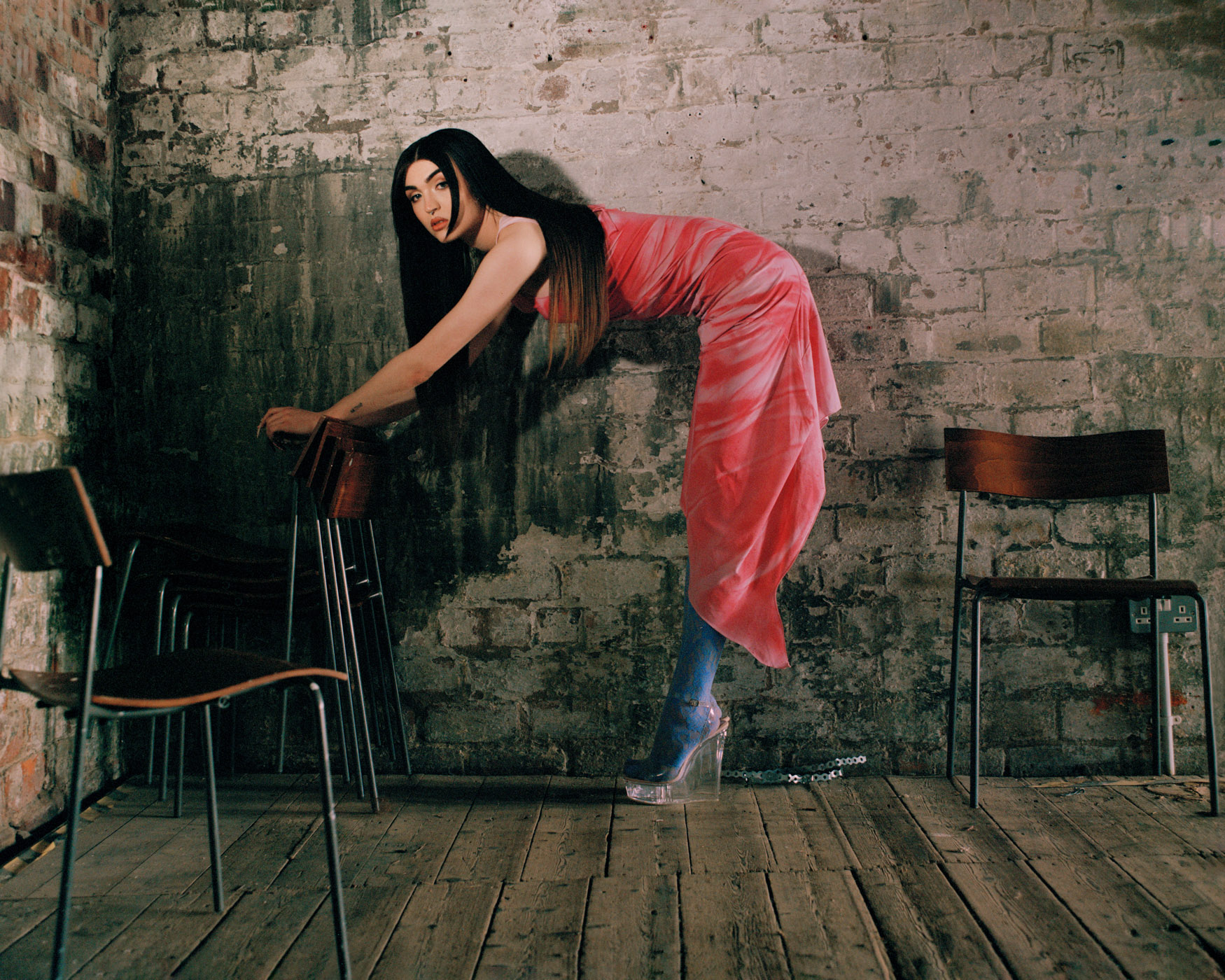
Who influences you?
Those who have came before me and those who will come after me. Life inspires me. My friends inspire me. Love inspires me. Trans women inspire me. Individuality inspires me. Being a child of the internet inspires me. Femininity inspires me. If you look hard enough there is inspiration in everything. Something that is inspiring to me isn’t going to be inspiring to someone else. I love that.
What should everyone stop doing?
Making life hard for others. Stop being silent on the issues that face transgender women in today’s society. Your allyship isn’t true until you’ve turned it into action. Unfortunately the voice of the marginalised community will never be enough to be heard so amplify that if you are able to. Use your voice for good if you are in a more privileged position. Everyone is okay to digest the spectacle and theatricality of trans women but please ask yourself: what have you done today to help us? And if you can’t formulate an answer, do better. Our rights and lives are in purgatory right now with the potentiality of having our existence ripped away from us. Do something before it’s too late. Unfortunately your thoughts and concerns mean nothing to a dead body.
When do you feel hottest?
When I’m in the oven baking at 180°C.
What’s the most underrated thing about you?
Everything about me is underrated. Maybe I would say my ability to romanticise anything. It’s both served me well and not so well… but alas some would call that the duality of women!
You’ve done a lot. What else do you want to do?
I’m getting the living room done soon. And hopefully I’ll be working on the kitchen after that. I’m slipping away for the best part of a year soon and when I return I hope no one has forgotten me and everyone loves what I’ve done with the place. I think my life has led to this point of feeling like a painter with all the paint in the world. I know the outcome is going to be beautiful but support is always needed to decorate. I know my life, whatever route it takes, will be full of love.
What’s something no one knows about you?
I miss everyone that’s ever been in my life and is now no longer in it. Friendships, relationship, summer flings, winter flings, whatever the name for whatever it was when certain people were in my life. I’m such a hopeless Cancer at heart that I can’t help but miss people everyday. Not all of them had a sad ending but the ones that do sting a little more. Ultimately that’s the path we were destined to take together. I think life programmes us all to act as if nothing phases us but unfortunately everything phases me. It’s very Oprah of me to be like, ‘I miss you, you are missed, I miss you’. I hold nothing but love for all these people in my heart and if life is written that we find ourselves back together so be it and if not that’s okay too. Hello, it’s the most famous woman you know on the iPad.
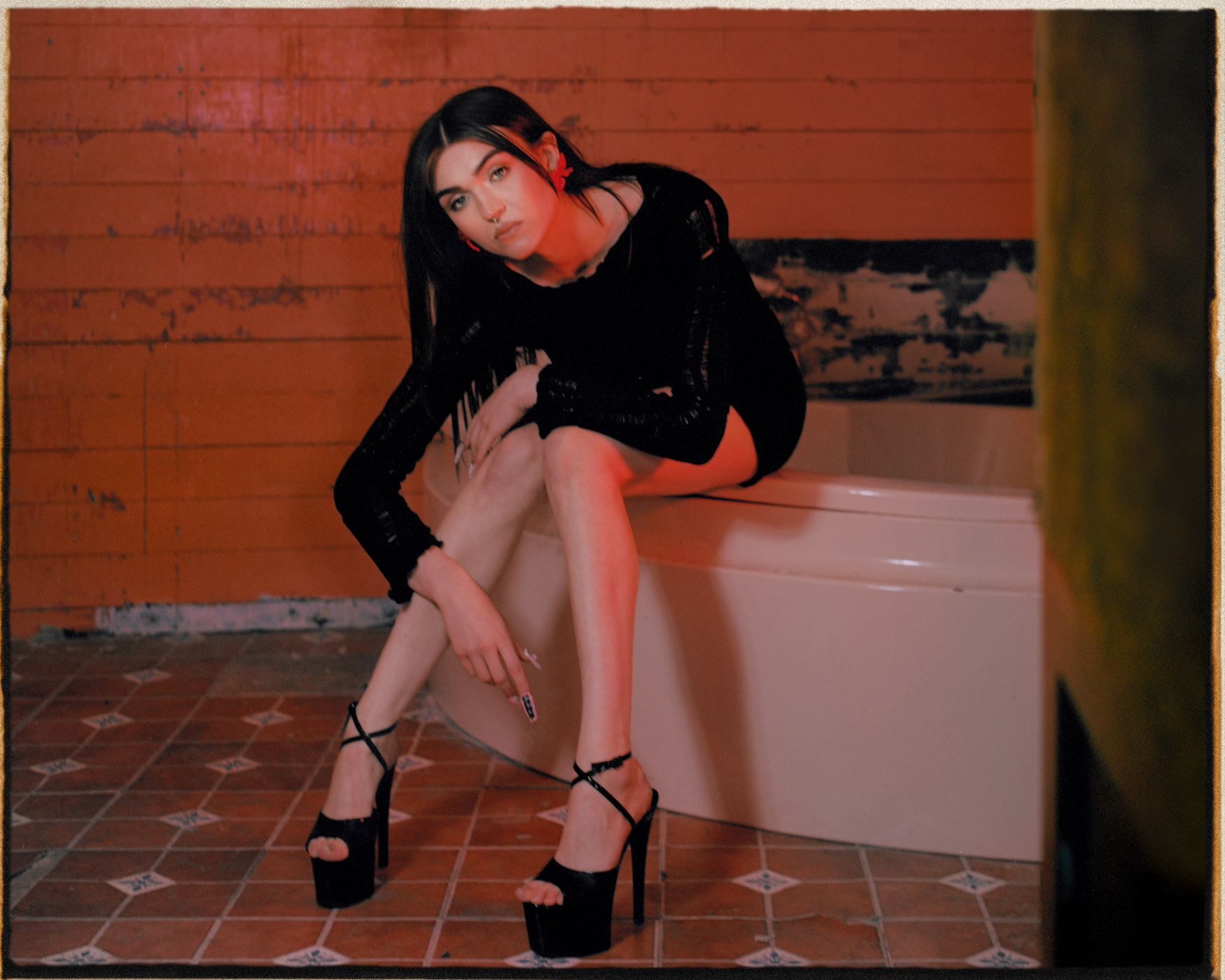
IN TALKS with DIRTYDMS
08.07.24
Photography: Bethany Grace
Words: Graham Peacock
Alice Vink (aka Dirtydms) is a Rotterdam-based DJ making waves as much for her modelling as for her art. Deeply embedded in the city’s creative world, Vink’s experience as an artist living and working in the city speaks to the immense talent and vibrancy at play in the scene there. With a fluid approach, determined vision, and a love for her community, Alice seems driven by togetherness.
Her work, at once delicate and industrial, natural and experimental, is a valuable insight not only to how one artist’s work morphs across various mediums, but how one individual can offer such a clear insight to their city’s burgeoning art world.
You work across a lot of different mediums — modelling, artwork, music. Do you find the three mediums you work in have a significant influence on each other?
I’ve been modelling since I was 14, so this is the medium I’m most comfortable with. In creative shoots, I see modelling as a sort of dance. Posing in front of the camera is definitely something you have to get comfortable with at first, but after doing it for so many years, I think I’ve found a flow in the movement of my body and expressions. Modelling is also a form of communication between you, the photographer, and the rest of the team. You inspire each other, and sometimes, without talking, you understand each other. This type of non-verbal communication and movement is something I feel when I DJ. You and the crowd feed off each other’s energy and create a movement together. This movement is something I try to find in my 3D work.
When I go clubbing and the night and music are good, I can get so inspired for new visuals. I think the movement of my body is very necessary to come up with new ideas. That’s also why I love walking to get new ideas. My work is very much inspired by nature and the world I see around me. During the day, I love to go for long walks to observe my surroundings, and at night, I enjoy seeing the nightlife communities and moving to the music. I try to capture a sense of space, balance, and motion in my 3D work. My 3D work is always inspired by the music I listen to, but also by the incredible biology of plants, and the insane shapes and colours found in nature. When I create, a question that inspires me is, ‘What is nature?’ I like to think of this question and all of its possible answers. The answer seems simple, but once you try to define it, it’s quite challenging.
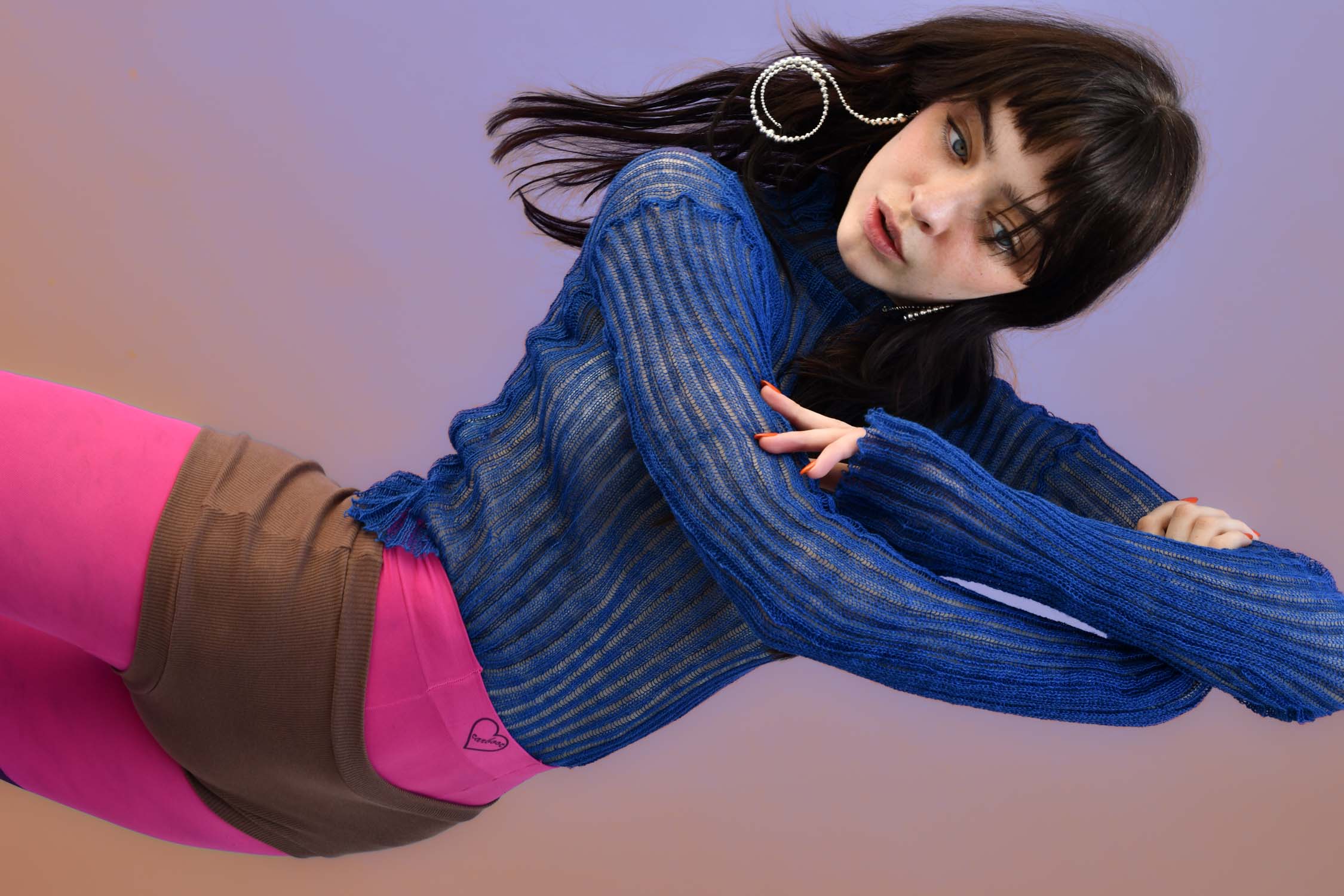
In terms of your music, how would you describe your sound?
I always find it a bit hard to describe my sound. I love bass, detailed sounds, and all types of genres. I also like funny, cheeky tracks. Again, I love it when music just makes you move. I love digging [for new music] so much; it’s one of the things I spend the most time on. I make a new playlist almost every day. With DJing, I love finding tracks that sound like they were made for each other. They flow together in a type of energy. By placing them beside each other they can surprise. DJing is something I never thought I would enjoy this much. I’m very happy I found this medium.
What is it that draws you to making music?
I don’t produce my own tracks yet, but I would love to.
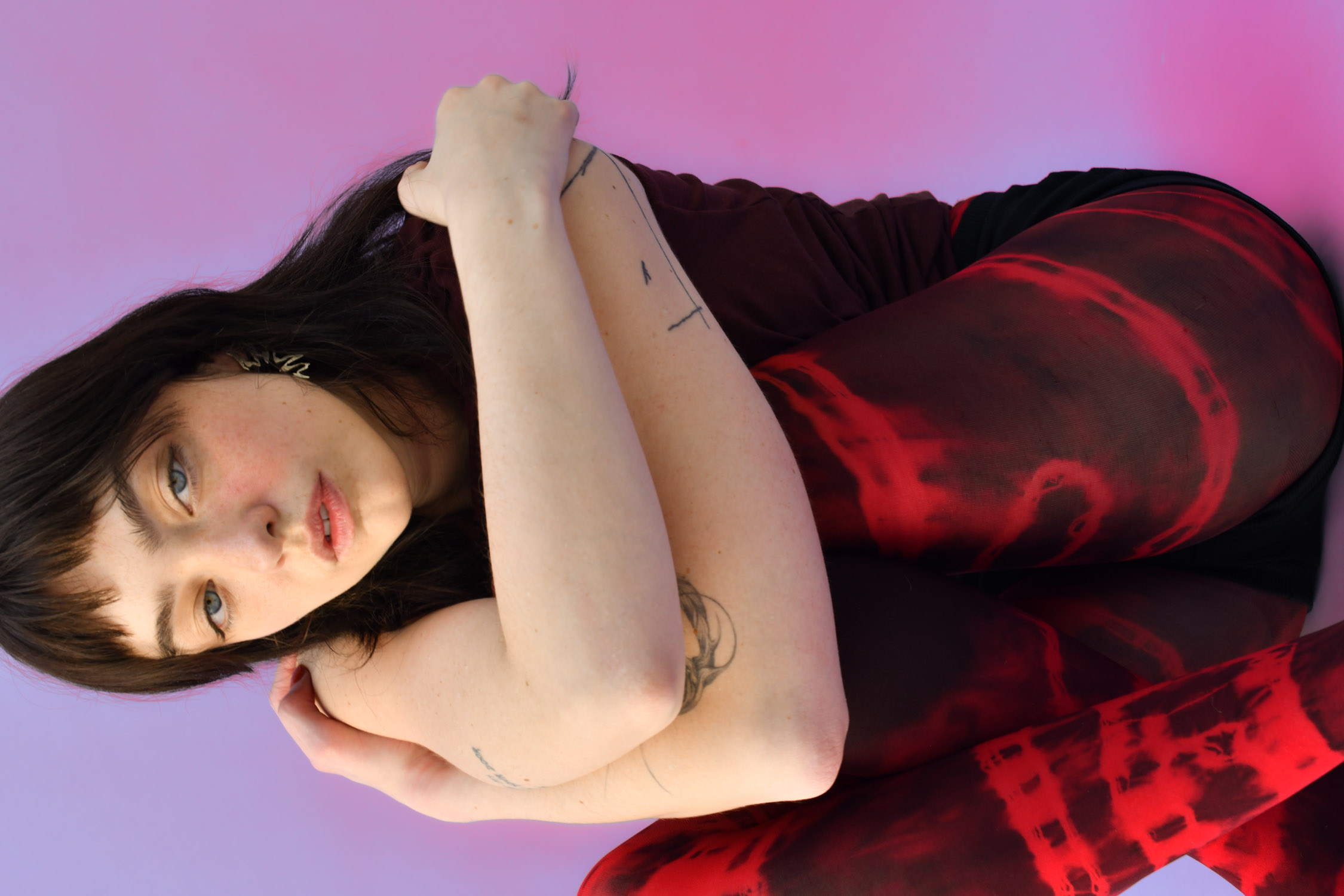
Working as part of club nights and DJ communities seems like such a collaborative process. What’s the community like in Rotterdam?
In Rotterdam, there are many talented DJs and producers, and I think there is a lot of support for each other. It feels like a family. Recently, a couple of venues had to close, which has made a difference in the scene. I hope there will be more venues in the future.
How do you see the city changing over the next few years?
I think collaboration is incredibly important in the creative industry and nightlife. You can get so inspired and energised by each other. It’s amazing when you find people in your life with whom you share the same passion as you, and it’s even more beautiful when you can build something together. I believe it’s very important to cherish that. It’s also just a lot of fun.
Are there any other mediums you haven’t explored you want to tap into?
Other than music production, I am very much focused on growing my DJ skills and 3D work.
IN TALKS with NIKHITA
28.09.23
Photography: Kate McMahon
Styling and words: Graham Peacock
Set Design: Isabella Atan
Photo Assistants: Mark McKinlay & Luka Windsor
One listen to Nikhita’s catalogue unmistakably denotes a Scottish star on the rise. In recent months, the Edinburgh-based musician has found herself under the spotlight of BBC Scotland Introducing, and landed a place on BBC Asian Network’s Artist of the Week. With a voice that cooly moves between hypnotic and soulful, Nikhita has been turning heads with a string of single releases and performances in her home city and beyond.
The musician’s influences are as extensive as her subject matter. R&B, dance, and soul provide the framework in which Nikhita explores family struggles and selfhood, mythology and relationships. It’s authentic and eclectic, moving and deeply reflective. It’s unsurprising, then, that with only a few single releases, Nikhita has managed to capture the attention of Scotland’s music scene, which waits in anticipation for the new music she talks of excitedly and passionately during our shoot.
Nigh on the release of this material, Nikhita joins us on a walk through the forest. Moving between cavernous rocks and overgrown shrubs, and as the sun sets, the Golden Child singer sinks comfortably into the setting, discussing her practice and teasing what’s to come. After a day spent with her, the appeal is clear. Nikhita embodies the best of the Scottish creative landscape – a love for what she does, and a desire to create with those around her.
It was so lovely working with you on the shoot, how did you find it?
I loved it! This shoot is definitely one of my favourites I’ve ever taken part in. It was so inspiring to feel the amount of thought that was put into every aspect such as the beautiful pieces I had the honour of being styled in, the location, lighting, set design- and the overall vibe of working with such a lovely team of creatives.
When we were planning this shoot we wanted it to feel very ethereal and otherworldly. That’s how your music sounds to us. How do you describe your music?
Ethereal and otherworldly is a great description. The other day my partner asked me if I had a superpower, what would it be? I told him it would be to be a Siren. That mesmerising, spellbinding, dreamy quality is what I like my music to have sonically, as well as telling a story lyrically.
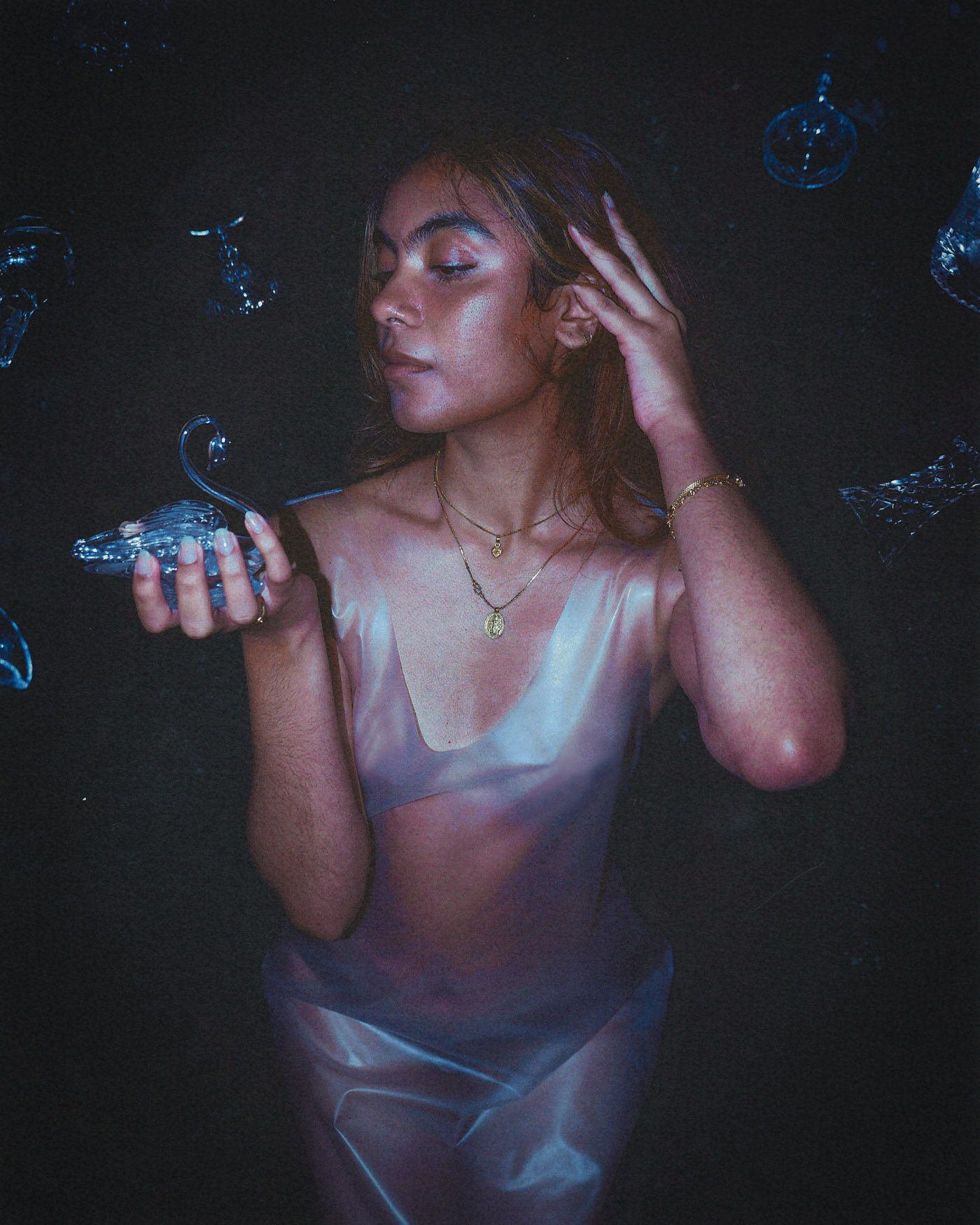
How much of what you write is based on real life?
A large part of what I write is based on real life. When I first got into writing and making music, it definitely was – and still sometimes is – a form of therapy for me. It allowed me to explore some heavy thoughts in my mind, by writing out my stream of thoughts, turning them into something I saw with an inspiring perspective.
However, inspiration for me comes in many forms, may that be real life situations, nature, literature…and on and on! One of my favourite songs I am working on at the moment is based on the passionate yet destructive relationship of two fictitious characters in a book I just finished called Cleopatra And Frankenstein. It’s a bestseller at the moment, but definitely not overrated – I highly recommend you read it.
Your latest single Golden Child is about a family relationship, and a family struggle. It’s refreshing to hear music about the complexities of familial love, was this something you consciously chose to explore?
Yes, the complexity of familial love is something that’s prominent in my life, so writing Golden Child really felt like getting some weight off my chest.
The song explores the clash between cultural and queer identities, which can really cause complexities in traditional families.
Seeing how many people have resonated with this song has made me very emotional in the best way. Having conversations with others who have grown up in a similar environment where our identities are not accepted or understood by those we love or are expected to makes us all less isolated in the feeling
You blend so many different influences together in your music, they overlap so beautifully. Other than music, where else do you go to for influence?
Thank you. To me, chords hold such a range of strong emotion, and when messing around on my guitar, I tend to come up with the direction of a track. Other times I will start lyrically, and then piece the music together. The process varies really. And when I have formed the chordal and melodic basis of a track, I will be able to start hearing what other sounds the song needs, to form the arc and tell the story, that’s what music production is, and I’m developing my ear for sure. I’ve worked with some super talented producers who help my demos come together into fully formed ideas.
The sound you create is really soothing. Does writing make you calm, or does it stress you out?
When I’m in the flow, writing brings me so much peace, but something I struggle with are the moments of mental overexertion where I feel like I don’t have the space to be creative. This can be a very stressful thing, but I think it’s important not to hold yourself under the pressure to be constantly creating as an artist, as inspiration and space can be something that fluctuates.
When you perform, what kind of atmosphere are you aiming to create with the audience?
Transporting. I aim to make my audience feel like they are lost in a dream, and create a relaxing, yet thought provoking environment, so they listen lyrically as well as sonically. Music is like meditation to me, and that’s the feeling I aim to create in my shows.
During the shoot you mentioned your upcoming music. What can we expect?
No set dates yet, but the next track I have set to release may be my favourite track I have created so far! I have been working with a close friend (and very talented producer) Leon Morris, to create a track with influences from nature and struggles with mentality. Working on music with Leon is so great because he is able to materialise exactly what I envision, as well as adding so many other crazy, and powerfully subtle elements. The feel of this track is actually very reminiscent of the visual aspects of what we have created in this shoot. I am very excited to share!
IN REVIEW the LUNCH POP-UP
14.09.23
This summer, the second LUNCH Concept POP-UP descended on the Scottish capital at Stills Gallery. Located just off the world-famous Royal Mile, during Edinburgh’s busy festival season, we welcomed 40 designers into the gallery space.
The idea for our ongoing series of POP UPs stems from our aim to offer the unique chance to browse independent designers in a physical environment. Building on our Glasgow POP-UP in February 2022, our Edinburgh POP UP brought together our friends, collaborators, and partners from across the city and further afield.
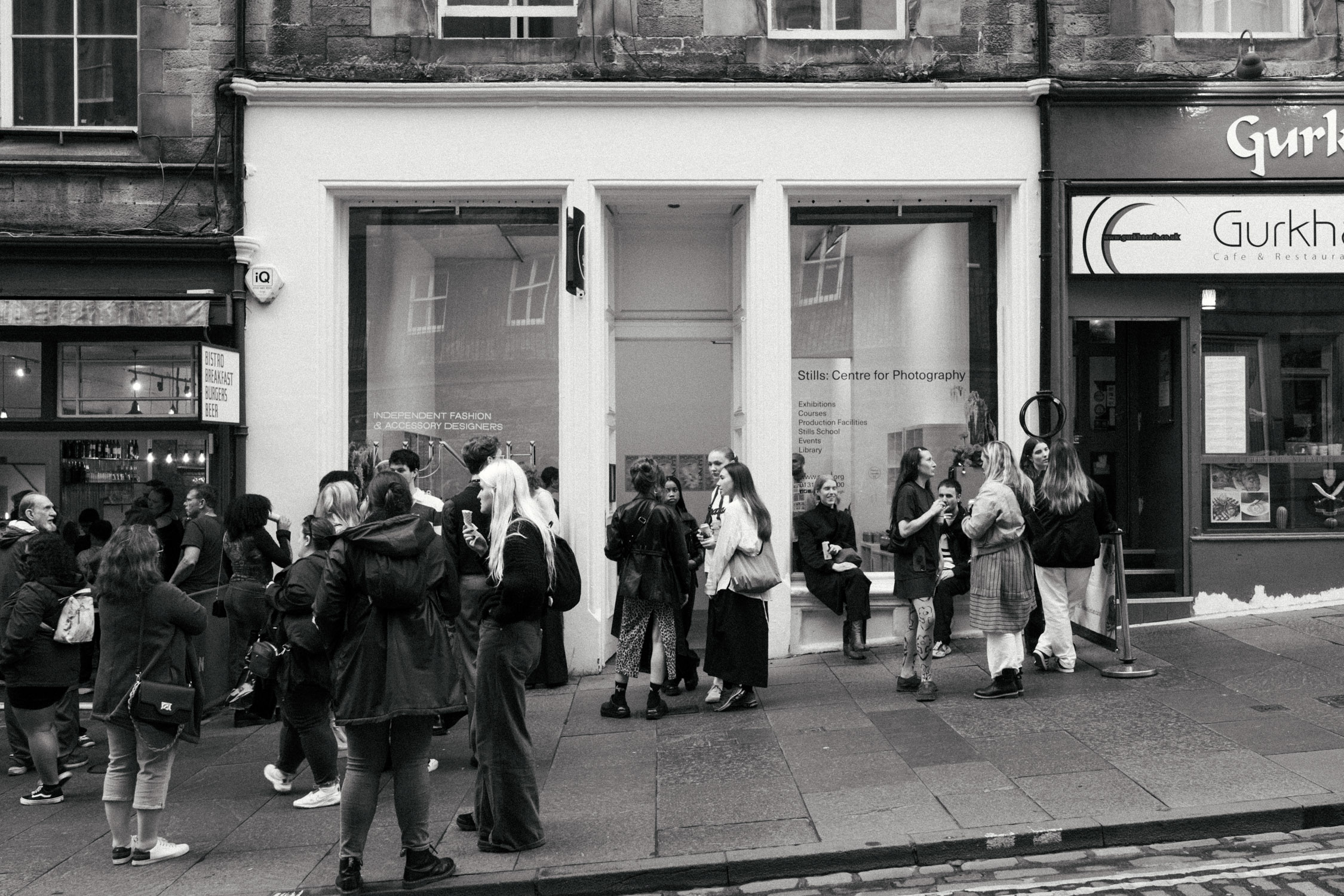
Our Glasgow POP-UP was a celebration of our home city, and the artists in it. For our stay in Edinburgh, we brought some of our favourite creators with us. RIPE, the magazine haven native to Glasgow’s Barras Market, took over the Stills bookstore. PAS.COS returned with grills and jewellery consultations. Glasgow’s G41 Gems offered appointments for their signature tooth gems. Olivia Rose stopped by for her own unique shopping experience. Also returning was Sophie Mahandru, florist and set designer who transformed our Glasgow POP-UP space into a beautiful, surrealist feast of fashion and nature, and this time around sculpted the beautiful PLANET LUNCH.
Beyond a shopping experience, our Edinburgh POP-UP offered the important opportunity to celebrate with the growing creative industry in Scotland the beauty of their creations in a shared experience. Captured by Stephen Lister is a selection of images from our opening night: a gorgeous party with long term collaborators and new friends we wish we could relive.
We’d like to give a huge thank you to everyone who attended, visited the POP UP, stopped to chat with us about their love for our designers’ work, and helped support an industry we care so deeply for.
And if you missed out on coming along this time, you won’t have to wait long to hear about the next one.
See you soon.
Love,
Bethany, Tamara & Graham
IN TALKS with PONYBOY
03.02.23
Hair: Ponyboy
Photography & Set Design: Kyle Crooks
Styling & Words: Graham Peacock
MUA: MV Brown
Featuring @okaylourdes, @apieceofcabbage, @fran.k____, @samanthamaria268, @araecullen
Photo Assistants: Isabella Atanes-Enepi, Kate McMahon & Nova Needham
With thanks to Limitee PR and Dandy
Scotland’s queer creative community needs Ponyboy.
Founded by couple Dill and Reece last summer as a hair studio, Ponyboy has quickly evolved into a multi-hyphenated queer space specialising in editorial hair, high impact spectacles, and elaborate nightclub productions.
Bringing together queer creatives from almost every corner imaginable in their showcases (art, music, drag, ballroom, fashion, and more), Ponyboy provides a framework for how a truly integrated creative network can help queer communities within cities blossom. Celebrating queer beauty, with an emphasis on the trans community, exists at the forefront of Ponyboy’s work. With an encyclopaedic knowledge of pop culture and historic fashion references, Ponyboy uses hair to indulge in fantasy and empower their clients, performers, and partygoers. Ponyboy understands the power of image, and the importance of safe havens. It is their equal celebration and adoration of Scotland’s queer community that has cemented them as a beautiful, unpredictable powerhouse.
This feature was shot by Kyle Crooks, with makeup from Glasgow makeup artist and Ponyboy resident, MV Brown. The names in this collaboration with LUNCH aren’t just mainstays of Glasgow’s queer creative world, they’re also Dill and Reece’s friends and frequent collaborators, adding an authenticity to Ponyboy’s work which is forever tangible in their output.
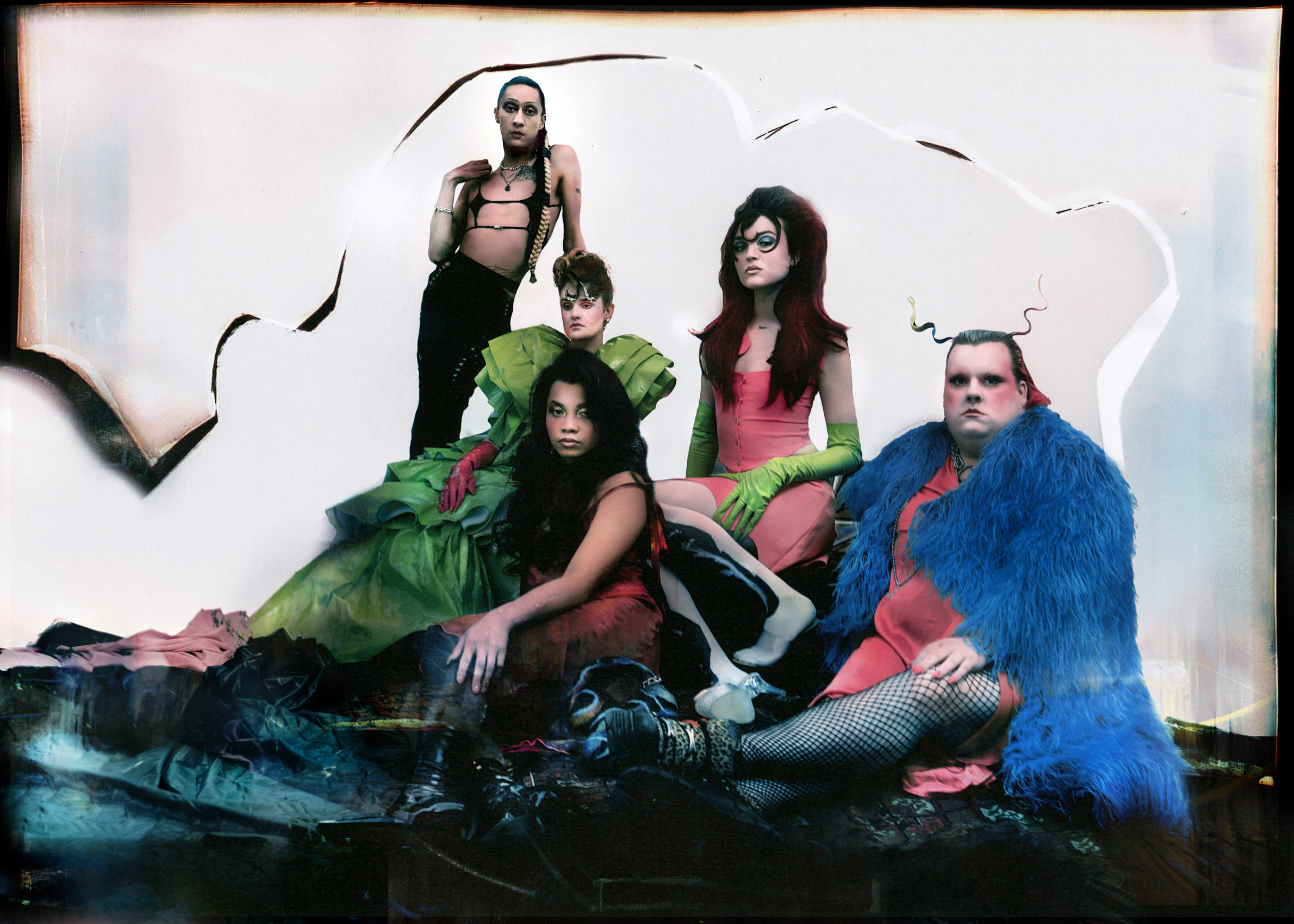
What influenced you to start Ponyboy?
Well, the name Ponyboy obviously comes from the SOPHIE song. When the name was suggested by a close friend of Sophie, we both immediately knew that Ponyboy was perfect. We were also surrounded by our chosen family at a festival and the moment felt very perfect.
We wanted to immortalise her legacy in the centre of Glasgow as a love letter to the queer community (specifically the trans community) because of how important SOPHIE was to us all and what she represented.
Our chosen family are primarily trans or non-binary and Dill especially has experienced the stress that comes with navigating the world as an often femme-presenting person and how hostile the world can often feel.
A huge goal of ours in creating Ponyboy was to contribute to the historical archives of queer and trans beauty because we see so much of it here in Glasgow.
Queerness is at the core of everything you do. We’d love to hear you chat a bit about the relationship between hair and queerness. What do you think hair has the power to unleash within people?
This is why we do the pay-what-you-can drop-ins for trans and non-binary people and have trans-specific discounts because we regularly get to see the power that hair can have in helping to outwardly reflect how someone feels internally. While the UK government has any control over us and continues to express a disdain for trans people, the community of Glasgow really need to rally together to uplift and amplify trans voices in any way they can.
Who or what do you look to for inspiration?
We find inspiration everywhere. The formative hangovers of Reece and I’s relationship were often spent watching runway shows and Reece could recite every notable collection for the past twenty years, whereas I just have a brain that never stops running at 110mph.
Our aesthetics are quite different. Mine is often an explosion of colour and texture and Reece’s aesthetic is much darker with sharper edges. I feel as though Ponyboy is the coming together of both these things.
With the Ponyboy showcase on NYE, I led the creative direction for the overall aesthetic and Reece and I pulled inspiration from 90’s club-kid aesthetic, but also Mona The Vampire and Mars Attacks!, so our moodboards pull from all sorts of animated universes, eras, or aesthetics.
We are constantly inspired by the people we work with and always want the finished project to have injections of everyone involved contained within it.
The work you did on this shoot is unbelievable. How did you go about putting the looks together?
We always work differently depending on the project, but always in a very collaborative sense with one another. With this project, when Kyle suggested creating a mylar chamber, I imagined the models appearing as though they were floating in water which felt symbolic of divine feminine energy and healing. Once that idea formed in my mind, I knew that I wanted the shoot to have a trans feminine focus and be heavily centred on high glamour as filtered through the aesthetic of each person involved. We ultimately always want to tell a story with everything we do.
We regularly explore different time periods and aesthetics, and were heavily influenced by Valley of the Dolls and hair ads from old magazines for Lourdes and Arae’s hair. We always want to juxtapose different eras and influences with every project to create a remix of existing ideas that feels new and exciting. Reece also adopts old techniques of styling hair and uses vintage tools whenever they do period hair as they want it to be as authentic as possible. I think it really adds another dimension to the finished project.
There’s no one else doing what you’re doing right now with the Ponyboy Showcases. What did you set out to achieve with these events? Where do you see them going in the future?
I think when Reece and I started dating and were discussing our plans for Ponyboy, I wanted to produce a club night to showcase their insane artistry as a launch party, but, with anything I produce, my ideas tend to grow arms and legs and quickly it becomes a production.
I was also keen to have the majority of the lineup be people under the trans umbrella because having a glam squad to help support how you see yourself can be a really transformative and euphoric moment, and it just makes it feel more worthwhile for us.
We are also very keen to make a Ponyboy Lookbook to create an archive of the beauty of Glasgow’s queer community, so hopefully we can secure some funding and make it happen in 2023. We are honestly sitting on so many insane images already that I’m holding onto until we can give them a place deserving of their gorgeousness, but I want it to be done correctly.
How do you decide who you want to collaborate with next?
We are always quite keen to ensure we are pulling from different queer collectives and ultimately we want everyone under the queer umbrella to see themselves reflected within the showcase.
I also used to be part of the ballroom community, and regularly attend, host, and perform at queer club nights, so we are very integrated with the queer community and exposed to the insane talent that exists here.
We’d also been fans of MV Brown’s work for years and they’ve quickly become a consistent collaborator and friend of ours, so we’re very excited to continue creating gorgeous visual spectacles with them throughout 2023.
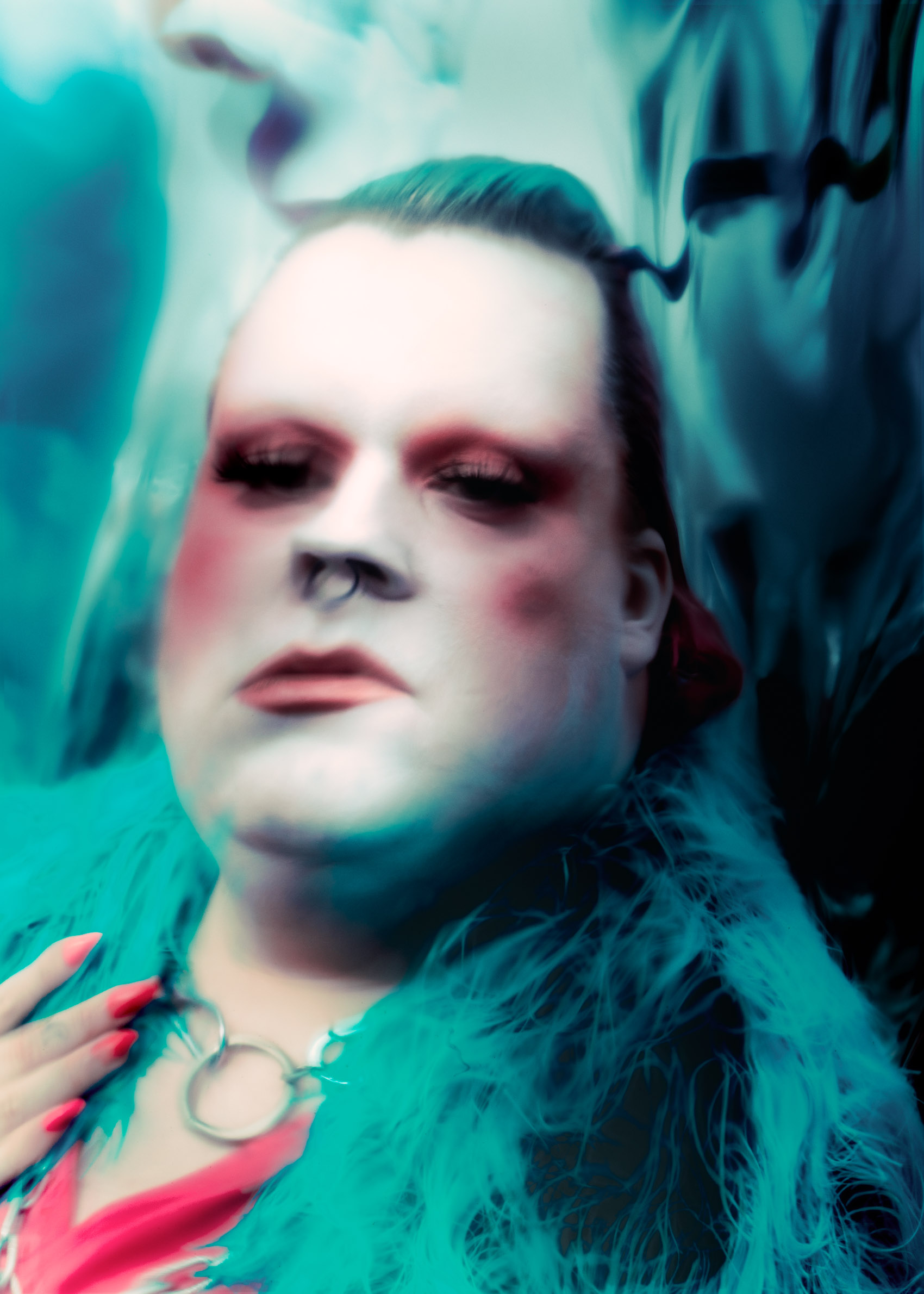

What are you most looking forward to right now?
Well, I’ve been asked to produce a Ponyboy Showcase for LSDXOXO on February 10th at Stereo which already has such a fun team behind it. There’s even more dimensions to it than previous events and I honestly can’t wait for people to see what we have planned and to showcase Reece’s artistry.
I’m also going to continue producing showcases at Bonjour and have some really fun plans for themes, shoots and performance ideas that I want to develop. There’s so much beauty in the room at every showcase and I can’t wait to continue creating space for that to take place.
We’ve had some producers from other cities suggest taking the showcases to their clubs. I think if it was feasible we’d love to be able to take some performers with us to other cities and create some cross-city queer collaboration. We also desperately need a holiday.
Separately, people should book in for hair appointments so we have the financial capacity to make our plans happen if you believe in what we’re trying to create – regardless of whether you’re queer or just support our mission statement as a hair studio and creative space.
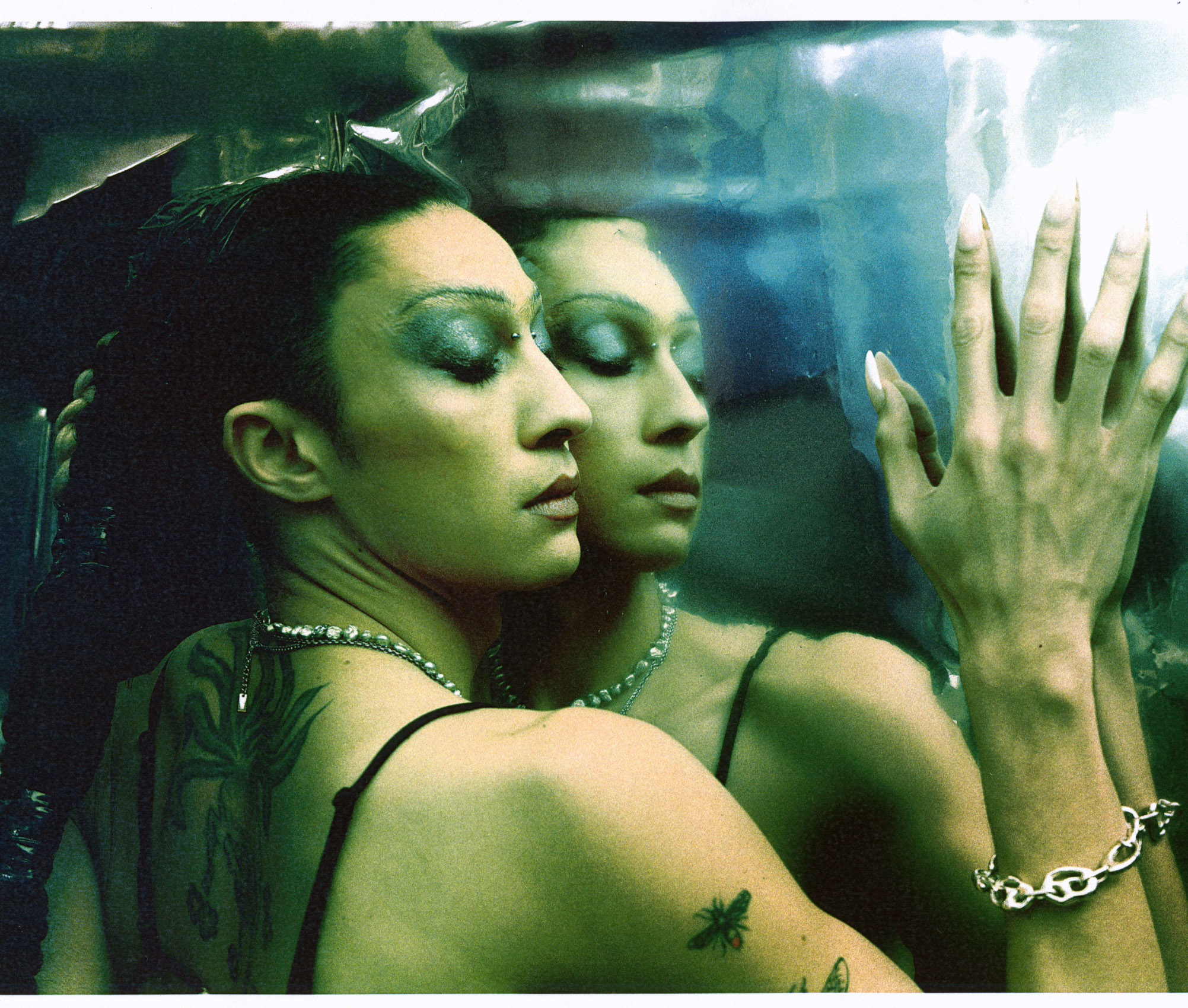
IN TALKS with SICK LOVE ZINE
21.12.22
Photography: Caitlin Ellis
Styling & Words: Graham Peacock
Featuring Izzy Gorman-Buckley
Izzy Gorman-Buckley created Sick Love Zine to place an emphasis on the underground. Originally from Brighton and now living between London and Leipzig, the writer and zine-maker centres queerness and creativity in her work, often immersing herself in different cities to examine the complexities of collective and individual identities within art. With an ethos centred on exploration and empowerment, Sick Love has taken its Editor-in-Chief around Europe to amplify the voices of artistic communities that exist outside capital cities.
Fresh from her last project, Sick Love Presents, that took her on a tour around Kyiv, Warsaw, Glasgow, and Leipzig, and now at work on her upcoming project, we caught up with Izzy to talk about honouring the legacy of zine-making, and her plans to expand Sick Love’s horizons.
Thanks for coming out in the freezing cold with us. Did you have fun on the shoot?
My pleasure! I had loads of fun, I got a nice tour of Glasgow and some cold weather training whilst frolicing in my gorgeous mesh attire! It’s always a treat to shoot, even in December!
Can you tell us why you started Sick Love?
I began Sick Love as a means to platform underground artistry and facilitate necessary conversation surrounding the issues faced by many young creatives navigating their respective industries. When I started, I was frustrated with the lack of critique I saw in mainstream arts media and I began producing content that explored the underground and highlighted the flaws which have led to unfair representation in the United Kingdom’s creative industries.
You have a clear desire to honour the history of zine-making in your work. What draws you to the format?
Yes this is really important to me! The history of zines as a method of expression, organisation and communication for those excluded from the mainstream media is something I find particularly inspiring, and I wish to build on a long history of print with purpose through Sick Love.
To me, the zine format allows for versatile written and visual communication, creativity and accessibility. Writing is my preferred method of expression, and zines allow me to display this in an engaging manner.
What are you looking for in an artist’s work that gets you excited about working with them?
I am interested in stories, works that bring me close yet leave me questioning. I simply choose work that intrigues me, that I want to know more about, delve into. This has always led me to people that make me feel the same way.
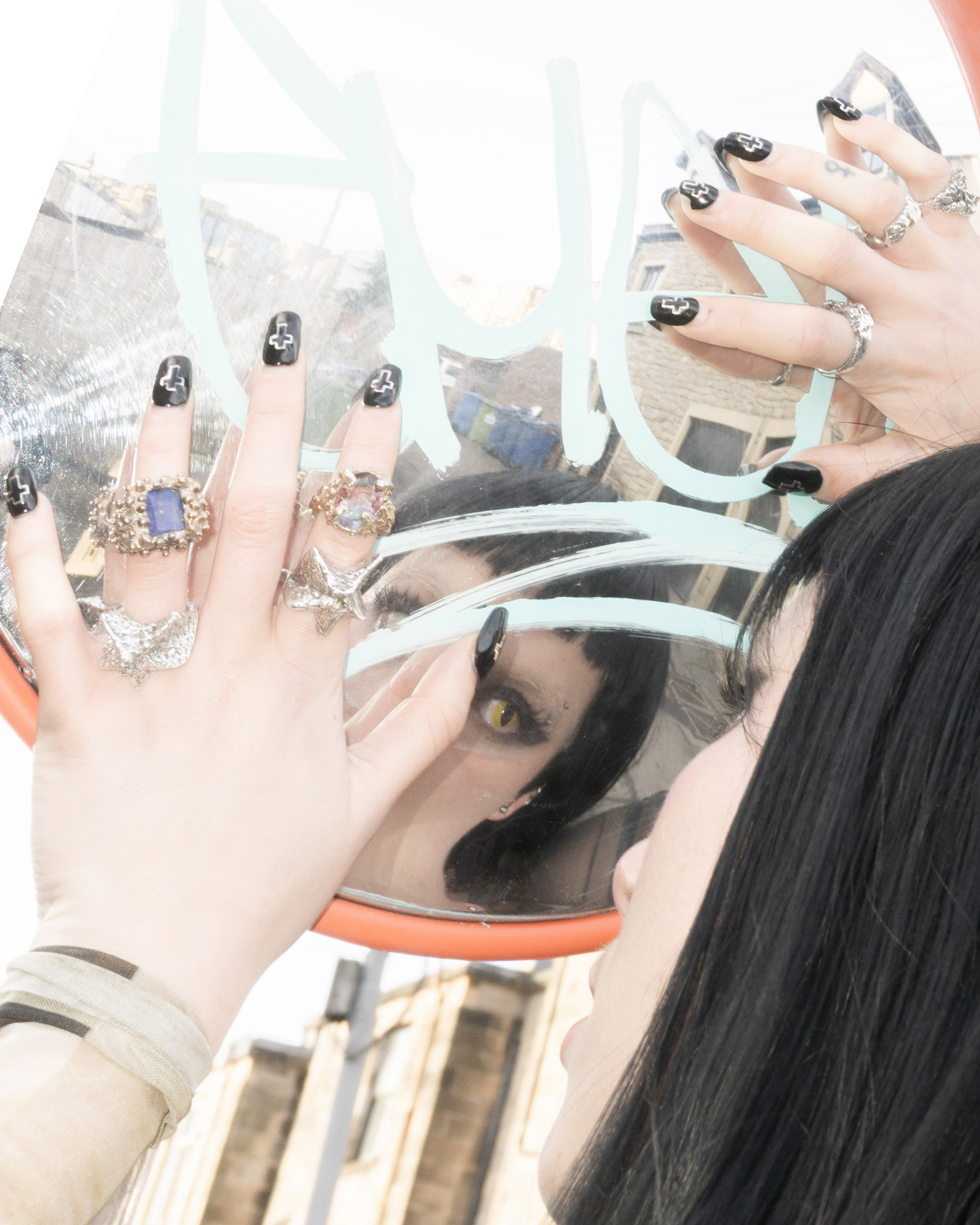
Izzy wears rings by @dormante_jewel
Your work with Sick Love Presents helped broaden the understanding of underground art within Glasgow, Kyiv, Warsaw, and Leipzig. What did the experience of putting this project together teach you about the way art impacts these creative communities?
Each community was markedly different. I knew art was important to these spaces, and that artists were utilising their practice to express, challenge and even provoke. Art allows many to process their own emotions and their environment, the challenges and beauties of both. I discussed this with all artists involved, as art has allowed many to challenge themselves and their surroundings.
Sick Love has expanded beyond the zines you create. You recently hosted a workshop at the much-loved Glasgow Zine Library. Can we expect more events like this to come?
Yes totally! Over the past two years since beginning Sick Love, I’ve organised a variety of events including workshops, exhibitions, pop-ups etc. Although the zine format is definitely a favourite, there are so many ways to engage with creatives or explore a concept that I am always interested in expanding Sick Love’s horizon with a portfolio of events and opportunities for connection.
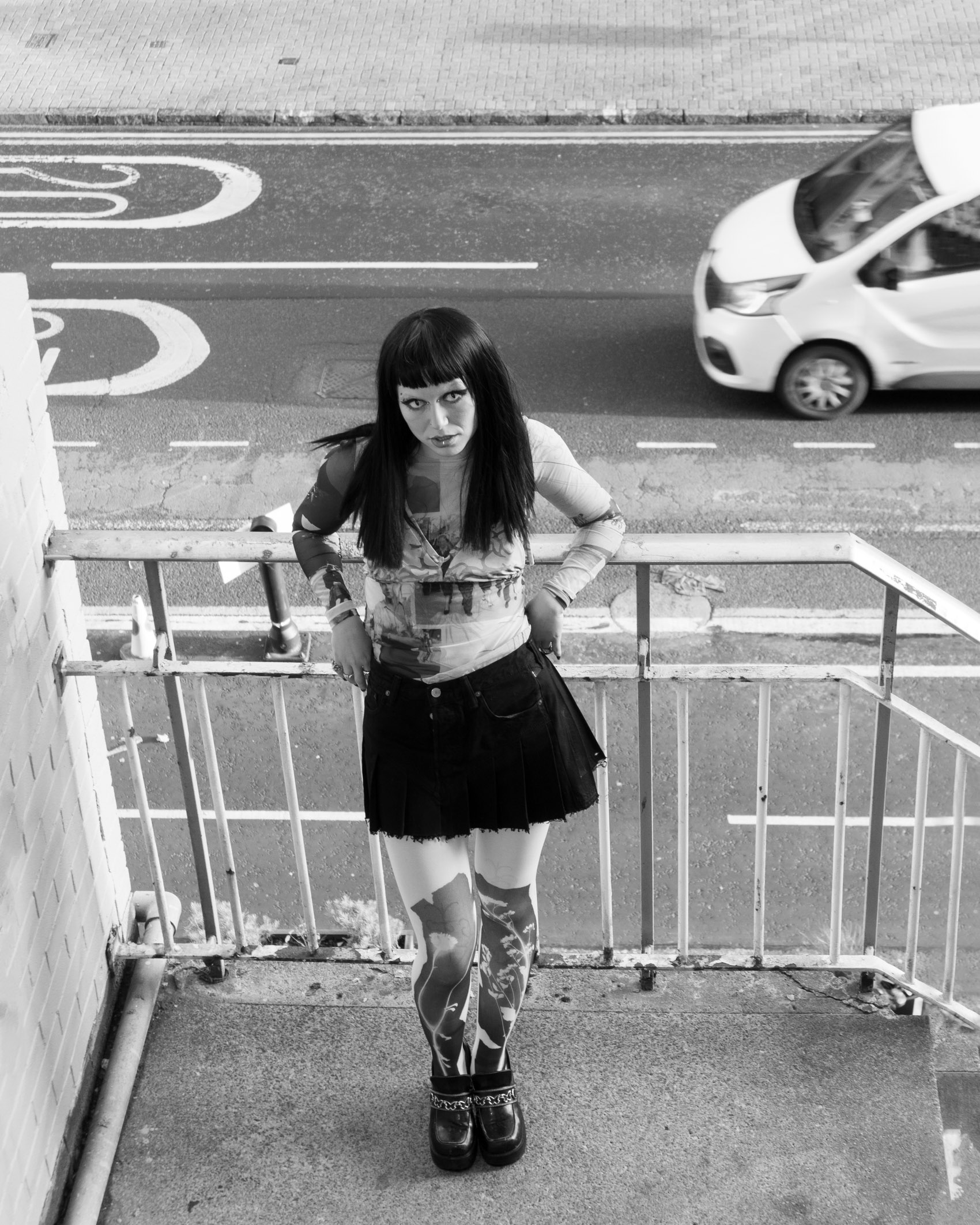
We’d love any hints you can give us about what the next iteration of Sick Love looks like.
Although I won’t give too much away, I’m interested in exploring queer pasts and presents. Queer art histories are often erased or overlooked in the canon, so my next project will celebrate queer histories, influence and icons whilst supporting the queer talent of today.
Where does the name Sick Love come from?
Ah this is a funny one! It came about quite randomly actually, and is the title of a cheesy song I liked in my early teens. It simply had the perfect ring to it…
IN TALKS with HUSS
24.11.22
Photography: Bethany Grace
Words: Graham Peacock
Makeup: Shaun Lavender
Model: Huss
There’s a tangible euphoria that radiates from the world of Glasgow’s queer club scene, and it’s a world that Huss threw himself into head first when he arrived in the city.
Originally from Egypt, the artist and performer came to Glasgow for university, and quickly found home in the high profile club nights designed to provide a sense of community for queer party-goers. Huss’s experience in Glasgow is testament to the power of the city’s independent organisations striving to provide avenues for community outreach and self-expression. His experience as an artist with an online platform speaks to the ways in which marginalised voices can establish autonomy over their future, and use their profile to raise awareness surrounding human rights issues. Appearing in campaigns with Reebok, Calvin Klein, and GAY TIMES, Huss has consistently used his platform to champion global queer liberation, and used his performances to celebrate his identity in the face of very real danger.
With LUNCH, Huss talks us through his remarkable experience in Scotland so far, and ambitions for the future.
Hey Huss, how are you feeling after the shoot?
I’m feeling fab! Thank you so much for having me.
So, you’re an artist and a performer. Can you tell us a bit about the kind of work you create?
I’ve used my work as an instrument to approach personal and cultural themes for most of my life – it has always been my voice in a life where it always felt like I never really had one. I always find it overwhelming beginning to plan a piece because I have so much emotion and frustration to pour out and I struggle communicating my feelings any other way. I use lots of mixed elements in my work such as installation, visuals, and audio to invite the audience into immersive performance and visual pieces. I want them to step into my world for a few minutes. I use my work as a queer Arab to raise issues facing the Arab world that lack acknowledgment, especially queer laws and how much it has always censored and endangered people like myself. The constant oppression on queer Arabs is not spoken enough about at all and I want my work to make even the slightest difference. It is so important to speak up for all those who cannot.
A lot of your work revolves around nightlife spaces. Can you tell us a bit about your relationship with these environments?
My work is very influenced by the queer nightlife spaces I got introduced to when moving to Glasgow from Egypt, as someone who was never given the chance to discover himself and his identity. I remember walking into the Art School and Shoot Your Shot for the first time and being so mind blown by all the artists and performers around me. I was so inspired, I felt loved, and I was no longer afraid. I was 18 years old when I got asked to do my first club performance. Due to the queer context of it, people back home found out and began to threaten to send me back to Egypt. This very queer safe space stuck by me and made me feel comfortable in going ahead with the performance. The artist and overall person I am today is thanks to those spaces.
You take on a masked persona in a lot of the work you create. Do you see this as always being part of your performance?
My mask originated from that first performance. It was never planned nor an aesthetic – I started wearing the mask because I was honestly petrified and needed to urgently protect myself and my identity. It was my way of continuing to do what I love and continuing to speak about these important matters without having to pay severe consequences. Throughout the four years of my
mask, I have received endless backlash, threats and even had one of my sketchbooks interrogated in an airport, but none of this stopped me. I’ve been asked this question about my mask a lot, but after last year when one of the campaigns I had done outed me to everyone back home, it is no longer safe for me to go back to Egypt. Although it’s heart-breaking, I am free. I finally have a voice. Right now, I’m trying to figure out how I’ll transition from using the mask in my work since I no longer need to hide my identity, but for all the exciting new work (and dream show!) coming early next year, I thought it was important for the mask to remain to tell this story that is very important to me. These will probably be the last pieces with the mask – a farewell to my past life of censorship.
You’ve talked before about your love for the internet. It’s kind of refreshing and almost surprising hearing the internet being talked of in a positive light these days. There’s a lot to love about it and a lot to hate. What’s your relationship to it like now?
I think talking about my love for the internet and social media is so ironic, because in so many ways it has made my life so chaotic and made me lose so much. It fully exposed and outed me to the wrong people. However, the ways I was able to navigate my art career amid all the censorship thanks to the internet was amazing. We as marginalised communities can create our very own virtual safe spaces, and that is something that helped form my work a lot. Whether it was opening my work for collaboration, or creating a virtual safe space where queer Arabs can mourn, rant, and create freely and safely, or whether it was finding discrete ways to promote my work. Fast forward to 5 years later, my work and what I stand for has reached places like GAY TIMES, Reebok, and Calvin Klein, been shown on billboards around the UK and so much more, if you told my younger self all this was going to happen and I was going to be comfortable in my queerness, I would have laughed in disbelief! Most importantly, I’m now safe in this country thanks to the internet – whether it was the emergency fundraiser organised or the GoFundMe, it was crazy to see so much action taken so quickly and I’m so thankful and humbled by it all. I couldn’t ask for more and strongly believe that this is just the beginning.
You had a lot of fun outfits in this shoot. What’s your favourite?
I had so much fun! They were all amazing, I was especially excited to see Trashy Clothing – it felt like such a coincidence! I’ve looked up to Shukri Lawrence and Omar Braika (the icons behind the brand) for a long time and I’m just so inspired by everything they do and the important conversations they
open. Trashy Clothing is a queer Palestinian fashion brand, and their goal
is to reclaim the Palestinian/Arab identity and they are doing exactly so, even Bella Hadid was spotted wearing one of their pieces. From the perspective of an Arab, yet alone a queer Arab – this is all so mind-blowing to me and gives me a glimpse of hope. It’s so important to support and speak up for queer Arabs. There is no queer liberation without Palestinian liberation.

